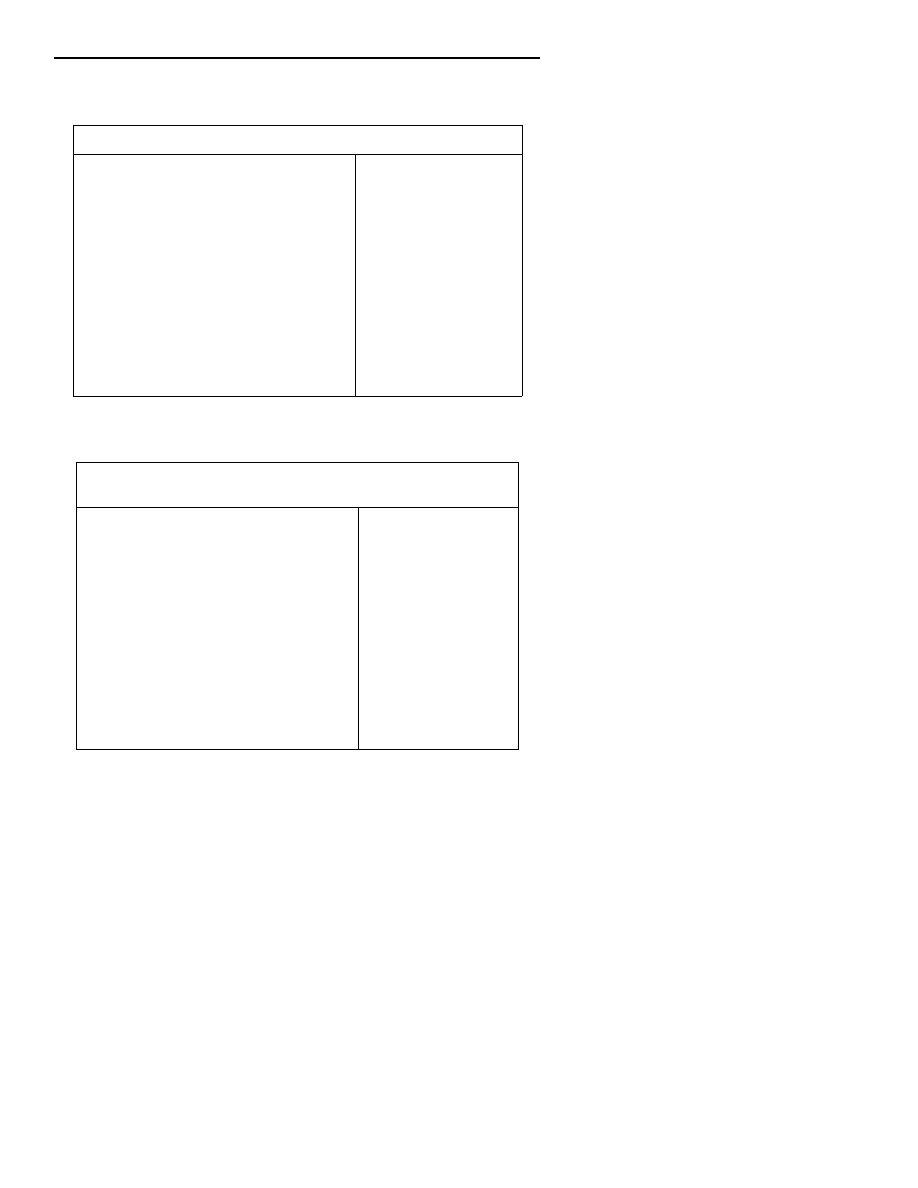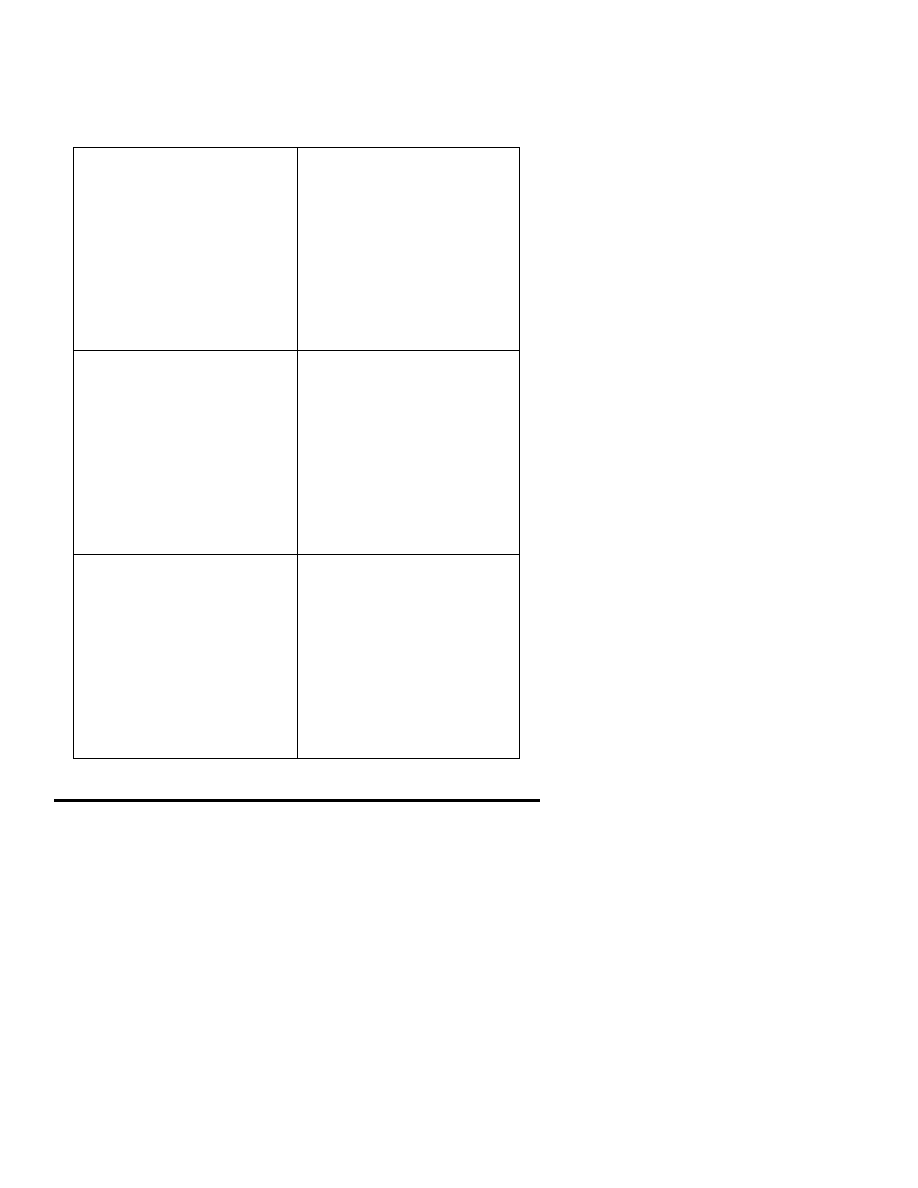
MCRP 3-11.2A
Marine Troop Leader's Guide
U.S. Marine Corps
PCN 144 000121 00

MCCDC (C 42)
27 Nov 2002
E R R A T U M
to
MCRP 3-11.2A
MARINE TROOP LEADER’S GUIDE
1. For administrative purposes, FMFRP
0-6 is reidentified as MCRP 3-11.2A.
144 000121 80

DEPARTMENT OF THE NAVY
Headquarters United States Marine Corps
Washington, DC 20380-1775
16 March 1995
FOREWORD
1.
PURPOSE
Fleet Marine Force Reference Publication (FMFRP) 0-6,
Marine Troop
Leader's Guide, provides a checklist of basic duties for the troop leader at
the platoon, section, squad, and fire team levels in combat operations.
2.
SCOPE
This FMFRP includes the specific duties of troop leaders in the
amphibious and helicopterborne assault, offensive and defensive
operations ashore, selected operations other than war, and special types of
land operations. Specific information concerning the tactics and
techniques applicable to the employment of these units is contained in
FMFM 6-4, Marine Rifle Company/Platoon
, and FMFM 6-5, Marine
Rifle Squad. This publication is designed for use as a field reference
guide.
3.
SUPERSESSION
FMFM 1-2, Marine Troop Leader's Guide
, dated 5 April 1979.

4.
CHANGES
Recommendations for improving this manual are invited from commands
as well as directly from individuals. Forward suggestions using the User
Suggestion Form format to —
Commanding General
Doctrine Division (C 42)
Marine Corps Combat Development Command
2042 Broadway Street, Suite 210
Quantico, Virginia 22134-5021
5.
CERTIFICATION
Reviewed and approved this date.
BY DIRECTION OF THE
COMMANDANT OF THE MARINE CORPS
C. E. WILHELM
Lieutenant General, U.S. Marine Corps
Commanding General
Marine Corps Combat Development Command
Quantico, Virginia
DISTRIBUTION: 140 000060 00

User Suggestion Form
From:
To:
Commanding General
Doctrine Division (C 42)
Marine Corps Combat Development Command
2042 Broadway Street Suite 210
Quantico, Virginia 22134-5021
Subj:
RECOMMENDATIONS CONCERNING FMFRP 0-6,
MARINE TROOP LEADER'S GUIDE
1.
In accordance with the foreword to FMFRP 0-6, which invites
individuals to submit suggestions concerning this FMFRP directly to the
above addressee, the following unclassified recommendation is forwarded:
_____ _____________________ _________ _________________
Page Article/Paragraph No. Line No. Figure/Table No.
Nature of Change:
Add
Delete
Change
Correct
iii

2.
Proposed new verbatim text: (Verbatim, double-spaced; continue on
additional pages as necessary.)
3.
Justification/source: (Need not be double-spaced.)
NOTE: Only one recommendation per page.
iv

Record of Changes
v
(reverse blank)

MARINE TROOP LEADER'S GUIDE
TABLE OF CONTENTS
Chapter 1 Rifle Platoon
General Duties . . . . . . . . . . . . . . . . . . . . . . . . . . . . . . . . . . . . . . . . . . . . . . . . . . . .
1-1
Rifle Platoon Commander. . . . . . . . . . . . . . . . . . . . . . . . . . . . . . . . . . . . . . . . . . . . 1-1
Rifle Platoon Sergeant . . . . . . . . . . . . . . . . . . . . . . . . . . . . . . . . . . . . . . . . . . . . . . . 1-2
Amphibious Operations. . . . . . . . . . . . . . . . . . . . . . . . . . . . . . . . . . . . . . . . . . .
1-3
Pre-embarkation Duties . . . . . . . . . . . . . . . . . . . . . . . . . . . . . . . . . . . . . . . . . . . . . . 1-3
Duties Aboard Ship . . . . . . . . . . . . . . . . . . . . . . . . . . . . . . . . . . . . . . . . . . . . . . . . . . 1-5
Duties During Ship-to-Shore Movement. . . . . . . . . . . . . . . . . . . . . . . . . . . . . . 1-7
Duties During Assault . . . . . . . . . . . . . . . . . . . . . . . . . . . . . . . . . . . . . . . . . . . . . . . 1-8
Helicopterborne Operations . . . . . . . . . . . . . . . . . . . . . . . . . . . . . . . . . . . . . .
1-9
Training Duties . . . . . . . . . . . . . . . . . . . . . . . . . . . . . . . . . . . . . . . . . . . . . . . . . . . . . . 1-9
Planning Duties . . . . . . . . . . . . . . . . . . . . . . . . . . . . . . . . . . . . . . . . . . . . . . . . . . . . . . 1-10
Duties in the Assembly Area . . . . . . . . . . . . . . . . . . . . . . . . . . . . . . . . . . . . . . . . . 1-11
Duties During Initial Ground Action
. . . . . . . . . . . . . . . . . . . . . . . . . . . . . . . .
1-12
Offensive Combat . . . . . . . . . . . . . . . . . . . . . . . . . . . . . . . . . . . . . . . . . . . . . . . . . .
1-12
Movement to Contact — Foot March. . . . . . . . . . . . . . . . . . . . . . . . . . . . . . . . . 1-13
Movement to Contact — Motorized March. . . . . . . . . . . . . . . . . . . . . . . . . . . 1-19
Duties in the Assembly Area . . . . . . . . . . . . . . . . . . . . . . . . . . . . . . . . . . . . . . . . . 1-20
Daylight Attack . . . . . . . . . . . . . . . . . . . . . . . . . . . . . . . . . . . . . . . . . . . . . . . . . . . . . . 1-21
Night Attack . . . . . . . . . . . . . . . . . . . . . . . . . . . . . . . . . . . . . . . . . . . . . . . . . . . . . . . . . 1-28
Mechanized Infantry Attack . . . . . . . . . . . . . . . . . . . . . . . . . . . . . . . . . . . . . . . . . . 1-33
Infantry/Tank Attacks . . . . . . . . . . . . . . . . . . . . . . . . . . . . . . . . . . . . . . . . . . . . . . . . 1-35
Attack of Fortified Areas . . . . . . . . . . . . . . . . . . . . . . . . . . . . . . . . . . . . . . . . . . . . . 1-37
Attack of Urban Terrain . . . . . . . . . . . . . . . . . . . . . . . . . . . . . . . . . . . . . . . . . . . . . . 1-39
River-Crossing Operations . . . . . . . . . . . . . . . . . . . . . . . . . . . . . . . . . . . . . . . . . . 1-41
vii

Defensive Combat . . . . . . . . . . . . . . . . . . . . . . . . . . . . . . . . . . . . . . . . . . . . . . . . . .
1-44
Frontline Platoon . . . . . . . . . . . . . . . . . . . . . . . . . . . . . . . . . . . . . . . . . . . . . . . . . . . . 1-44
Reserve Platoon, Frontline Company. . . . . . . . . . . . . . . . . . . . . . . . . . . . . . . . . 1-53
Reverse Slope Defense . . . . . . . . . . . . . . . . . . . . . . . . . . . . . . . . . . . . . . . . . . . . . . . 1-55
Platoon as a Security Force. . . . . . . . . . . . . . . . . . . . . . . . . . . . . . . . . . . . . . . . . . . 1-56
Defense of Urban Terrain . . . . . . . . . . . . . . . . . . . . . . . . . . . . . . . . . . . . . . . . . . . . 1-58
Relief Operations. . . . . . . . . . . . . . . . . . . . . . . . . . . . . . . . . . . . . . . . . . . . . . . . . . .
1-59
Relief in Place . . . . . . . . . . . . . . . . . . . . . . . . . . . . . . . . . . . . . . . . . . . . . . . . . . . . . . . 1-60
Passage of Lines . . . . . . . . . . . . . . . . . . . . . . . . . . . . . . . . . . . . . . . . . . . . . . . . . . . . . 1-63
Retrograde Operations . . . . . . . . . . . . . . . . . . . . . . . . . . . . . . . . . . . . . . . . . . . .
1-65
Night Withdrawal . . . . . . . . . . . . . . . . . . . . . . . . . . . . . . . . . . . . . . . . . . . . . . . . . . . . 1-65
Daylight Withdrawal . . . . . . . . . . . . . . . . . . . . . . . . . . . . . . . . . . . . . . . . . . . . . . . . . 1-66
Delaying Action . . . . . . . . . . . . . . . . . . . . . . . . . . . . . . . . . . . . . . . . . . . . . . . . . . . . . 1-68
Mine Warfare . . . . . . . . . . . . . . . . . . . . . . . . . . . . . . . . . . . . . . . . . . . . . . . . . . . . . .
1-69
Conventional Minefield Installation . . . . . . . . . . . . . . . . . . . . . . . . . . . . . . . . . . 1-69
Minefield Breaching . . . . . . . . . . . . . . . . . . . . . . . . . . . . . . . . . . . . . . . . . . . . . . . . . 1-76
Mob and Riot Control . . . . . . . . . . . . . . . . . . . . . . . . . . . . . . . . . . . . . . . . . . . . .
1-76
Noncombatant Evacuation Operations. . . . . . . . . . . . . . . . . . . . . . . . . . . .
1-79
Training . . . . . . . . . . . . . . . . . . . . . . . . . . . . . . . . . . . . . . . . . . . . . . . . . . . . . . . . . . . . . 1-79
Planning and Conduct of the Mission. . . . . . . . . . . . . . . . . . . . . . . . . . . . . . . . . 1-80
Humanitarian Assistance/Disaster Relief.. . . . . . . . . . . . . . . . . . . . . . . . .
1-81
Training . . . . . . . . . . . . . . . . . . . . . . . . . . . . . . . . . . . . . . . . . . . . . . . . . . . . . . . . . . . . . 1-81
`
Planning and Conduct of the Mission. . . . . . . . . . . . . . . . . . . . . . . . . . . . . . . . . 1-82
viii

Chapter 2 Rifle Squad
General Duties . . . . . . . . . . . . . . . . . . . . . . . . . . . . . . . . . . . . . . . . . . . . . . . . . . . .
2-1
Amphibious Operations. . . . . . . . . . . . . . . . . . . . . . . . . . . . . . . . . . . . . . . . . . .
2-2
Pre-embarkation Duties . . . . . . . . . . . . . . . . . . . . . . . . . . . . . . . . . . . . . . . . . . . . . . 2-2
Duties Aboard Ship . . . . . . . . . . . . . . . . . . . . . . . . . . . . . . . . . . . . . . . . . . . . . . . . . . 2-3
Duties During Ship-to-Shore Movement. . . . . . . . . . . . . . . . . . . . . . . . . . . . . . 2-4
Duties During Assault . . . . . . . . . . . . . . . . . . . . . . . . . . . . . . . . . . . . . . . . . . . . . . . 2-6
Helicopterborne Operations . . . . . . . . . . . . . . . . . . . . . . . . . . . . . . . . . . . . . .
2-7
Training Duties . . . . . . . . . . . . . . . . . . . . . . . . . . . . . . . . . . . . . . . . . . . . . . . . . . . . . . 2-7
Planning Duties . . . . . . . . . . . . . . . . . . . . . . . . . . . . . . . . . . . . . . . . . . . . . . . . . . . . . . 2-7
Duties in the Assembly Area . . . . . . . . . . . . . . . . . . . . . . . . . . . . . . . . . . . . . . . . . 2-8
Duties During Initial Ground Action . . . . . . . . . . . . . . . . . . . . . . . . . . . . . . . . . 2-9
Offensive Combat . . . . . . . . . . . . . . . . . . . . . . . . . . . . . . . . . . . . . . . . . . . . . . . . .
2-9
Movement to Contact — Foot March. . . . . . . . . . . . . . . . . . . . . . . . . . . . . . . . . 2-9
Movement to Contact — Mechanized March. . . . . . . . . . . . . . . . . . . . . . . . . 2-14
Duties in the Assembly Area . . . . . . . . . . . . . . . . . . . . . . . . . . . . . . . . . . . . . . . . . 2-14
Daylight Attack . . . . . . . . . . . . . . . . . . . . . . . . . . . . . . . . . . . . . . . . . . . . . . . . . . . . . . 2-15
Night Attack . . . . . . . . . . . . . . . . . . . . . . . . . . . . . . . . . . . . . . . . . . . . . . . . . . . . . . . . . 2-20
Mechanized Infantry Attack . . . . . . . . . . . . . . . . . . . . . . . . . . . . . . . . . . . . . . . . . . 2-22
Attack of Fortified Areas . . . . . . . . . . . . . . . . . . . . . . . . . . . . . . . . . . . . . . . . . . . . . 2-23
Attack of Urban Terrain . . . . . . . . . . . . . . . . . . . . . . . . . . . . . . . . . . . . . . . . . . . . . . 2-26
River-Crossing Operations . . . . . . . . . . . . . . . . . . . . . . . . . . . . . . . . . . . . . . . . . . 2-27
Defensive Combat . . . . . . . . . . . . . . . . . . . . . . . . . . . . . . . . . . . . . . . . . . . . . . . . . .
2-28
Squad of Frontline Platoon . . . . . . . . . . . . . . . . . . . . . . . . . . . . . . . . . . . . . . . . . . . 2-28
Squad in the Security Area . . . . . . . . . . . . . . . . . . . . . . . . . . . . . . . . . . . . . . . . . . . 2-34
Squad in the Defense of Urban Terrain . . . . . . . . . . . . . . . . . . . . . . . . . . . . . . . 2-35
Relief Operations. . . . . . . . . . . . . . . . . . . . . . . . . . . . . . . . . . . . . . . . . . . . . . . . . . .
2-36
Relief in Place . . . . . . . . . . . . . . . . . . . . . . . . . . . . . . . . . . . . . . . . . . . . . . . . . . . . . . . 2-37
Passage of Lines . . . . . . . . . . . . . . . . . . . . . . . . . . . . . . . . . . . . . . . . . . . . . . . . . . . . . 2-38
ix

Retrograde Operations. . . . . . . . . . . . . . . . . . . . . . . . . . . . . . . . . . . . . . . . . . . .
2-39
Night Withdrawal . . . . . . . . . . . . . . . . . . . . . . . . . . . . . . . . . . . . . . . . . . . . . . . . . . . . 2-40
Daylight Withdrawal . . . . . . . . . . . . . . . . . . . . . . . . . . . . . . . . . . . . . . . . . . . . . . . . . 2-42
Delaying Action . . . . . . . . . . . . . . . . . . . . . . . . . . . . . . . . . . . . . . . . . . . . . . . . . . . . . 2-42
Mine Warfare . . . . . . . . . . . . . . . . . . . . . . . . . . . . . . . . . . . . . . . . . . . . . . . . . . . . . .
2-43
Hasty Protective Minefield Installation . . . . . . . . . . . . . . . . . . . . . . . . . . . . . . . 2-43
Minefield Breaching . . . . . . . . . . . . . . . . . . . . . . . . . . . . . . . . . . . . . . . . . . . . . . . . . 2-44
Mob and Riot Control . . . . . . . . . . . . . . . . . . . . . . . . . . . . . . . . . . . . . . . . . . . . .
2-44
Chapter 3 Fire Team
General Duties . . . . . . . . . . . . . . . . . . . . . . . . . . . . . . . . . . . . . . . . . . . . . . . . . . . .
3-1
Amphibious Operations. . . . . . . . . . . . . . . . . . . . . . . . . . . . . . . . . . . . . . . . . . .
3-2
Pre-embarkation Duties . . . . . . . . . . . . . . . . . . . . . . . . . . . . . . . . . . . . . . . . . . . . . . 3-2
Duties Aboard Ship . . . . . . . . . . . . . . . . . . . . . . . . . . . . . . . . . . . . . . . . . . . . . . . . . . 3-2
Duties During Ship-to-Shore Movement. . . . . . . . . . . . . . . . . . . . . . . . . . . . . . 3-3
Duties During Assault . . . . . . . . . . . . . . . . . . . . . . . . . . . . . . . . . . . . . . . . . . . . . . . 3-3
Helicopterborne Operations . . . . . . . . . . . . . . . . . . . . . . . . . . . . . . . . . . . . . .
3-4
Training Duties . . . . . . . . . . . . . . . . . . . . . . . . . . . . . . . . . . . . . . . . . . . . . . . . . . . . . . 3-4
Duties in the Assembly and Holding Areas. . . . . . . . . . . . . . . . . . . . . . . . . . . 3-5
Duties During Initial Ground Action . . . . . . . . . . . . . . . . . . . . . . . . . . . . . . . . . 3-5
Offensive Combat . . . . . . . . . . . . . . . . . . . . . . . . . . . . . . . . . . . . . . . . . . . . . . . . .
3-6
Movement to Contact . . . . . . . . . . . . . . . . . . . . . . . . . . . . . . . . . . . . . . . . . . . . . . . . 3-6
Duties in the Assembly Area . . . . . . . . . . . . . . . . . . . . . . . . . . . . . . . . . . . . . . . . . 3-8
Daylight Attack . . . . . . . . . . . . . . . . . . . . . . . . . . . . . . . . . . . . . . . . . . . . . . . . . . . . . . 3-9
Night Attack . . . . . . . . . . . . . . . . . . . . . . . . . . . . . . . . . . . . . . . . . . . . . . . . . . . . . . . . . 3-12
Mechanized Infantry Attack . . . . . . . . . . . . . . . . . . . . . . . . . . . . . . . . . . . . . . . . . . 3-14
Attack of Fortified Areas . . . . . . . . . . . . . . . . . . . . . . . . . . . . . . . . . . . . . . . . . . . . . 3-15
Attack of Urban Terrain . . . . . . . . . . . . . . . . . . . . . . . . . . . . . . . . . . . . . . . . . . . . . . 3-16
River-Crossing Operations . . . . . . . . . . . . . . . . . . . . . . . . . . . . . . . . . . . . . . . . . . . 3-18
x

Defensive Combat . . . . . . . . . . . . . . . . . . . . . . . . . . . . . . . . . . . . . . . . . . . . . . . . . .
3-18
Fire Team of Frontline Squad . . . . . . . . . . . . . . . . . . . . . . . . . . . . . . . . . . . . . . . . 3-18
Fire Team as Part of a Security Element . . . . . . . . . . . . . . . . . . . . . . . . . . . . . . 3-22
Fire Team in the Defense of Urban Terrain . . . . . . . . . . . . . . . . . . . . . . . . . . . 3-22
Relief Operations. . . . . . . . . . . . . . . . . . . . . . . . . . . . . . . . . . . . . . . . . . . . . . . . . . .
3-23
Relief in Place . . . . . . . . . . . . . . . . . . . . . . . . . . . . . . . . . . . . . . . . . . . . . . . . . . . . . . . 3-23
Passage of Lines . . . . . . . . . . . . . . . . . . . . . . . . . . . . . . . . . . . . . . . . . . . . . . . . . . . . . 3-24
Retrograde Operations . . . . . . . . . . . . . . . . . . . . . . . . . . . . . . . . . . . . . . . . . . . .
3-24
Night Withdrawal . . . . . . . . . . . . . . . . . . . . . . . . . . . . . . . . . . . . . . . . . . . . . . . . . . . . 3-25
Daylight Withdrawal . . . . . . . . . . . . . . . . . . . . . . . . . . . . . . . . . . . . . . . . . . . . . . . . . 3-26
Delaying Action . . . . . . . . . . . . . . . . . . . . . . . . . . . . . . . . . . . . . . . . . . . . . . . . . . . . . 3-27
Mob and Riot Control . . . . . . . . . . . . . . . . . . . . . . . . . . . . . . . . . . . . . . . . . . . . .
3-28
Chapter 4 Weapons Platoon
—
Platoon Commander
General Duties . . . . . . . . . . . . . . . . . . . . . . . . . . . . . . . . . . . . . . . . . . . . . . . . . . . .
4-1
Weapons Platoon Commander . . . . . . . . . . . . . . . . . . . . . . . . . . . . . . . . . . . . . . . 4-1
Weapons Platoon Sergeant . . . . . . . . . . . . . . . . . . . . . . . . . . . . . . . . . . . . . . . . . . . 4-3
Amphibious Operations. . . . . . . . . . . . . . . . . . . . . . . . . . . . . . . . . . . . . . . . . . .
4-3
Pre-embarkation Duties . . . . . . . . . . . . . . . . . . . . . . . . . . . . . . . . . . . . . . . . . . . . . . 4-3
Duties Aboard Ship . . . . . . . . . . . . . . . . . . . . . . . . . . . . . . . . . . . . . . . . . . . . . . . . . . 4-5
Duties During Ship-to-Shore Movement. . . . . . . . . . . . . . . . . . . . . . . . . . . . . . 4-7
Duties During Assault . . . . . . . . . . . . . . . . . . . . . . . . . . . . . . . . . . . . . . . . . . . . . . . 4-7
Helicopterborne Operations . . . . . . . . . . . . . . . . . . . . . . . . . . . . . . . . . . . . . .
4-8
Training Duties . . . . . . . . . . . . . . . . . . . . . . . . . . . . . . . . . . . . . . . . . . . . . . . . . . . . . . 4-8
Planning Duties . . . . . . . . . . . . . . . . . . . . . . . . . . . . . . . . . . . . . . . . . . . . . . . . . . . . . . 4-9
Duties in the Assembly Area . . . . . . . . . . . . . . . . . . . . . . . . . . . . . . . . . . . . . . . . . 4-10
Duties During Initial Ground Action . . . . . . . . . . . . . . . . . . . . . . . . . . . . . . . . . 4-10
xi

Offensive Combat . . . . . . . . . . . . . . . . . . . . . . . . . . . . . . . . . . . . . . . . . . . . . . . . . .
4-10
Movement to Contact — Foot March. . . . . . . . . . . . . . . . . . . . . . . . . . . . . . . . . 4-11
Movement to Contact — Motorized March. . . . . . . . . . . . . . . . . . . . . . . . . . . 4-11
Duties in the Assembly Area . . . . . . . . . . . . . . . . . . . . . . . . . . . . . . . . . . . . . . . . . 4-12
Daylight Attack . . . . . . . . . . . . . . . . . . . . . . . . . . . . . . . . . . . . . . . . . . . . . . . . . . . . . . 4-14
Night Attack . . . . . . . . . . . . . . . . . . . . . . . . . . . . . . . . . . . . . . . . . . . . . . . . . . . . . . . . . 4-20
Other Offensive Operations . . . . . . . . . . . . . . . . . . . . . . . . . . . . . . . . . . . . . . . . . . 4-22
Defensive Combat . . . . . . . . . . . . . . . . . . . . . . . . . . . . . . . . . . . . . . . . . . . . . . . . . .
4-25
Weapons Platoon in the Defense . . . . . . . . . . . . . . . . . . . . . . . . . . . . . . . . . . . . . 4-25
Weapons Platoon in the Defense of Urban Terrain. . . . . . . . . . . . . . . . . . . . 4-31
Relief Operations. . . . . . . . . . . . . . . . . . . . . . . . . . . . . . . . . . . . . . . . . . . . . . . . . . .
4-31
Relief in Place . . . . . . . . . . . . . . . . . . . . . . . . . . . . . . . . . . . . . . . . . . . . . . . . . . . . . . . 4-32
Passage of Lines . . . . . . . . . . . . . . . . . . . . . . . . . . . . . . . . . . . . . . . . . . . . . . . . . . . . . 4-34
Retrograde Operations . . . . . . . . . . . . . . . . . . . . . . . . . . . . . . . . . . . . . . . . . . . .
4-35
Withdrawal and Delaying Action. . . . . . . . . . . . . . . . . . . . . . . . . . . . . . . . . . . . . 4-35
Mob and Riot Control . . . . . . . . . . . . . . . . . . . . . . . . . . . . . . . . . . . . . . . . . . . . .
4-36
Chapter 5 Weapons Platoon —
Section Leader
General Duties . . . . . . . . . . . . . . . . . . . . . . . . . . . . . . . . . . . . . . . . . . . . . . . . . . . .
5-1
Amphibious Operations. . . . . . . . . . . . . . . . . . . . . . . . . . . . . . . . . . . . . . . . . . .
5-2
Pre-embarkation Duties . . . . . . . . . . . . . . . . . . . . . . . . . . . . . . . . . . . . . . . . . . . . . . 5-2
Duties Aboard Ship . . . . . . . . . . . . . . . . . . . . . . . . . . . . . . . . . . . . . . . . . . . . . . . . . . 5-3
Duties During Ship-to-Shore Movement. . . . . . . . . . . . . . . . . . . . . . . . . . . . . . 5-4
Duties During Assault . . . . . . . . . . . . . . . . . . . . . . . . . . . . . . . . . . . . . . . . . . . . . . . 5-4
xii

Helicopterborne Operations . . . . . . . . . . . . . . . . . . . . . . . . . . . . . . . . . . . . . .
5-4
Training Duties . . . . . . . . . . . . . . . . . . . . . . . . . . . . . . . . . . . . . . . . . . . . . . . . . . . . . . 5-4
Planning Duties . . . . . . . . . . . . . . . . . . . . . . . . . . . . . . . . . . . . . . . . . . . . . . . . . . . . . . 5-5
Duties in the Assembly Area . . . . . . . . . . . . . . . . . . . . . . . . . . . . . . . . . . . . . . . . . 5-6
Duties During Initial Ground Action . . . . . . . . . . . . . . . . . . . . . . . . . . . . . . . . . 5-6
Offensive Combat . . . . . . . . . . . . . . . . . . . . . . . . . . . . . . . . . . . . . . . . . . . . . . . . .
5-7
Movement to Contact — Foot March. . . . . . . . . . . . . . . . . . . . . . . . . . . . . . . . . 5-7
Movement to Contact — Motorized March. . . . . . . . . . . . . . . . . . . . . . . . . . . 5-8
Duties in the Assembly Area . . . . . . . . . . . . . . . . . . . . . . . . . . . . . . . . . . . . . . . . . 5-8
Daylight Attack . . . . . . . . . . . . . . . . . . . . . . . . . . . . . . . . . . . . . . . . . . . . . . . . . . . . . . 5-9
Night Attack . . . . . . . . . . . . . . . . . . . . . . . . . . . . . . . . . . . . . . . . . . . . . . . . . . . . . . . . . 5-15
Other Offensive Operations . . . . . . . . . . . . . . . . . . . . . . . . . . . . . . . . . . . . . . . . . . 5-17
Defensive Combat . . . . . . . . . . . . . . . . . . . . . . . . . . . . . . . . . . . . . . . . . . . . . . . . . .
5-19
Section in the Defense . . . . . . . . . . . . . . . . . . . . . . . . . . . . . . . . . . . . . . . . . . . . . . . 5-19
Section in the Defense of Urban Terrain. . . . . . . . . . . . . . . . . . . . . . . . . . . . . . 5-23
Relief Operations. . . . . . . . . . . . . . . . . . . . . . . . . . . . . . . . . . . . . . . . . . . . . . . . . . .
5-23
Relief in Place . . . . . . . . . . . . . . . . . . . . . . . . . . . . . . . . . . . . . . . . . . . . . . . . . . . . . . . 5-24
Passage of Lines . . . . . . . . . . . . . . . . . . . . . . . . . . . . . . . . . . . . . . . . . . . . . . . . . . . . . 5-25
Retrograde Operations . . . . . . . . . . . . . . . . . . . . . . . . . . . . . . . . . . . . . . . . . . . .
5-26
Withdrawal and Delaying Action. . . . . . . . . . . . . . . . . . . . . . . . . . . . . . . . . . . . . 5-26
Chapter 6 Weapons Platoon —
Squad Leader
General Duties . . . . . . . . . . . . . . . . . . . . . . . . . . . . . . . . . . . . . . . . . . . . . . . . . . . .
6-1
Amphibious Operations. . . . . . . . . . . . . . . . . . . . . . . . . . . . . . . . . . . . . . . . . . .
6-2
Pre-embarkation Duties . . . . . . . . . . . . . . . . . . . . . . . . . . . . . . . . . . . . . . . . . . . . . . 6-2
Duties Aboard Ship . . . . . . . . . . . . . . . . . . . . . . . . . . . . . . . . . . . . . . . . . . . . . . . . . . 6-3
Duties During Ship-to-Shore Movement. . . . . . . . . . . . . . . . . . . . . . . . . . . . . . 6-3
Duties During Assault . . . . . . . . . . . . . . . . . . . . . . . . . . . . . . . . . . . . . . . . . . . . . . . 6-4
xiii

Helicopterborne Operations . . . . . . . . . . . . . . . . . . . . . . . . . . . . . . . . . . . . . .
6-5
Training Duties . . . . . . . . . . . . . . . . . . . . . . . . . . . . . . . . . . . . . . . . . . . . . . . . . . . . . . 6-5
Duties in the Assembly Area . . . . . . . . . . . . . . . . . . . . . . . . . . . . . . . . . . . . . . . . . 6-6
Duties During Initial Ground Action . . . . . . . . . . . . . . . . . . . . . . . . . . . . . . . . . 6-6
Offensive Combat . . . . . . . . . . . . . . . . . . . . . . . . . . . . . . . . . . . . . . . . . . . . . . . . .
6-7
Movement to Contact — Foot March. . . . . . . . . . . . . . . . . . . . . . . . . . . . . . . . . 6-7
Movement to Contact — Motorized March. . . . . . . . . . . . . . . . . . . . . . . . . . . 6-7
Duties in the Assembly Area . . . . . . . . . . . . . . . . . . . . . . . . . . . . . . . . . . . . . . . . . 6-8
Daylight Attack . . . . . . . . . . . . . . . . . . . . . . . . . . . . . . . . . . . . . . . . . . . . . . . . . . . . . . 6-9
Night Attack . . . . . . . . . . . . . . . . . . . . . . . . . . . . . . . . . . . . . . . . . . . . . . . . . . . . . . . . . 6-13
Other Offensive Operations . . . . . . . . . . . . . . . . . . . . . . . . . . . . . . . . . . . . . . . . . . 6-14
Defensive Combat . . . . . . . . . . . . . . . . . . . . . . . . . . . . . . . . . . . . . . . . . . . . . . . . . .
6-17
Squad in the Defense . . . . . . . . . . . . . . . . . . . . . . . . . . . . . . . . . . . . . . . . . . . . . . . . . 6-17
Squad in the Defense of Urban Terrain . . . . . . . . . . . . . . . . . . . . . . . . . . . . . . . 6-20
Relief Operations. . . . . . . . . . . . . . . . . . . . . . . . . . . . . . . . . . . . . . . . . . . . . . . . . . .
6-21
Relief in Place . . . . . . . . . . . . . . . . . . . . . . . . . . . . . . . . . . . . . . . . . . . . . . . . . . . . . . . 6-21
Passage of Lines . . . . . . . . . . . . . . . . . . . . . . . . . . . . . . . . . . . . . . . . . . . . . . . . . . . . . 6-23
Retrograde Operations . . . . . . . . . . . . . . . . . . . . . . . . . . . . . . . . . . . . . . . . . . . .
6-23
Withdrawal . . . . . . . . . . . . . . . . . . . . . . . . . . . . . . . . . . . . . . . . . . . . . . . . . . . . . . . . . . 6-23
Delaying Action . . . . . . . . . . . . . . . . . . . . . . . . . . . . . . . . . . . . . . . . . . . . . . . . . . . . . 6-24
xiv

Appendixes
A
Troop Leading Procedures. . . . . . . . . . . . . . . . . . . . . . . . . . . . . . . . . . . . . A-1
B
Duties of the Boat Team
and Assistant Boat Team Commanders.. . . . . . . . . . . . . . . . . . . . . B-1
C
Helicopterborne Operations. . . . . . . . . . . . . . . . . . . . . . . . . . . . . . . . . . . . C-1
D
Intelligence Procedures . . . . . . . . . . . . . . . . . . . . . . . . . . . . . . . . . . . . . . . . D-1
E
Duties of the Patrol Leader . . . . . . . . . . . . . . . . . . . . . . . . . . . . . . . . . . . . E-1
F
Fire Support Requests . . . . . . . . . . . . . . . . . . . . . . . . . . . . . . . . . . . . . . . . . F-1
G
Duties of Leaders for NBC Defense.. . . . . . . . . . . . . . . . . . . . . . . . . . . G-1
H
Tactical Bivouacs . . . . . . . . . . . . . . . . . . . . . . . . . . . . . . . . . . . . . . . . . . . . . . H-1
I
Arm and Hand Signals. . . . . . . . . . . . . . . . . . . . . . . . . . . . . . . . . . . . . . . . . . I-1
J
Glossary . . . . . . . . . . . . . . . . . . . . . . . . . . . . . . . . . . . . . . . . . . . . . . . . . . . . . . . . J-1
xv
(reverse blank)

CHAPTER 1
RIFLE PLATOON
The mission of the rifle platoon is to locate, close with, and
destroy the enemy by fire and maneuver, or to repel the enemy's
assault by fire and close combat.
This chapter discusses the duties of the
rifle platoon commander
.
General Duties
In addition to the procedures prescribed for all troop leaders in
appendix A, the rifle platoon commander will —
Plan and conduct the tactical training of the rifle platoon in
accordance with company training directives.
Direct and control the tactical employment of the rifle platoon in
combat and training operations through the use of appropriate
troop leading procedures.
Prepare and revise estimates of the situation continually during
the conduct of operations in order to more effectively accomplish
assigned tactical missions.
Coordinate the employment of the rifle platoon with adjacent
units and, as appropriate, with units supporting the platoon mission.
Ensure the timely requisition, distribution, safeguarding, and
economical use of supplies and equipment.
RIFLE PLATOON
1-1
General Duties

Ensure first echelon maintenance of weapons and equipment
through frequent inspections.
Supervise the administrative functions of the platoon, including
records relating to personnel, training, and combat casualties.
Enhance combat efficiency, discipline, and morale by the
application of standard health, comfort, and welfare measures
consistent with tactical considerations.
The rifle platoon commander is assisted in his duties by the
rifle
platoon sergeant who will —
Perform those duties assigned by the platoon commander.
Assume command in the absence of the platoon commander.
Assist in all aspects of supervision and control of the platoon.
Perform those administrative and logistics functions directed by
the platoon commander.
Be directly responsible to the platoon commander for the supply
and timely resupply of the platoon in combat.
Maintain a casualty record and coordinate the medical
evacuation of casualties.
RIFLE PLATOON
1-2
General Duties

Amphibious Operations
In addition to the general duties prescribed on page 1-1, the platoon
commander is responsible for performing the following actions
during amphibious operations.
PRE-EMBARKATION DUTIES
The rifle platoon commander will —
Conduct training in platoon tactics, independent squad action,
development of small unit leadership skills, and techniques of the
ship-to-shore movement:
Supervise instruction for the individual in —
Ground combat skills.
Rigging of individual weapons, equipment, and life
preservers for debarkation.
Lashing techniques for crew-served weapons and
equipment.
Debarkation procedures.
Actions aboard ship, landing craft, assault amphibious
vehicle (AAV), and aircraft.
Procedures for emergency abandonment of AAVs and/or
landing craft.
Direct and control training for the unit in —
Small-unit tactics.
The basic procedures and control involved in the
ship-to-shore movement.
Naval customs and troop life aboard ship.
RIFLE PLATOON
1-3
Amphibious Ops

Select key members of the boat teams and conduct training in
the purpose, functioning, and organization of the boat team.
Emphase the duties and responsibilities of the boat team
commander, assistant boat team commander, coxswains, and
the deck and boat loaders.
Prepare a plan:
Make a detailed study of available planning aids. These
include maps, aerial and shoreline photographs, area and
objective studies, intelligence reports, and summaries.
Make a preliminary estimate of the situation.
Formulate a tentative plan of attack to include employment of
squads, scheme of maneuver, initial formations, and
supporting fires.
Submit tentative plan of attack to the company commander.
Submit platoon landing craft, helicopter, or assault
amphibious vehicle assignments to the company commander.
Organize boat teams based on —
Plan of attack.
Composition of the unit.
Type and number of landing craft or amphibious vehicles
assigned.
Tactical integrity of subordinate units.
Dispersion of crew-served weapons and key personnel.
Conduct familiarization firing and set battle sights.
Ensure preparedness of weapons, clothing, and equipment for
the operation.
RIFLE PLATOON
1-4
Amphibious Ops

Check service records to verify that the data contained
therein is current and correct as indicated in the following:
Record of Emergency Data (RED).
Eligibility for combat.
ID/Geneva Convention Cards (DD2MC).
Serviceman's Group Life Insurance.
Wills.
Powers of Attorney.
Take steps to obtain essential special equipment prior to
embarkation, including boat paddles and lashing lines.
Ensure complete preparedness for embarkation, as directed.
DUTIES ABOARD SHIP
The rifle platoon commander will —
Inspect the platoon berthing space.
Determine the adequacy and serviceability of —
Bunks and linens.
Life preservers.
Lockers.
Heads.
Weapons storage areas.
Common personal effects storage lockers.
Dining facilities and food quality.
RIFLE PLATOON
1-5
Amphibious Ops

Laundry service.
Assign bunks to subordinate units by blocks in order to facilitate
rapid debarkation
Brief the platoon concerning —
Actions to be taken during ship drills.
Applicable ship regulations.
Musters.
Messing.
Use of ship's facilities, to include the barber shop, library,
movies, ship store, and laundry.
Assignments to ship's platoon.
Inspect the following daily and correct or report deficiencies:
Personnel.
Weapons and equipment for serviceability and maintenance.
Troop compartment to ensure —
Decks and bulkheads are clean.
Head facilities and scuttlebutts are clean and operable.
Bunks are made and properly secured.
Equipment is properly stowed and secured.
Weapons are secure.
Ventilation systems are functioning and unobstructed.
Ship's equipment is properly maintained.
Conduct and supervise training to include —
Physical conditioning exercises.
RIFLE PLATOON
1-6
Amphibious Ops

Military subjects, stressing those which are important to the
operation.
Maintenance of weapons and equipment.
Conduct operational planning:
Brief the platoon on the company mission, rehearsal
schedule, debarkation procedures and serial assignments, and
the ship-to-shore movement plan.
Complete a tentative plan.
Issue the order and ensure thorough understanding by utilizing
mockups, sketches, maps, aerial photographs, and question and
answer techniques.
Conduct a final check of newly joined or accompanying
personnel to ensure identification data is properly recorded for
casualty reporting.
Ensure that each person has been assimilated into the team.
DUTIES DURING SHIP-TO-SHORE MOVEMENT
The rifle platoon commander will —
Supervise the boat teams in assembly and preparation for
debarkation.
Carry out the duties of boat team commander, as described in
appendix B.
Keep the company commander informed of the situation,
consistent with communications instructions.
RIFLE PLATOON
1-7
Amphibious Ops

Review with available subordinate unit leaders the details of such
items as the landing beach and surrounding terrain.
Consider the following for small boat landings:
Location, type, and range of enemy sensors, alarms, or radar.
Patrols near the beach landing site.
Schedules and routes of patrol craft.
Schedules and capabilities of air patrols.
Wire, mines, or lights near the beach landing site.
Alert status of units near the beach landing site.
Offshore platforms and anchorages that may interfere with
the route.
Capability to reinforce the area of the beach landing site.
Proper cache of craft as required.
DUTIES DURING ASSAULT
The rifle platoon commander will —
Establish tactical control of subordinate units ashore.
Continue estimates of the situation.
Revise current plans or develop new plans based on the current
estimate of the situation.
Inform the company commander of platoon location, situation,
planned action, and all bypassed enemy positions.
RIFLE PLATOON
1-8
Amphibious Ops

Helicopterborne Operations
In addition to the general duties prescribed on page 1-1, the rifle
platoon commander is responsible for performing the following
actions during helicopterborne operations.
TRAINING DUTIES
The rifle platoon commander will —
Conduct individual training in —
Embarkation and debarkation procedures.
Conduct in flight.
Preparation of manifest tags.
Safety precautions.
Emergency procedures.
Use of emergency equipment.
Use of helicopter rope suspension training (HRST)
equipment such as rapelling equipment, special patrol
insertion and extraction (SPIE) rig, and Jacobs ladder.
Cable hoist procedures.
Conduct platoon training in —
Heliteam organization and the duties of leaders (see
appendix C).
RIFLE PLATOON
1-9
Helicopterborne Ops

Actions in the assembly and holding areas, pickup zone,
loading point, and landing site/zone.
Initial ground orientation to include use of compass azimuth
and terrain features.
Conduct drills related to —
Initial ground action and readily identifiable terrain features.
Reestablishment of tactical control.
Use of compass azimuth for orientation.
Safety procedures during emergency landing.
PLANNING DUTIES
The rifle platoon commander will —
Make a preliminary estimate of the situation.
Conduct map and/or aerial photograph reconnaissance.
Coordinate with the weapons platoon commander and the
adjacent rifle platoon commander.
Formulate tentative plan of attack to include —
Landing plan and heliteam organization.
Scheme of maneuver.
Clearing all or a portion of the landing site.
Initial movement from the landing site.
Seizure of objectives.
Fire support.
RIFLE PLATOON
1-10
Helicopterborne Ops

Fires during helicopterborne movement.
Fires in support of helicopterborne landing.
Fires in support of the ground tactical plan.
Use of naval surface fire support.
Use of artillery.
Use of mortars.
Use of attack helicopters and fixed-wing aircraft.
Submit a tentative plan of attack and fire support request to the
company commander.
Designate heliteam and assistant heliteam leaders.
Submit platoon heliteam wave and serial assignments based
on —
Plan of attack.
Composition of unit.
Type and number of helicopters assigned.
Tactical integrity of subordinate units.
Dispersion of crew-served weapons and key personnel.
Complete the plan and issue the order.
DUTIES IN THE ASSEMBLY AREA
The rifle platoon commander will —
Assemble the platoon and ensure that it is properly equipped.
RIFLE PLATOON
1-11
Helicopterborne Ops

Form the platoon into heliteams.
Conduct a final briefing and orientation for the heliteam leaders.
Ensure correct preparation of manifest tags.
Conduct a final inspection of Marines and equipment.
Carry out the duties of the heliteam leader for the helicopter in
which embarked.
DUTIES DURING INITIAL GROUND ACTION
The rifle platoon commander will —
Establish tactical control of the platoon.
Continue estimates of the situation.
Revise current plans or develop new plans based upon the
estimate of the situation.
Carry out the assigned mission.
Maintain contact with the company commander.
Offensive Combat
In addition to the general duties prescribed on page 1-1, the rifle
platoon commander is responsible for performing the following
actions during offensive combat.
RIFLE PLATOON
1-12
Offensive Combat

MOVEMENT TO CONTACT — FOOT MARCH
Platoon as Advance Party
The rifle platoon commander will —
Conduct map and aerial photograph reconnaissance of the march
route, to include obtaining updated information from current
intelligence reports, with emphasis on —
Start, release, and checkpoints.
Critical points such as bridges, crossroads, tunnels, fords, or
likely ambush sites.
Include the following specific details in the march order:
Designation of a point squad.
Designation of flank security consistent with terrain.
Assignment of a sector of observation to each squad.
Designation of connecting files.
Location and employment of attached units.
Formation of an advance party.
March distances to be maintained between elements and
individuals.
Route control features and rate of march.
Security measures during halts.
Assignment of air sentinels when dictated by the tactical
situation.
RIFLE PLATOON
1-13
Offensive Combat

Take a position within the advance party from which the units
making up the advance party can best be controlled. As the
situation develops and the enemy is located, move to where the
action can best be controlled and influenced.
Follow the assigned route at the prescribed rate of march and
report the platoon's arrival at control features.
Report all enemy sighted.
Engage the enemy in order to —
Destroy him.
Fix him by fire to cover the deployment of the support.
Clear the route and ensure the unimpeded advance of the
main body.
Report contact with the enemy including action taken, enemy
location, disposition, and strength.
Establish a defensive posture during halts.
Platoon as Flank Guard
The rifle platoon commander will —
Conduct map and aerial photograph reconnaissance of the march
route, to include obtaining updated information from current
intelligence reports, with emphasis on —
Avenues of approach to the march route.
Key terrain features dominating avenues of approach to the
march route.
RIFLE PLATOON
1-14
Offensive Combat

The influence of terrain on selection of flank squad
formations.
Include the following specific details in the march order:
Unit security measures.
Assignment of a sector of observation to each squad.
Location and employment of attached weapons.
Tentative blocking positions.
Initial formation.
March distances between flank guard elements.
Flank guard route and rate of march.
Assignment of air sentinels when dictated by the tactical
situation.
Select and clear key terrain features dominating avenues of
approach to march column.
Search other areas likely to conceal the enemy or provide him
with good observation of the march column.
Report all enemy sighted.
Engage the enemy in order to prevent exposure of the march
column and protect the flank guard.
Report contact with the enemy including action taken, enemy
location, disposition, and strength.
Resist enemy attack until ordered to withdraw.
RIFLE PLATOON
1-15
Offensive Combat

Take a position within the flank guard from which the unit
composing the flank guard can best be controlled. As the situation
develops and the enemy is located, move to where the action can
best be controlled and influenced.
Platoon as Rear Guard
The rifle platoon commander will —
Conduct map and aerial photograph reconnaissance of the march
route, to include obtaining updated information from current
intelligence reports, with emphasis on terrain which permits
delaying actions.
Include the following specific details in the march order:
Designation of a squad as rear point.
Designation of flank security consistent with terrain.
Assignment of a sector of observation for each squad.
Designation of connecting files.
Location and employment of attached units.
Employment of obstacles.
Formation of rear party.
March distances to be maintained between elements and
individuals.
Route and rate of march.
Security measures.
RIFLE PLATOON
1-16
Offensive Combat

Assignment of air sentinels when dictated by the tactical
situation.
Make maximum use of obstacles.
Select and utilize successive delaying positions.
Report all enemy sighted.
Conduct delaying actions.
Report contact with the enemy including actions taken and
enemy location, disposition, and strength.
Report passage of all control features.
Platoon in Blocking Positions
Security elements previously discussed establish a defensive posture
during halts of the march column. A blocking position may also be
established by a unit from the main body assigned that mission. In
establishing a blocking position, the rifle platoon commander will
—
Conduct map and aerial photograph reconnaissance, to include
obtaining updated information from current intelligence reports,
with emphasis on terrain that affords observation and fields of fire.
Select outpost positions which prevent an enemy approach
within small arms range of the march column.
Include the following specific details in the march order:
Assignment of a position and route of withdrawal for each
squad.
Designation of sectors of observation.
RIFLE PLATOON
1-17
Offensive Combat

Designation of fields of fire.
Provision for continuous observation of avenues of approach.
Location and employment of attached weapons.
Provision for all-round security to include air sentinels.
Report all enemy sighted.
Engage the enemy, as necessary, and report action taken, enemy
location, disposition, and strength.
Withdraw on order.
Platoon as Part of Support or Main Body
The rifle platoon commander will —
Conduct map and aerial photograph reconnaissance of the
march route, to include obtaining updated information from current
intelligence reports, with emphasis on all critical points.
Include the following specific details in the march order:
Assignment of a sector of ground observation for each squad.
Assignment of air sentinels.
Designation of connecting files.
Formation of support or main body.
March distances to be maintained between units and
individuals.
Route and rate of march.
Security measures during halts.
RIFLE PLATOON
1-18
Offensive Combat

Maintain march discipline.
Ensure dispersion, unit security, and camouflage measures
during halts.
Prepare to assume other missions.
MOVEMENT TO CONTACT — MOTORIZED MARCH
In addition to the duties described in the previous section
concerning foot marches, the following considerations apply to
missions assigned for a motorized march.
The rifle platoon commander will —
Ensure that wheeled vehicles are properly hardened.
Establish additional radio communications.
Provide for tactical integrity in vehicle assignments.
Dispatch the point in terms of time intervals rather than distance.
Ensure that the point and rear point vehicles conduct their
advance by bounds or by alternate bounds.
Provide for unit security ensuring mutual support by fire and
observation, to include air sentinels.
Move vehicles off roads and utilize available cover and
concealment during halts.
Ensure that troops are properly trained and rehearsed in
immediate action drills for motorized marches.
RIFLE PLATOON
1-19
Offensive Combat

DUTIES IN THE ASSEMBLY AREA
The rifle platoon commander will —
Assign areas to squads to provide for dispersion, unit security,
and concealment.
Issue a warning order to include —
Time of attack.
Platoon mission, company mission, battalion mission, and the
intent of each commander.
Time and place for issuance of the combat order and
scheduled rehearsals.
Administrative preparation for the attack.
Take action to prepare or improve available cover.
Exercise continuous camouflage and other counterintelligence
measures against ground and air observation to include —
Removal of excess soil from positions.
Proper use and timely replacement of natural camouflage
material.
Movement control measures to avoid creating visible paths.
Disposal of trash.
Correct radio/telephone procedures.
Correct use of challenge and password.
Light and noise discipline.
Ensure that weapons and equipment are clean and serviceable.
RIFLE PLATOON
1-20
Offensive Combat

Establish and maintain field sanitation measures.
Provide for periods of rest to the maximum extent possible,
consistent with security measures and actions to prepare for the
attack.
Designate segregation area for equipment not required in the
assault.
Direct the drawing and distribution of ammunition, pyrotechnics,
rations, water, and special equipment.
Report at the designated time and place to receive the company
commander's order.
Conduct troop leading steps as described in appendix A.
Receive attached units.
Conduct a final communications check.
Conduct specialized training and/or rehearsals.
DAYLIGHT ATTACK
On receipt of the company commander's order, the rifle platoon
commander will —
Take the platoon sergeant, one radio operator/messenger, and
the forward observer (if available).
Take maps, binoculars, notebooks, and pencils, and arrange a
time and place for detailed coordination with adjacent and
supporting unit leaders or their representatives.
Begin planning:
RIFLE PLATOON
1-21
Offensive Combat

Using METT-T, make a preliminary estimate of the situation
based on —
The intent of the company commander and the task he has
assigned in the operation order.
A map and visual reconnaissance conducted during the
company commander's orientation.
Allocate time for personal reconnaissance and planning,
subordinate leader reconnaissance and planning, and
movement of the platoon forward to the assembly area when
not concurrent with planning.
Formulate tentative plan for attack.
Arrange for —
Movement of the platoon forward from the assembly area, to
include where, when, and how.
A reconnaissance route and schedule to facilitate prearranged
meetings with adjacent and supporting unit leaders for
coordination.
Participation of subordinate and attached unit leaders.
Make reconnaissance:
Select a concealed vantage point from which to orient
subordinate unit leaders, and a covered position nearby from
which to issue the order.
Notify subordinate unit leaders of the time and place where
the platoon will receive the order.
Determine enemy location, strength, and disposition.
Determine key terrain features.
RIFLE PLATOON
1-22
Offensive Combat

Select intermediate objectives, where appropriate.
Determine avenues of approach to the objectives.
Select an assault position and other control measures when
appropriate.
Select a general position for base of fire and possible targets.
Determine a route forward from the assembly area to the line
of departure.
Effect coordination in accordance with the prearranged
schedule.
Complete the plan:
Receive recommendation from supporting and/or attached
unit leaders concerning the proposed employment of their
units.
Complete an estimate of the situation, to include actions
required at the objective and exploitation and continuation of
the attack.
Determine the scheme of maneuver:
Determine the main effort and supporting efforts.
Determine the form of maneuver based on available avenues
of approach, enemy situation, and the desired effect on the
enemy force.
Plan for breaching, crossing, or bypassing known obstacles.
Select the initial platoon formation based on the following:
Terrain.
Enemy situation.
RIFLE PLATOON
1-23
Offensive Combat

Security.
Control.
Flexibility.
Speed.
Employ tactical control measures, as appropriate,
including —
Intermediate objectives.
Time of attack.
Attack position.
Line of departure (LD).
Phase lines, checkpoints, or limit of advance.
Boundaries.
Base squad.
Assault position.
Provide for the additional security of the maneuver units by
employing scouting elements forward and assigning
overlapping sectors of observation.
Integrate fires of supporting effort (base of fire) with
assaulting units.
Determine tasks for subordinate and attached units to
include —
Designation of a defensive position on the objective for
each squad.
Designation of general areas and specific missions for
attached and/or direct support units.
Security measures.
Determine a fire support plan:
RIFLE PLATOON
1-24
Offensive Combat

Determine the extent to which planned fires support the
platoon scheme of maneuver.
Request additional fires, as necessary.
Designate base of fire unit(s) to supplement other fires.
Establish positive fire control measures, to include time
of signal for fires, rate of fire, safety limits, and time
and/or signal for lifting or shifting fires.
Determine general positions and specific targets for
base of fire unit(s).
Determine the method of displacement for the base of
fire, to include time and/or signal for displacement
forward, route of displacement, and displacement
objective.
Determine locations for corpsmen.
Ensure that all pertinent extracts from the company
commander's orders are considered in completing plans.
Prescribe a location and special control functions for the
platoon sergeant.
Determine your own position from which the attack can best
be controlled.
Issue the order:
Orient subordinate unit leaders using a map and/or terrain
model.
Ensure a thorough understanding of the orientation.
Utilize the standard order format (see the Operation Order,
appendix A, page A-6).
RIFLE PLATOON
1-25
Offensive Combat

Issue the order using the terrain model to walk subordinates
through the plan.
Ensure a thorough understanding of the orders.
Supervise —
Subordinate unit leader planning and the issuance of orders.
Preparations for the attack.
Rehearsals.
Conduct the attack:
Ensure timely deployment of the platoon into the proper
attack formation prior to crossing the line of departure.
Ensure leading elements cross the line of departure at the
time of attack.
Maintain control and coordination utilizing the assistance of
the platoon sergeant and squad leaders.
Continue the estimate of the situation throughout the attack,
and revise the plan as necessary through the use of
fragmentary orders.
Request supporting fires, as necessary.
Notify the company commander of all bypassed enemy.
Comply with control instructions regarding phase lines and
checkpoints.
Deploy assault elements upon reaching the assault position.
Ensure commencement of the assault at the prescribed time
or on a prearranged signal.
RIFLE PLATOON
1-26
Offensive Combat

Ensure the cessation or shift of supporting fire at the
prescribed time or on a prearranged signal.
Maintain assault formation and momentum of the assault
through the assigned objective.
Conduct pursuit by fire, to include employment of supporting
fires.
Report seizure of the objective to the company commander.
Displace the remainder of the unit forward to predesignated
locations on the prearranged signal.
Reorganize promptly to reestablish subordinate chains of
command and replace key billets made vacant by casualties.
Establish local security, as required.
Report the situation to the company commander, to include
information concerning the enemy situation, friendly
casualties, ammunition status, prisoners of war, captured
documents, and significant material.
Expedite casualty and ammunition status reports from
subordinates.
Redistribute ammunition.
Evacuate casualties.
Evacuate prisoners of war.
In accordance with assigned mission, either continue the
attack through issuance of a fragmentary order or supervise
the continued organization of the ground for the defense.
RIFLE PLATOON
1-27
Offensive Combat

NIGHT ATTACK
In the nonilluminated night attack, the following special
considerations are integrated with the procedures prescribed for the
daylight attack on page 1-21. The rifle platoon commander will —
Prepare a plan:
Plan and conduct reconnaissance to —
Locate the platoon attack position.
Determine the point of departure on the line of departure
(LD) if not assigned by the company commander.
Select the squad release point.
Locate assigned portion of the probable line of deployment
(PLD).
Locate assigned portion of the company objective.
Select route from platoon release point through squad
release point to PLD.
Locate prominent terrain features to guide movement and
assist in identification of control points.
Determine azimuths, as appropriate.
Select limit of advance if not determined by the company
commander.
Organize, coordinate, and dispatch security and
reconnaissance patrols, as directed by the company
commander, to include instructions on —
Reconnoitering and confirming the route from the platoon
release point to the assigned portion of the PLD, and
marking the route and control points for night
identification, as necessary.
RIFLE PLATOON
1-28
Offensive Combat

Establishing security in the vicinity of the PLD to maintain
continuous surveillance.
Eliminating enemy in the vicinity of the assigned portion of
the PLD at the prescribed time or on order.
Returning at least one guide upon completion of
reconnaissance by a prescribed time, with complete
information including —
Marking and adjusting of the route and control points.
Enemy situation, to include assistance required to
secure the assigned portion of the PLD.
Location of obstacles and the recommended measures
to overcome them.
Location of remaining patrol members.
Ensuring that all patrol members are familiar with
landmarks and route to the PLD in dusk and darkness.
Submitting patrol overlay by a prescribed time to permit
coordination of routes, checkpoints, rally points, and the
company fire support plan.
Rejoining the platoon during execution of the attack.
Report information from patrol findings and the platoon plan
of attack to the company commander.
If necessary, plan the use of a combat patrol in securing the
assigned portion of the PLD just prior to the platoon's arrival.
Coordinate the plan with the company commander.
Coordinate with the appropriate platoon commanders
concerning —
Movement and routes if separate columns are used.
Unit contact on the PLD and in consolidation.
Guiding on the base platoon.
RIFLE PLATOON
1-29
Offensive Combat

Mutual recognition procedures.
Plan for terrain orientation during daylight, dusk, and
darkness by subordinate unit leaders, to include the use of
selected vantage points and security precautions relative to
movement and exposure.
Select base squad(s) for movement forward, deployment on
the PLD, and the assault. Include specific instructions for
guiding on adjacent platoons during movement.
Determine squad positions within the platoon column based
on the sequence of release.
Assign security missions to subordinate units in conjunction
with their tactical missions.
In company column, assign one squad to provide at least
one fire team for forward or flank security for column, as
prescribed.
In platoon column, assign one squad to provide up to one
fire team for forward security, and other squads to provide
flank and rear security through designated sector of
observation.
Assign all physical security responsibilities to the limit of
observation.
Assign a patrol guide with forward security elements.
Prescribe control measures as necessary and in consonance
with those prescribed by the company commander. These
include —
Control points.
Flare discipline.
Individual conduct.
RIFLE PLATOON
1-30
Offensive Combat

Movement forward from the PLD, on order.
Commencement of assault fires.
Mutual recognition procedures for patrol members and all
leaders down to and including squad leaders.
Primary and alternate signals to control movement and fire
support.
Actions on discovery, both prior to reaching the squad
release point and after passing the squad release point.
Plan for infiltration of and deployment on the enemy side of
obstacles in the vicinity of the PLD.
Plan for special measures to be taken for individual
camouflage, silencing of equipment and clothing, and the
segregation of equipment not required for the attack.
Plan a rehearsal of the platoon for night attack.
Prepare for the attack:
Brief the entire platoon on details of the operation.
Conduct a rehearsal with particular attention to troop
familiarity concerning —
Flare discipline.
Individual conduct, to include movement, maintaining
distances and intervals, and light and noise discipline.
Security measures.
Radio discipline.
Signals and visual identification code.
Action on discovery prior to and after reaching control
points, to include deployment, advance by fire, and
maneuver to the PLD.
Action after crossing the PLD.
Action on the objective.
RIFLE PLATOON
1-31
Offensive Combat

Supervise troop preparations to include —
Implementing individual camouflage.
Silencing equipment and clothing.
Removing or dulling shiny items.
Segregating equipment not required for the attack.
Issuing ammunition and pyrotechnics.
Conducting weapons checks.
Conduct the attack:
Rejoin guide(s) and take appropriate action based on the
latest patrol information.
Advance, guiding on the base platoon. The base platoon will
maintain the direction and rate of advance.
Exercise strict noise, light, radio, and flare discipline
throughout movement to the PLD.
Upon discovery by the enemy —
Prior to reaching the platoon release point
, take action as
directed by the company commander.
Between the platoon release point and squad release
point deploy squads as necessary and advance by fire and
movement to PLD as necessary.
After passing the squad release point
, squad leaders take
same action as in the paragraph above.
Eliminate enemy elements of the assigned portion of the PLD,
if required.
Reform security elements of the patrol at the PLD.
RIFLE PLATOON
1-32
Offensive Combat

Ensure the deployment of squads on the PLD and report
readiness to the company commander.
On order —
Move silently forward from the PLD.
Assume assault formation.
Maintain intervals between individuals and units.
Upon discovery by the enemy, or on signal, commence fire
and aggressive movement forward.
Assault through the objective to the predesignated limit of
advance.
Conduct consolidation.
MECHANIZED INFANTRY ATTACK
Mechanized operations may be employed in all phases of offensive
combat. These operations utilize basic forms of maneuver and
formations. However, speed and mobility are greatly increased.
The infantry platoon is employed as part of a mechanized task
force, and the following special considerations are integrated with
the procedures prescribed for the daylight attack on page 1-21.
In a mechanized infantry attack the platoon will be part of a
mechanized infantry company team or tank company team. The rifle
platoon will normally be transported in assault amphibious vehicles
(AAVs). An AAV will contain 13 to 25 embarked personnel with
tactical integrity maintained when possible. Generally, three AAVs
support a rifle platoon. The senior unit commander embarked
commands the vehicle in tactical situations.
The rifle platoon commander will —
RIFLE PLATOON
1-33
Offensive Combat

Confer with the supporting AAV unit leader to —
Exchange information on friendly and enemy situations.
Coordinate communications, to include netting infantry, tank,
and AAV radios and exchanging call signs.
Plan reconnaissance.
Conduct reconnaissance with AAV unit leaders:
Determine the extent and location of obstacles and enemy
antitank defense.
Determine with the AAV unit leader the tentative tactical
control measures including —
Attack position.
Line of departure.
Platoon axis of advance or zone of action, as appropriate.
Assault position.
Objective.
Limit of advance.
Determine the most feasible method of attack based on —
Mission.
Terrain and maneuver space.
Enemy.
Formation employed by the rifle company and platoon.
Movement techniques, mutual support, and security during
movement and extended halts.
Communications during movement or when dismounted.
Reduction of obstacles and enemy antitank defenses.
Employment of combat support elements attached or in
direct support.
Employment of nonorganic fire support.
RIFLE PLATOON
1-34
Offensive Combat

Coordinate the planning for seizure of the objective by
receiving recommendations, as appropriate, on —
Assault positions.
Mission of AAVs after infantry dismounts. These missions
include supporting attacks by fire, assisting in organization
of the ground for the defense, or continuing the attack, as
required.
INFANTRY/TANK ATTACKS
Infantry in the Lead
Dismounted infantry may lead tank units in the attack when dictated
by METT-T. Restricted terrain reduces the observation of tank
crews, the standoff range of the tank's main gun in close combat,
and the speed with which the tank unit may move without
becoming increasingly susceptible to ambush by enemy infantry
antitank weapons. The rifle platoon may be employed to uncover
and clear enemy infantry to allow the movement of the tank unit
through this restricted terrain.
Tanks in the Lead
Infantry mounted in AAVs may follow tank units in the attack, or
they may attack along a complementary axis when the terrain is
relatively open to strike the objective from a different direction.
The following special considerations are integrated with the troop
leading procedures for the daylight attack (page 1-21) and
mechanized attacks (page 1-33). The rifle platoon commander
will —
RIFLE PLATOON
1-35
Offensive Combat

Confer with the tank unit commander to exchange information
on the friendly and enemy situations and plan joint reconnaissance.
Conduct joint reconnaissance with the tank unit leader:
Determine the extent and location of obstacles and enemy
antitank defenses.
Identify tentative tactical control measures including —
Attack position.
Line of departure.
Assault position.
Terrain objective.
Limit of advance.
Complete the plan to include —
Method of attack after dismount.
Initial attack formation.
Provision for positive control and communications.
Assign squads to AAVs and load them in the order of
anticipated commitment.
Use visual signals and arrange with the AAV unit leader to
use AAV radios while mounted.
Use radio, visual signals, and messenger when dismounted.
Use panels, smoke, and pyrotechnics for signalling and
recognition.
Plan immediate actions upon dismounting during the advance.
Plan actions at the dismount area.
Provide for mutual support by fire.
RIFLE PLATOON
1-36
Offensive Combat

Issue the order to subordinate leaders and AAV/tank leaders.
ATTACK OF FORTIFIED AREAS
In the attack of fortified areas, the following special considerations
are integrated with the procedures for the daylight attack on page
1-21. The rifle platoon commander will —
Conduct a detailed reconnaissance to determine the location and
extent of —
Individual emplacements to include —
Type or construction.
Number of embrasures.
Types of weapons and their fields of fire.
Entrances, exits, and air vents.
Location and extent of defending troops providing
supporting small arms fire.
Supporting fortifications in assigned and adjacent zones.
Underground fortifications.
Natural and artificial obstacles.
Surfaces and gaps in the enemy defense.
Communications between emplacements.
Location of reserves
Positions for your own fire support units.
Develop a detailed plan of attack which provides for —
Obstacle breaching.
RIFLE PLATOON
1-37
Offensive Combat

Emplacement seizure or destruction in the most effective
sequence.
Simultaneous seizure or destruction of mutually supporting
emplacements, when feasible.
Approach from the rear or blind side of emplacements.
Seizure and defense of the assigned terrain objective.
Clearing of the platoon zone of action.
A reserve squad to —
Assume the mission of either attacking squad, as required.
Protect the flanks and rear of the platoon.
Prevent reoccupation of emplacements and destruction of
bypassed enemy units, as required.
Fires to provide —
Support of obstacle breaching operations.
Simultaneous engagement of all embrasures and
supporting positions of the emplacements under attack.
Sequence of fires to ensure mutual support to the advance
of attacking units.
Task-organization of attacking squads, to include flame and
demolition capability.
Direct special training in the employment of flame weapons and
demolitions.
Plan and conduct a rehearsal with emphasis on timing, signals,
and coordinated actions with adjacent and supporting units.
ATTACK OF URBAN TERRAIN
RIFLE PLATOON
1-38
Offensive Combat

In the attack of built-up areas, the following special considerations
are integrated with the procedures for the daylight attack on page
1-21. The rifle platoon commander will —
Include in the estimate of the situation military aspects peculiar
to the type of built-up area.
Conduct a detailed reconnaissance in order to —
Determine buildings and terrain features within the platoon
zone of action for assignment as squad objectives.
Locate key buildings and/or key terrain in the zone of action.
Select a reserve squad and fire support positions from which
all-round security can be effected, including protection from
above and below.
Locate killing zones.
Formulate a plan of attack to include —
Considering flank and rear security.
Assigning a well-defined objective.
Number the buildings for ease of identification.
Designate large buildings, railroad crossings, or buildings
at cross streets as single objectives.
Establish a sequence for seizure of buildings which affords
maximum mutual support between attacking squads.
Assigning squad missions and frontages consistent with the
type of construction encountered.
RIFLE PLATOON
1-39
Offensive Combat

Assigning directions of attack for squads which will minimize
or avoid movement in streets, open areas, and enemy
mutually supporting positions.
Clearing the entire platoon zone of action, including bypassed
buildings.
Using the prescribed marking code for identification of
cleared buildings.
Constructing a fire support plan that provides —
Killing zones for machine guns.
Use of rocket launchers, tanks, and other direct fire
weapons for breaching building entries and barricades.
Use of indirect fire weapons for defiladed areas, deeper
targets away from the proximity of friendly and enemy
troops, and for smoke and illumination.
Coordinating mutual fire support between attacking and
adjacent units.
Establishing alternate means of communication to
compensate for the effect of buildings on line-of-sight radios.
Obtain the required equipment/munitions to include —
Rope, ladders, and grappling hooks.
An adequate supply of grenades, AT-4s, small arms
ammunition, shoulder-launched multipurpose assault weapon
(SMAW) ammunition, and satchel/demolition charges.
Conduct a detailed briefing of the platoon in conjunction with
issuing the order to include —
Layout of the built-up area in the platoon zone.
RIFLE PLATOON
1-40
Offensive Combat

Construction and interior layout of buildings whenever
possible.
Thorough understanding of the building marking code and
signals.
Known enemy boobytrap techniques.
Known or suspected enemy strongpoints in the platoon zone.
Building/room clearing techniques.
Segregate and stage equipment not required.
RIVER-CROSSING OPERATIONS
In river crossing operations, the following special considerations
are integrated with the procedures prescribed for the daylight attack
on page 1-21. The rifle platoon commander will —
Plan and conduct reconnaissance with the assault amphibious
vehicle (AAV) section leader in order to —
Determine the route forward from the assembly area to the
platoon release point.
Select AAV release points and the route forward from the
platoon release point to the river-entry area.
Confirm conditions of the river and its banks, as well as the
location of obstacles, to include those underwater. Particular
attention must be given to the direction and speed of the
current.
Select specific AAV launching points at the designated
platoon entry site.
RIFLE PLATOON
1-41
Offensive Combat

Determine improvements necessary for the use of selected
points.
Select specific AAV landing points at the designated platoon
landing site.
Coordinate planning with the AAV section leader to include —
Marking of control points, as necessary.
Entry of AAVs into the water in sequence from crossing
points.
Timing of entry into the water with adjacent units.
Appropriate formation to compensate for drift.
Use of vehicle mounted machine guns.
Use of communication equipment.
Loading of vehicles, to include rehearsals.
Action in the event of vehicular casualty afloat.
Action in the event of vehicle failure to negotiate the bank at
the landing site.
Actions on unloading.
Formulate a plan of attack to include —
Order of the march from the assembly area which will
facilitate continuous movement throughout the river crossing.
Preservation of squad integrity and dispersion of crew-served
weapons in boat team assignments.
Launching and landing points for each AAV.
Initial squad actions ashore.
RIFLE PLATOON
1-42
Offensive Combat

Measures for rapid reestablishment of control ashore.
Instructions for the conduct of rehearsals, to include time,
resupply, and equipment.
Follow-up on secondary missions for AAVs. Some
secondary missions that may be assigned are casualty
evacuation, resupply, and reembarkation of troops for
transportation to secondary objectives.
Ensure the AAV section leader and crew chiefs are present when
issuing the attack order.
Conduct a full-scale rehearsal to simulate the crossing.
RIFLE PLATOON
1-43
Offensive Combat

Defensive Combat
In addition to the general duties prescribed on page 1-1, the rifle
platoon commander is responsible for the following actions during
defensive combat.
FRONTLINE PLATOON
On receipt of the company commander's order, the rifle platoon
commander will —
Take a fire support representative (if assigned) and a messenger.
Take maps, binoculars, notebooks, and pencils, and familiarize
yourself with the company and battalion fire plans.
Arrange for a time and place for detailed coordination with
adjacent and supporting unit leaders or their representatives to
include —
Weapons and/or personnel to be located or moved into the
platoon position.
Location and extent of barrages and concentrations in the
platoon area of responsibility.
Begin planning:
Allocate time for —
Personal reconnaissance and planning.
Subordinate leader reconnaissance and planning.
Movement of the platoon forward from the assembly area.
RIFLE PLATOON
1-44
Defensive Combat

Organization of the platoon defense area, to include
submission of a defensive fire plan sketch.
Using METT-T, make a preliminary estimate of the situation
based on —
The content of the company commander's order.
A map and visual reconnaissance conducted during the
company commander's orientation.
Arrange for —
Movement of the platoon forward from the assembly area, to
include where, when, and how.
A reconnaissance route and schedule to facilitate
coordination with adjacent unit leaders and leaders of
supporting units to be positioned within the assigned
defensive area.
Participation of subordinate and attached unit leaders in the
reconnaissance.
Make reconnaissance:
Determine limits of the defense area, to include frontage,
depth, and coordinating points.
Determine the security area forward of the forward edge of
the battle area (FEBA), to include effective ranges of organic
weapons and limitations imposed by terrain features.
Select an appropriate vantage point from which to issue the
order, and notify subordinate unit leaders of the time and
place to receive order.
Evaluate the terrain considering OCOKA.
RIFLE PLATOON
1-45
Defensive Combat

Based on terrain analysis and assigned missions, select a
defensive position and sector of fire for each squad which
provides for —
Mutual support with adjacent units.
Fields of fire and observation.
Cover and concealment.
Communications.
Protection for crew-served weapons in the platoon defense
area.
All-round security.
Determine a sector of fire for each squad to include —
Lateral limits to provide mutual support and overlapping
of fires to cover gaps between units.
Forward limit defined by terrain feature designation, within
effective small arms range.
Principal direction of fire (PDF) and general locations of
specific automatic rifles and grenade launchers to —
Cover gaps in the final protective line (FPL) and dead
space in squad frontage.
Cover dangerous terrain features.
Protect crew-served weapons or cover obstacles.
Augment flanking fire across the front.
Supplement the fires of machine guns.
Integration with fires of crew-served weapons and other
supporting weapons.
Determine the general location of supplementary positions
which —
Protect the flank or rear of the platoon position.
RIFLE PLATOON
1-46
Defensive Combat

Are within the limit of the platoon defense area.
Protect supplementary positions of crew-served weapons.
Afford covered/concealed approaches from the primary
position.
Determine requirements for additional fire support.
Consider recommendations for adjustments of targets, final
protective fires (FPFs), or FPLs necessary to provide
optimum fire effect.
Determine improvements to, or construction of, obstacles in
coordination with the fire plan and the barrier plan of higher
headquarters.
Determine locations for prescribed local security:
Sentinel Posts: during daylight hours; along most likely
avenues of approach; positioned to provide maximum
observation beyond intermittent terrain forward of the
principal defensive positions; within effective range of
supporting weapons to provide for the cover of the post
during withdrawal.
Listening Posts: during hours of reduced visibility; within
direct fire range of the principal defensive postions; along
likely avenues of approach.
Patrols: conducted across front and open flanks in areas
difficult to observe (may be farther when directed by
higher echelon).
Select a platoon observation post (OP) site that provides —
Observation of the entire platoon front or the most
dangerous avenue of approach.
RIFLE PLATOON
1-47
Defensive Combat

Space for dispersion of forward observers (FOs) in the
platoon area.
Concealment for supply activities.
Covered/concealed approach from the rear.
Coordinate, as prearranged with the adjacent and supporting
unit leaders, on —
Fires to cover approaches or gaps.
Physically tie-in wherever possible.
Protection of crew-served weapons which may displace
into positions located in the area of another unit.
Use and improvement of obstacles.
Adjustment of coordinating point(s), where necessary.
Request additional fire, or adjustment of planned fires and
coordinating point(s), from the company commander, as
determined in reconnaissance and coordination.
Complete the plan:
Assign a defensive mission to each squad to include —
Designating the squad defense position.
For close terrain, physically tie-in.
Lateral boundaries by terrain feature designation or
relation to adjacent unit(s).
For open terrain, cover gaps by fire and observation.
Prescribe one- or two-man fighting holes, as
appropriate.
RIFLE PLATOON
1-48
Defensive Combat

Designating the sector of fire, to include lateral boundaries
by terrain designation, forward limit by terrain designation,
principal direction of fire, and position of specific
automatic rifles and grenade launchers.
Assigning responsibility for establishing local security, to
include the location of a sentinel and/or listening post and
security patrols, when directed.
Assigning responsibility to protect crew-served weapons,
including the location of primary, alternate, and/or
supplementary gun positions.
Assigning responsibility for establishing obstacles.
Select a detail from the least engaged unit in terms of
enemy threat.
Determine what, when, where, and how (type of
obstacles, priority, location, and resources).
Plan coordinating instructions to include —
Priority of work.
Post security.
Positioning of squad automatic weapons.
Clearance of fields of fire.
Construction of positions and emplacements.
Preparation of supplementary positions.
Construction of obstacles.
Improvements of camouflage.
Rehearsals.
Assignment of the platoon rear boundary by terrain
designation.
RIFLE PLATOON
1-49
Defensive Combat

Plans for fire control, including final protective fire signal
and alert conditions procedures for ground, air, and enemy
nuclear, biological, and chemical (NBC) attacks.
Procedure for the recall of local security.
Night security measures, including movement, light and
noise discipline, and challenge and password.
Submission of squad fire plan sketches.
Incorporate logistic considerations including —
Tools and fortification materials available (what, when,
where, allocation, and purpose).
Ammunition, water, food, and radio batteries.
Assignment of corpsmen and the location of the battalion
aid station.
Incorporate signals and communication means providing for
—
Fire control of close and final protective fires.
Control of local security.
Contact with higher, adjacent, supporting, and subordinate
leaders.
Warning of ground, armor, air, and enemy NBC attack.
Location of the platoon command post (CP)/OP.
Location of the company CP.
Issue the order:
Orient subordinates thoroughly to include —
Platoon defense and security area.
Likely avenues of approach.
Targets and FPFs.
Obstacles.
RIFLE PLATOON
1-50
Defensive Combat

Terrain/vegetation
Weather
Known or suspected enemy positions
Friendly positions
Issue the order from a vantage point.
Walk the ground with subordinates, as necessary, to point out
—
Specific location and limit of each squad position.
Sector of fire for each squad.
Location of obstacles to be constructed.
Location of the PDF or FPL of crew-served weapons in
the platoon defense area.
Supervise —
Organization of the ground to include—
Establishment of local security, as directed.
Location and construction of fire team positions by the
squad leaders.
Protection of exposed flanks.
Preparation of supplementary positions.
Organization of fires to include—
Positioning and assignment of the PDF for squad
automatic weapons and grenade launchers (M203).
Integration of organic fires with supporting fires and fires
of adjacent units.
Assignment of fire team sectors of fire.
Construction of obstacles, as directed.
RIFLE PLATOON
1-51
Defensive Combat

Continuous camouflage measures.
Establishment of communications.
Distribution of supplies.
Rehearsals
Submit a platoon fire plan sketch to include—
Primary and supplementary positions of each squad.
Sector of fire for each squad.
Location and PDF for all squad automatic weapons and
grenade launchers.
Location and PDF or FPL of crew-served weapons in the
platoon defense area.
Location of local security.
Targets and FPFs.
Location of the platoon CP/OP.
Conduct the defense:
Notify the company commander of enemy activity.
Recall local security on the approval of the company
commander.
Fire close defensive fires, as planned.
Maintain fire discipline and control.
Request final protective fires when appropriate and/or fire
final protective fires, as directed.
RIFLE PLATOON
1-52
Defensive Combat

Defend the platoon defense area by fire, close combat, and
shifting to supplementary positions, as necessary.
Inform the company commander of the situation at all times,
including penetrations, occupation of supplementary
positions, and crew-served weapons out of action.
When the enemy is repelled —
Cease final protective fires, as directed.
Maintain pursuit by fire until targets cease to exist.
Reestablish local security, as directed.
Adjust weapons and troops, as necessary.
Redistribute ammunition.
Evacuate casualties.
Submit a situation report, to include enemy situation,
casualties, ammunition status, prisoners of war,
documents, and significant material.
Evacuate prisoners of war.
RESERVE PLATOON, FRONTLINE COMPANY
In the employment of the reserve platoon, the following special
considerations are integrated with the procedures prescribed for the
frontline platoon on page 1-44. The rifle platoon commander
will —
Support frontline platoons by fire:
Prepare the designated primary position.
Plan for overhead fires.
Plan fires to cover gaps, flanks, and rear of frontline platoons.
Coordinate the fire plan with frontline units.
RIFLE PLATOON
1-53
Defensive Combat

Limit penetrations:
Prepare the designated primary position.
Prepare supplementary positions, as directed.
Plan fires into probable areas(s) of penetration, as directed.
Coordinate the fire plan with affected units.
Protect the company's flanks and rear:
Prepare the designated primary position.
Prepare supplementary positions covering avenues of
approach.
Plan fires into probable avenues of approach.
Coordinate the fire plan with frontline and supporting units.
Assign security and surveillance:
Provide personnel for patrols, as directed.
Provide personnel for sentinels and/or listening posts, as
directed.
Ensure frequent reliefs of security and surveillance personnel.
Coordinate security and surveillance measures with the
frontline unit.
Counterattack:
Conduct reconnaissance of areas of probable penetration, to
include locating the assigned line(s) of departure and knowing
the disposition of frontline platoons.
Coordinate fire plans with affected units.
RIFLE PLATOON
1-54
Defensive Combat

Plan fires in support of the counterattack.
Brief subordinate leaders.
Conduct rehearsals with emphasis on individual
aggressiveness and violence of action.
Counterattack on order.
REVERSE SLOPE DEFENSE
In the organization for reverse slope defense, the following special
considerations are integrated with the procedures prescribed for
frontline platoon (page 1-44) and reserve platoon (page 1-53).
Frontline Platoon
The rifle platoon commander will —
Establish observation and security groups forward of the
topographical crest, as directed.
Position squads to deliver maximum fire on the crest and the
ground between the crest and the forward edge of the battle area
(FEBA).
Prepare dummy positions on the forward military crest, as
directed.
RIFLE PLATOON
1-55
Defensive Combat

Reserve Platoon
The rifle platoon commander will —
Prepare the primary position on the military crest of the next
high ground within supporting range behind the forward edge of the
battle area (FEBA), as directed.
Provide observation and security elements to operate in the
company's security area.
Plan fires to support frontline platoons, including engagement of
enemy crossing the topographical crest and continuation of fires on
the reverse slope until masked.
Prepare counterattack plans to regain control of the
topographical crest.
PLATOON AS A SECURITY FORCE
In the organization of a security force, the platoon may be tasked to
perform the duties of a combat outpost. The following special
considerations are integrated with procedures prescribed for the
frontline platoon on page 1-44. The rifle platoon commander
will —
Coordinate with —
Adjacent unit leaders concerning security positions, patrol
routes, and mutual support.
Supporting unit leaders concerning support of the position by
fire and support of the withdrawal.
Covering force commander or representative, as directed.
RIFLE PLATOON
1-56
Defensive Combat

Conduct reconnaissance:
Select positions that provide long-range observation, long-
range fires across the entire front, and visual contact between
subordinate units.
Select patrol routes that provide for contact between
positions when observation is limited, early warning of enemy
approach, and contact with higher security forces.
Prepare a fire plan:
Plan fires to include —
Long-range fires.
Fires between positions.
Maximum coverage by machine guns and squad automatic
weapons.
Fires within positions.
Plan fires that provide for —
Delay of enemy advance.
Coverage of the covering force during its withdrawal.
Support of the security force withdrawal.
Mutual support between units.
Support of subsequent delaying actions.
Conduct the plan:
Patrol between positions.
Cover the withdrawal of the covering force.
Withdraw patrols and local security as the enemy approaches.
Engage the enemy at maximum ranges, maintain pressure,
and avoid close combat.
RIFLE PLATOON
1-57
Defensive Combat

Utilize supporting fires, as planned.
Withdraw on order.
DEFENSE OF URBAN TERRAIN
In the defense of urban terrain, the following special considerations
are integrated with the procedures prescribed for the frontline
platoon on page 1-44. The rifle platoon commander will —
Conduct reconnaissance:
Select key buildings in the assigned defense area.
Select local security positions which provide for securing
ground level approaches, approaches from adjacent buildings
above ground, and approaches from sewers, cellars, and other
subsurface installations.
Prepare a plan:
Assign each squad a building, or portion thereof, to defend.
Assign final protective lines (FPLs), when authorized, and
principal direction of fires (PDFs) down streets and alleys.
Provide close-in protection for any crew-served weapons
located in the platoon defense area, to include
ground-level, overhead, and subsurface defense.
Assign position(s) and missions to any attached crew-served
weapons.
Employ street barricades, mines, and other obstacles.
Barricade, boobytrap, and plan fires on buildings within the
platoon defense area which are not occupied.
RIFLE PLATOON
1-58
Defensive Combat

Prepare occupied buildings for the defense by —
Barricading windows, doors, and other openings.
Removing drain pipes, vines, and projections which could
assist the enemy in gaining outside access to the upper
floors or roofs.
Sandbagging individual positions in upper floors for
protection from fires from below.
Constructing individual barricades in rooms for protection.
Report the location of all boobytraps to the company
commander.
Relief Operations
In addition to the general duties prescribed on page 1-1, the rifle
platoon commander is responsible for the following actions during
relief operations.
RIFLE PLATOON
1-59
Relief Ops

RELIEF IN PLACE
Mutual Considerations of Incoming and Outgoing Rifle Platoon
Commanders
Exchange information concerning the enemy situation and area
of operations.
Effect close coordination and detailed planning relative to —
Time schedule.
Order and method of the relief of subordinate units.
Reconnaissance.
Exchange of weapons, equipment, and supplies.
Plan of action if attacked prior to completion of the relief.
Routes of ingress and egress, and the priority of their use.
Available communications.
Exchange liaison NCOs to keep the unit leader abreast of the
situation.
Establish security measures, as necessary, to give the impression
of normal activity.
Plan for attachments during relief.
Conduct a detailed briefing of subordinate leaders.
Minimize movement on the forward edge of the battle area
(FEBA).
RIFLE PLATOON
1-60
Relief Ops

Responsibilities of the Incoming Rifle Platoon Commander
Establish command post (CP)/observation post (OP) in the
CP/OP of the outgoing unit.
Receive a briefing on the enemy situation and area of operations
from the outgoing commander.
Conduct daylight reconnaissance with emphasis on —
Defensive dispositions and the plans of the outgoing unit.
Terrain.
Exact locations of minefields, tactical wire, and associated
lanes or gaps.
Location of the platoon release point.
Selection of squad release points and routes from the release
points to positions.
Leave liaison personnel at squad positions.
Arrange for the exchange of equipment, supplies, and weapons
on their tripods and base plates, if directed.
Appoint a platoon liaison NCO.
Arrange for daylight reconnaissance by subordinate and attached
unit leaders.
Receive guides from the outgoing unit.
Establish a method and sequence of relief by squad.
Relieve crew-served weapons crews after the relief of rifle units.
Relieve the local security unit last.
RIFLE PLATOON
1-61
Relief Ops

Notify the company commander when the relief is completed.
Submit a fire plan sketch or overlay to the company commander.
Responsibilities of the Outgoing Rifle Platoon Commander
Brief the incoming commander on the enemy situation and area
of operations.
Conduct your own reconnaissance with emphasis on the
withdrawal routes, assembly areas, and new positions.
Arrange for the exchange of equipment, supplies, and weapons
on their tripods and base plates, if directed.
Appoint a platoon liaison NCO.
Appoint guides to lead the incoming unit into positions.
Appoint guides to lead your own unit to the rear.
Arrange for liaison personnel to remain in positions with the
incoming unit throughout the relief (usually one per squad).
Relieve the squad leader of responsibility for the position when
the incoming squad is in place.
Relieve local security units last.
Relinquish responsibility for the area when agreed upon by both
commanders and when verified by receiving the concurrence of
their next higher commander.
Move the platoon from its assembly area to the company
assembly area.
PASSAGE OF LINES
RIFLE PLATOON
1-62
Relief Ops

In the passage of lines, the following special considerations are
integrated with the procedures prescribed for the daylight attack
(page 1-21) or the night attack (page 1-28), as appropriate.
Mutual Considerations of the Attacking Rifle Platoon
Commander and the Platoon Commander of the Unit in Contact
Exchange information on the enemy situation and the area of
operations.
Determine areas of passage.
Coordinate passage through, or withdrawal of, local security, as
appropriate.
Coordinate administrative and logistic support for the attack, as
directed.
Coordinate transfer of responsibility for the zone (normally time
of attack).
Responsibilities of the Attacking Rifle Platoon Commander
Establish a command post (CP)/observation post (OP) near the
CP/OP of the unit in contact.
Receive a briefing concerning the enemy situation and area of
operations from the platoon commander of the unit in contact.
Conduct daylight reconnaissance with emphasis on —
Platoon and squad assembly areas.
Route(s) forward to the line of departure.
RIFLE PLATOON
1-63
Relief Ops

Area(s) of passage.
Gaps or lanes in minefields and wire obstacles.
Location of the security positions of the unit in contact.
Receive guides from the unit in contact.
Arrange for daylight reconnaissance by subordinate and attached
unit leaders.
Incorporate fire support available from the unit in contact into
the plan of attack
.
Responsibilities of the Rifle Platoon Commander of the Unit in
Contact
Brief the attacking commander on the enemy situation and area
of operations.
Assist the attacking commander on his reconnaissance.
Provide guides to the attacking unit.
Provide administrative and logistic support, as directed.
Provide fires in direct support of the attacking unit in
consonance with the prearranged plan.
RIFLE PLATOON
1-64
Relief Ops

Retrograde Operations
In addition to the general duties prescribed on page 1-1, the rifle
platoon commander is responsible for the following actions during
retrograde operations.
NIGHT WITHDRAWAL
The rifle platoon commander will —
Issue the warning order to provide for maximum use of daylight
for preparation, reconnaissance, subordinate planning, and reasons
for movement.
Prepare a plan to include —
Designating a squad as the detachment left in contact.
Conducting personal reconnaissance, if the situation permits,
with emphasis on —
Location of the platoon assembly area.
Route to the company assembly area.
Selection of squad assembly areas.
Selection of squad routes from the squad assembly areas
to the platoon assembly area.
Appointing guides for the withdrawal routes and assembly
areas, as necessary.
Attaching and employing crew-served weapon units located
in the platoon area for withdrawal.
Providing security patrols, as directed.
RIFLE PLATOON
1-65
Retrograde Ops

Providing for flexibility and decentralized control by
conducting a thorough briefing of subordinate and attached
unit leaders, making preparations to use daylight techniques,
and preparing alternate plans as time permits.
Coordinating plans when withdrawing through a friendly unit,
to include mutual recognition signals, routes of withdrawal,
areas of passage, responsibility for the zone of action.
Conduct the plan:
Relinquish control of the detachment left in contact to the
company detachment commander on order.
Position guides, as required.
Commence withdrawal to the assembly areas at a designated
time or on order.
Destroy supplies and equipment which cannot be evacuated.
Ensure rapid, quiet movement during withdrawal.
When withdrawing through a friendly unit, pass through
rapidly and notify the friendly unit commander when the last
element has effected passage.
DAYLIGHT WITHDRAWAL
Frontline Platoon
The rifle platoon commander will —
Issue a warning order to provide for subordinate planning and
reasons for movement.
RIFLE PLATOON
1-66
Retrograde Ops

Prepare a plan to include —
Conducting personal reconnaissance if the situation permits,
with emphasis on the zone of action, location of the platoon
assembly area, and route(s) to the company assembly area.
Selecting withdrawal routes within the designated zone, rally
points for the squads, and successive covering positions, as
directed.
Appointing a subordinate as the platoon representative in the
company reconnaissance party, as directed.
Establishing a sequence of withdrawal.
Providing for flexibility and decentralized control by
conducting a thorough briefing of subordinate and attached
unit leaders and preparing alternate plans as time permits.
Coordinating plans when withdrawing through a friendly unit,
to include mutual recognition signals, routes of withdrawal,
areas of passage, responsibility for the zone of action, and
priority on the use of routes in the rear.
Conduct the operation:
Commence the withdrawal at the designated time or on order
while being covered by the covering force.
Destroy supplies and equipment which cannot be evacuated.
Select crew-served weapons to remain forward until the last
units withdraw.
When withdrawing through a friendly unit, pass through
rapidly and notify friendly unit commander when the last
element has executed passage.
RIFLE PLATOON
1-67
Retrograde Ops

Reserve Platoon
In the daylight withdrawal of the reserve platoon, the following
special considerations are integrated with the procedures prescribed
for the daylight withdrawal of the frontline platoon on page 1-66.
The rifle platoon commander will —
Coordinate with the frontline platoon commander concerning
administrative and logistic support requirements of the frontline
platoons, as directed, and fire support requirements.
Formulate a detailed plan of covering fires in support of the
withdrawal in consonance with prior coordinated agreements.
DELAYING ACTION
In the delaying action, the following special considerations are
integrated with the procedures prescribed for the defense (page
1-44) and withdrawal (page 1-65). The rifle platoon leader will —
Prepare a plan to include —
Conducting a personal reconnaissance with emphasis on —
Location and extent of initial delaying position.
Location and extent of subsequent delaying positions(s).
Availability of observation and fields of fire from
topographical crest.
Location of rally points and withdrawal routes between
positions.
Organizing the ground on or near the topographical crest.
RIFLE PLATOON
1-68
Retrograde Ops

Engaging the enemy by fire at maximum range.
Conduct the plan:
Engage the enemy by fire at maximum range.
Avoid close combat.
Execute the planned withdrawal.
Keep selected crew-served weapons forward until the last
units withdraw.
Mine Warfare
In addition to the general duties prescribed on page 1-1, the rifle
platoon commander is responsible for the following actions during
mine warfare.
CONVENTIONAL MINEFIELD INSTALLATION
Table 1-1 describes some of the different types and characteristics
of minefields.
RIFLE PLATOON
1-69
Mine Warfare

TYPE
DESCRIPTION
TACTICAL USE
REPORTS
REQUIRED
Hasty Protective
Above ground random
pattern. No
antihandle devices.
Aids in unit local
close-in protection of
defensive perimeter.
Intention
Initiation
Completion
Change/Removal
Deliberate Protective Standard Pattern/
Fenced and Marked
Same as above.
Same as above.
Nuisance
Standard or reform
pattern/scat
As part of obstacle
plan.
Same as above.
Point
Random pattern/
Surface or buried
Enhance obstacles.
Hinder use of key
areas.
Same as above.
Interdict
Placed on or behind
enemy locale.
Separate, destroy,
and disrupt the
enemy.
Same as above.
Phony
Same as live
minefield being
simulated.
Simulate other
minefields.
Same as that
simulated.
Table 1-1. Minefield Types and Characteristics
Minefields require emplacement authority as shown in table 1-2.
Conventional
Minefields
Scatterable Mines/
Duration
Other Obstacles
Level
Tact
Protect
Long
Short
Tact
Protect
MEF
X
X
X
X
X
X
DIVISION
X
X
X
X
X
X
REGIMENT
X
X
X
X
X
X
BATTALION
X
X
X
COMPANY
X
X
Table 1-2. Obstacle Emplacement Authority
RIFLE PLATOON
1-70
Mine Warfare

There are four types of conventional minefield reports that must be
completed when emplacing a hasty protective minefield. All
minefields are reported by the fastest means available and are
classified SECRET when completed.
EXPLANATION
LETTER DESIGNATOR
EXAMPLE
Tactical objectives (temporary
security roadblock or other)
Alpha
Bridge work site security.
Type of minefield
Bravo
Hasty protective.
Estimated number and types
of mines and whether surface
laid mines or mines with
antihandling devices
Charlie
10 each M18A1 No AHD
Location of minefield by
coordinates
Delta
UTO96764
Location and width of
minefield lanes and gaps
Echo
Rt. 67 North-south approach
to bridge
Estimated starting and
completion date-time group
Foxtrot
Start 190700 May 94
Completion 191000 May 94
Table 1-3. Report of Intention To Lay with Example
EXPLANATION
LETTER DESIGNATOR
EXAMPLE
Location of minefield by
coordinates
Delta
UTO96764
Estimated starting and
completion date-time group
Foxtrot
Start 190700 May 94
Completion 191000 May 94
Table 1-4. Report of Initiation with Example
RIFLE PLATOON
1-71
Mine Warfare

EXPLANATION
LETTER DESIGNATOR
EXAMPLE
Location of minefield by
coordinates, 25% completed
Delta
UT096764, 25% completed.
Table 1-5. Report of Progress with Example
EXPLANATION
LETTER
DESIGNATOR
EXAMPLE
Changes in information submitted in intention
to lay report
Alfa
None
Total number and type of AT and AP mines
laid
Bravo
M15 – 299
M26 – 865
M14 – 601
Date and time of completion
Charlie
231800 Mar 87
Method of laying mines (buried by hand or
machine)
Delta
Buried by hand
Details of lanes and gaps
including marking
Echo
WD1 wire on C
L
AZ.270
o
Ent and
Ex marked with 2U
pickets
Details of perimeter marking
Foxtrot
Standard fence
Overlay showing perimeter, lanes, and gaps
Golf
NA
Laying unit and signature of individual
authorizing laying of the field
Hotel
2d Pit. Co A.
546th Engr Bn (C)
Table 1-6. Report of Completion of Minefield with Example
If the minefield changes, or if an area is taken over by another unit,
the following reports must be made:
A transfer report is used when minefield responsibility is
transferred between commanders. This report certifies the
receiving commander was shown or informed of all mines within
the zone of action or sector and takes full responsibility for those
RIFLE PLATOON
1-72
Mine Warfare

mines. It is sent to the higher commander who has the authority of
both the relieved and relieving commanders.
A change report is submitted when any alterations are made to a
minefield for which a completion report and record have been
submitted.
Hasty protective minefields are normally the only type of minefields
which a platoon may be tasked to emplace without engineer
assistance. To install a hasty protective minefield, the rifle platoon
commander will —
Conduct a thorough leader's reconnaissance of the proposed
minefield area.
Utilize DA form 1355-1-R (see tables 1-7 and 1-8).
Emplace and mark the mines without arming.
Identify an easily identifiable reference point between the
minefield and the unit position. The row of mines closest to the
enemy is row A; succeeding rows are designated B, C, D, and so
on. The ends of the rows are indicated by markers labeled with the
row's letter and the numbers 1 (for one end of the row) and 2 (for
the other end of the row). The marker should be an easily
identifiable object, such as a wooden stake or steel picket.
Measure the distance and azimuth between each mine until all
mines, in each row, have been recorded. Assign each mine a
number as it is recorded. The distance and azimuth between the
reference point and a landmark are recorded.
Arm mines after the recording is completed. Mines closest to
the enemy are armed first. Engineer tape or other markings should
be removed as mines are armed.
RIFLE PLATOON
1-73
Mine Warfare

Collect safety pins and clips from the laying party to verify the
arming of mines. Secure pins and clips for future use.
RIFLE PLATOON
1-74
Mine Warfare

RIFLE PLATOON
1-75
Mine Warfare

MINEFIELD BREACHING
The rifle platoon commander will —
Organize the platoon into support, breach, and assault parties:
The support party provides security for the breach party.
The assault party assaults the enemy position once the breach
has been made.
Designate a start point and direction to the breach party.
Indicate a method and supervise the cleared lane marking.
Ensure breached lanes are marked.
Report completion of the breaching mission to the company
commander.
Leave a guide to hand over control of the breached lane(s) to
follow-on forces.
Mob and Riot Control
In addition to the general duties prescribed on page 1-1, the rifle
platoon commander is responsible for the following actions during
mob and riot control. The rifle platoon commander will —
Prepare a plan:
Review the company alert plan(s) and unit SOP(s).
RIFLE PLATOON
1-76
Mob and Riot Control

Plan the best use of available training time in consonance with
the company training schedule.
Conduct training in —
Proper riot control formations to ensure that movements are
executed with precision, the platoon presents a military
appearance, and all personnel thoroughly understand the
individual movements in riot control formations.
Crowd and mob behavior.
Preparation and use of riot control agents.
Use of any available riot control equipment.
Wear field protective masks during riot control exercises.
Conduct a thorough briefing of squad leaders on missions stated
in the company alert plan(s).
Conduct detailed rehearsals of contingency plans and SOPs.
Select and train marksmen.
Conduct training with bayonet and close combat fighting
techniques.
Conduct training in the establishment and defense of
roadblocks and street barricades.
Conduct the operations:
Issue the warning order.
Study available intelligence for current information.
Form the unit, as directed.
On order, perform one or more of the following missions:
RIFLE PLATOON
1-77
Mob and Riot Control

Construct and defend a roadblock or street barricade.
Conduct a show of force.
Form the platoon in the assembly area out of sight of
the rioters.
Fix bayonets and place loaded magazines in the
weapon, bolt home, chamber empty, and weapon on
safe.
March the platoon in formation to a position in plain
view of the mob but at a safe distance.
Halt the platoon in formation with weapons at high
port.
The senior commander will issue the proclamation to
disperse, the time allowed in which to disperse, and
which route to follow in leaving the area.
If the rioters disperse, follow them to the designated
phase line.
Employ riot control formations to disperse the mob, as
directed.
Employ riot control agents, as directed.
On the order of the senior commander, direct rounds to be
chambered with the weapon on safe.
On the order of the senior commander, direct preselected
marksmen to fire at specific targets authorized under the
criteria for use of deadly force.
RIFLE PLATOON
1-78
Mob and Riot Control

Noncombatant Evacuation Operations
In addition to the general duties prescribed on page 1-1, the rifle
platoon commander is responsible for the following actions during
noncombatant evacuation operations.
TRAINING
The rifle platoon commander will —
Conduct training with emphasis on —
Recognizing the differences between a permissive and non-
permissive environment.
Understanding the purpose of established rules of
engagement.
Familiarizing small units with noncombatant evacuation
operation (NEO) force organization, and the functions of
major components to include —
Security element.
Command element.
Evacuation control center element.
Dismount station.
Search station.
Screening station.
Processing stations.
Embark station.
Holding areas.
Medical stations.
RIFLE PLATOON
1-79
Noncombatant Evac Ops

Preparing small units for the unique/difficult situations that
individual Marines encounter while handling diplomats, U.S.
citizens, foreign nationals, and other civilians during NEO
operations.
Preparing squads for dealing with the media, including
orienting Marines on what to expect when being interviewed.
PLANNING AND CONDUCT OF THE MISSION
The rifle platoon commander will —
Plan for operations in a nonpermissive environment.
Determine and disseminate rules of engagement (ROE). Test
familiarity with ROE through situational practical application drills.
Establish a clear/simple plan for communications, command, and
control.
Establish clear/simple immediate action procedures.
Plan for a withdrawal under pressure.
Establish clear/concise procedures for reception of evacuees
aboard amphibious shipping, if applicable.
RIFLE PLATOON
1-80
Noncombatant Evac Ops

Humanitarian Assistance/Disaster Relief
In addition to the general duties prescribed on page 1-1, the rifle
platoon commander is responsible for the following actions during
humanitarian assistance and disaster relief.
TRAINING
The rifle platoon commander will —
Prepare small units for extensive interaction with the local
populace, to include information on —
Local political situation.
Local customs, traditions, and culture.
Local religious practices/beliefs and respective sensitivity to
Western beliefs/behavior.
Local economic situation/standard of living.
Local perceptions of the Western world and the expected
reaction to the presence of U.S. forces.
Effects on the local populace of recent civil unrest/military
operations.
Familiarize squads with the potential for a nonpermissive
environment and the resulting ramifications for maintaining the
overall security of the force.
RIFLE PLATOON
1-81
Humanitarian Assistance

PLANNING AND CONDUCT OF THE MISSION
The rifle platoon commander will —
Establish and disseminate clear/concise rules of engagement
(ROE).
Task-organize the platoon and attachments in accordance with
METT-T.
Rehearse squads for the tasks/missions that are inherently
foreign to infantry units.
Establish a clear and simple plan for command, control, and
communications.
Familiarize the platoon with daily health and hygiene precautions
to be taken in the host country.
RIFLE PLATOON
1-82
Humanitarian Assistance

CHAPTER 2
RIFLE SQUAD
The mission of the rifle squad is to locate, close with, and destroy
the enemy by fire and maneuver, or repel the enemy's assault by fire
and close combat.
This chapter discusses the duties of the
rifle squad leader.
General Duties
In addition to the procedures prescribed for all troop leaders in
appendix A, the rifle squad leader will —
Conduct tactical training of the rifle squad in accordance with
platoon training directives.
Control the tactical employment of the rifle squad in combat and
training operations through the use of appropriate troop leading
procedures.
Revise estimates of the situation continually during the conduct
of operations in order to more effectively accomplish assigned
tactical missions.
Coordinate the employment of the rifle squad, as authorized,
with units supporting the squad mission.
Supervise and control the safeguarding and economical use of
supplies and equipment.
RIFLE SQUAD
2-1
General Duties

Supervise first echelon maintenance of weapons and equipment
through frequent inspection.
Provide information, as directed, for inclusion in platoon records
and reports.
Amphibious Operations
In addition to the duties prescribed on page 2-1, the rifle squad
leader is responsible for performing the following actions during
amphibious operations.
PRE-EMBARKATION DUTIES
The rifle squad leader will —
Conduct training:
Ensure that the squad attends all instruction.
Assist the platoon commander in conducting and supervising
individual and unit training, as directed.
Ensure that the fire team leaders are proficient in fire team
and squad tactics.
Conduct critiques of squad training and initiate corrective
action, as required.
Make recommendations to the platoon commander on
training deficiencies within the squad.
RIFLE SQUAD
2-2
Amphibious Ops

Conduct inspections of weapons, clothing, and equipment to
ensure preparedness for the operation and embarkation.
Supervise the marking/tagging of weapons, equipment, and
baggage for embarkation, as directed.
Assemble the squad in proper uniform at the designated time for
embarkation.
DUTIES ABOARD SHIP
The rifle squad leader will —
Assign fire team berthing areas and supervise stowage of gear.
Ensure the squad attends all briefings and periods of instruction.
Ensure the squad area is in a good state of police through the
assignment of police details, close supervision, and frequent
inspection.
Hold physical musters, as directed.
Enforce applicable ship's regulations.
Assist in conducting and supervising training to include —
Physical conditioning exercises.
Military subjects, stressing those which are important to the
operation.
Maintenance of weapons and equipment.
Direct and supervise the care and cleaning of weapons.
Supervise the security of individual weapons.
RIFLE SQUAD
2-3
Amphibious Ops

Report all discrepancies in ship's facilities.
Ensure correct conduct and appearance of the squad.
Conduct operational planning:
Brief the squad on platoon and company missions and
intents, scheduled rehearsals, debarkation procedures, and
ship-to-shore movement.
Make a detailed study of maps, aerial photographs,
mockups, and sketches.
Make a preliminary estimate of the situation.
Formulate a tentative plan of attack.
Submit the tentative plan of attack to the platoon
commander.
Complete the tentative plan.
Issue the order and ensure thorough understanding by utilizing
mockups, sketches, maps, aerial photographs, and question and
answer techniques.
DUTIES DURING SHIP-TO-SHORE MOVEMENT
The rifle squad leader will —
Assemble the squad in the boat team assembly area.
Prior to debarkation, inspect the squad for proper rigging of
weapons and equipment.
Carry out the duties of a boat team commander as described in
appendix B, when so assigned.
RIFLE SQUAD
2-4
Amphibious Ops

Assist the boat team commander in debarkation.
Supervise the positioning of the squad in the landing craft,
amphibious vehicle, or rigid raiding craft (RRC)/combat rubber
raiding craft (CRRC).
Review the details of such items as landing beach and
surrounding terrain with fire team leaders.
For RRC/CRRC, organize the squad into a boat team, as
required. Each boat team member is trained to execute a specific
task based on his position in the craft. (See table 2-1.)
POSITION TITLE
TASKS
1
Stroke Man
Sets the paddle rate and maintains rhythm, as
directed by coxswain. Assists coxswain in keeping
the boat perpendicular to the breakers when
beaching or launching. Helps avoid obstacles in the
water and advises when to cut the engine.
The stroke
man is selected for strength and ability to maintain a
steady rhythm.
2
Bowman
Handles bow line and assists the coxswain in
keeping perpendicular to the breaker line. Helps
avoid obstacles. Handles tow line and quick release.
3 and 4
Lashes and unloads equipment. Serve as scout
swimmers during tactical boat landings if scout
swimmers are not carried as passengers.
5 and 6
Assists in lashing and unloading equipment in the aft
section of the boat. They assist coxswain in
maneuvering in swift currents, and rig and handle the
sea anchor whenever used.
7 and 8
Assistant and
Coxswain
Responsible for the performance of the crew and
handling of the boat. The coxswain distributes
equipment and crew members in the boat, issues all
commands to the crew members, and maintains
course and speed.
Figure 2-1. Boat Team Positions and Tasks.
RIFLE SQUAD
2-5
Amphibious Ops

For RRC/CRRC, review the following tactical considerations:
Location, type, and range of enemy sensors, alarms, or radar.
Patrols near the beach landing site.
Schedules and routes of patrol craft.
Schedules and capabilities of air patrols.
Wire, mines, or lights near the beach landing site.
Alert status of units near the beach landing site.
Offshore platforms and anchorages that may interfere with
the route.
Capability to reinforce the area of the beach landing site.
Proper cache of craft, as required.
DUTIES DURING ASSAULT
The rifle squad leader will —
Lead the squad from the landing craft or amphibious vehicle.
Gain contact with the platoon commander.
Continue to estimate the situation.
Revise the current plan or develop a new plan based on the
current estimate of the situation.
Inform the platoon commander of the squad's location,
situation, planned action, casualties, and ammunition status.
RIFLE SQUAD
2-6
Amphibious Ops

Helicopterborne Operations
In addition to the general duties prescribed on page 2-1, the rifle
squad leader is responsible for performing the following actions
during helicopterborne operations.
TRAINING DUTIES
The rifle squad leader will —
Assist the platoon commander in the conduct of training by
supervising the squad in —
Embarkation and debarkation procedures.
Conduct in flight.
Preparation of manifest tags.
Safety precautions.
Emergency procedures.
Use of emergency equipment.
Know the duties of a heliteam leader, as described in
appendix C.
PLANNING DUTIES
The rifle squad leader will —
Make a preliminary estimate of the situation.
Conduct map and aerial photograph reconnaissance.
RIFLE SQUAD
2-7
Helicopterborne Ops

Coordinate with adjacent squad leaders.
Formulate a tentative plan of attack to include —
Heliteam organization.
Scheme of maneuver.
Clearing squad sector of landing site.
Movement to objective.
Seizure of objective.
Fire support.
Submit the tentative plan of attack to the platoon commander.
Brief the members of the squad on the mission and the
commander's intent two levels up.
Orient the squad to physical aspects of the landing site, its shape,
size, and available cover.
Complete the plan, issue the order, and supervise.
DUTIES IN THE ASSEMBLY AREA
The rifle squad leader will —
Assemble the squad and ensure that it is properly equipped.
Supervise the preparation of manifest tags.
Carry out the duties of a heliteam or assistant heliteam leader.
If a heliteam leader, embark the squad on order.
DUTIES DURING INITIAL GROUND ACTION
RIFLE SQUAD
2-8
Helicopterborne Ops

The rifle squad leader will —
Establish tactical control of the squad.
Continue an estimate of the situation.
Revise current plans or develop new plans based on changes of
the estimate of the situation.
Carry out the assigned mission.
Inform the platoon commander of squad location, estimate of
the situation, and planned action.
Offensive Combat
In addition to the general duties prescribed on page 2-1, the rifle
squad leader is responsible for the following actions during
offensive combat.
MOVEMENT TO CONTACT — FOOT MARCH
Squad as Point of Advance Party
The rifle squad leader will —
Conduct map and/or aerial photograph reconnaissance of the
march route, with emphasis on start, release and checkpoints,
obstacles along the route, and likely ambush sites.
Include the following specific details in the march order:
RIFLE SQUAD
2-9
Offensive Combat

Initial squad formation.
Assignment of a sector of observation to each fire team.
Route and rate of march.
Location and identifying features of control points.
Security measures during halts.
Accountability of personnel and equipment during all halts.
Follow the assigned route at the prescribed rate of march.
Conduct continuous reconnaissance to the front and immediate
flanks of the march route.
Investigate likely ambush sites.
Report all enemy sighted.
Engage the enemy in order to —
Ensure the unimpeded movement of the main body.
Destroy him.
Fix him by fire to cover the remainder of the advance party.
Report contact with the enemy, to include action taken, enemy
location, disposition, and strength.
Squad as Flank Guard
The rifle squad leader will —
Conduct map and/or aerial photograph reconnaissance, with
emphasis on avenues of approach to the march route and key
terrain features dominating avenues of approach to the march route.
RIFLE SQUAD
2-10
Offensive Combat

In the march order, include specific details about the assignment
of a sector of observation to each fire team and designation of the
initial squad formation.
Clear key terrain features assigned.
Search other areas likely to conceal the enemy or provide him
with good observation of the march column.
Maintain contact with connecting elements.
Report all enemy sighted.
Engage the enemy, as necessary, in order to prevent exposure of
the march column, protect the flank guard, or force disclosure of
his positions, strength, and weapons.
Report contact with the enemy, to include action taken, enemy
location, disposition, and strength.
Resist enemy attack until ordered to withdraw.
Squad as Rear Point
The rifle squad leader will —
Conduct map and/or aerial photograph reconnaissance with
emphasis on terrain that affords delaying positions.
RIFLE SQUAD
2-11
Offensive Combat

In the march order, include specific details about the assignment
of a sector of observation to each fire team, designation of the inital
squad formation, security measures during halts, and the
employment of obstacles.
Follow the march route at the prescribed distance from the rear
party.
Conduct continuous observation to the rear and immediate
flanks of the march route.
Select successive delaying positions.
Withdraw elements of point by bounds or alternate bounds
utilizing successive delaying positions.
Report all enemy sighted.
Conduct delaying actions when enemy action threatens to
interfere with the march.
Report contact with the enemy, to include action taken, enemy
location, disposition, and strength.
Squad as an Element of a Blocking Position
The rifle squad leader will —
Organize the assigned position.
Conduct a reconnaissance of the route(s) of withdrawal.
In the march order, include specific details about the assignment
of a position and a sector of fire to each fire team, designation of
sectors of observation, and assignment of route(s) of withdrawal.
Report all enemy sighted.
RIFLE SQUAD
2-12
Offensive Combat

Engage the enemy, as necessary, and report action taken, enemy
location, disposition, and strength.
Withdraw on order.
Squad as Connecting Group
The rifle squad leader will —
Maintain contact between march units.
Designate squad formation.
Assign a sector of observation to each fire team.
Ensure rapid and accurate transmission of messages between
units.
Squad as Element of Support or Main Body
The rifle squad leader will —
Conduct map and/or aerial photograph reconnaissance.
In the march order, include the following specific details:
Assignment of a sector of ground observation to each fire
team.
Assignment of air sentinels, as directed.
March formation.
March distances to be maintained between individuals.
Maintain march discipline.
RIFLE SQUAD
2-13
Offensive Combat

Ensure dispersion and unit security during halts.
MOVEMENT TO CONTACT — MECHANIZED MARCH
In addition to duties prescribed in the foot march paragraphs above,
the following considerations apply to security missions assigned for
a mechanized or motorized march. The rifle squad leader will —
Utilize observation and reconnaissance by fire.
Advance vehicles by bounds or alternate bounds when acting as
point or rear point.
Move vehicles off roads and utilize available cover and
concealment during halts.
DUTIES IN THE ASSEMBLY AREA
The rifle squad leader will —
Assign an area to each fire team.
Establish security, as directed.
Supervise actions taken to prepare or improve cover.
Exercise continuous camouflage discipline, to include the
following:
Removal of excess soil from position.
Proper use and timely replacement of natural camouflage
materials.
Disposal of trash.
RIFLE SQUAD
2-14
Offensive Combat

Control of individual movement to avoid creating visible
paths.
Supervise the care and cleaning of weapons and equipment.
Enforce light and noise discipline.
Ensure the correct use of challenge and password.
Enforce field sanitation measures.
Afford equal opportunity for periods of rest consistent with
security measures and actions to prepare for the attack.
Supervise the segregation of equipment not required.
Supervise the drawing and distribution of ammunition,
pyrotechnics, rations, water, and special equipment.
Report at the designated time and place to receive the platoon
commander's orders.
Conduct troop leading steps. (See appendix A.)
Supervise the squad in specialized training and/or rehearsal.
DAYLIGHT ATTACK
On receipt of the platoon commander's order, the rifle squad leader
will —
Take maps, notebook, and pencil, ensure complete
understanding of the squad mission, and arrange a time and place
for detailed coordination with adjacent and supporting unit leaders.
Begin planning:
RIFLE SQUAD
2-15
Offensive Combat

Allocate time for both personal and fire team leader's
reconnaissance and planning, as well as squad movement
forward from the assembly area and/or deployment.
Using METT-T, make a preliminary estimate of the situation
based on the mission, commander's intent, content of the
platoon commander's order, and a map reconnaissance
conducted during the platoon commander's orientation.
Formulate a tentative plan of attack.
Arrange for —
Movement of the squad forward from the assembly area, to
include where, when, and how.
A reconnaissance route and schedule to facilitate the
prearranged meeting with adjacent and supporting unit
leaders for coordination.
Make reconnaissance:
Select a vantage point from which to orient fire team leaders,
and a covered position nearby from which to issue the order.
Determine enemy locations, strengths, and dispositions.
Determine the following:
Attack position.
Line of departure.
Tentative assault position.
Key terrain.
Obstacles which may hinder or delay movement in the
avenues of approach.
Cover and concealment.
As the platoon base of fire element, determine the following:
RIFLE SQUAD
2-16
Offensive Combat

Fire team's position with respect to the assigned target(s)
or target area.
Observation and fields of fire.
Displacement route forward.
Effect coordination in accordance with the prearranged
schedule.
Complete the plan:
Complete an estimate of the situation.
As a maneuver unit of the platoon
—
Determine initial squad formation, when not previously
designated, based on METT-T .
Designate a base fire team.
Select the attack position.
Select the assault position and tentative final coordination
line when the squad is the assault element.
Plan for breaching, crossing, or bypassing known
obstacles.
Provide for additional security by employing scouting
elements and assigning overlapping sectors of observation.
Designate a defensive position for each fire team on the
objectives.
As the platoon base of fire element —
Designate a position and assign targets for each fire team.
Provide for protection of crew-served weapons employed
in the platoon base of fire.
Consider the prescribed elements of fire control.
Determine a displacement route.
Issue the order:
RIFLE SQUAD
2-17
Offensive Combat

Assemble subordinate unit leaders at the selected vantage
point.
Orient subordinate unit leaders, and ensure a thorough
understanding of the orientation.
Utilize the standard order form. (See appendix A.)
Ensure a thorough understanding of the order.
Ensure preparedness for the attack.
Conduct the attack:
As a maneuver element of the platoon
—
Deploy the squad into initial attack formation prior to
crossing the line of departure (LD).
Ensure the squad crosses the LD at the designated time.
Continue an estimate of the situation throughout the
attack, and revise the plan as necessary through the use of
fragmentary orders.
Maintain contact with the platoon commander.
Deploy fire teams into final assault formation upon
reaching the assault position.
Ensure the commencement of the assault on the
prearranged signal.
Ensure initiation of the signal for ceasing or shifting
supporting fire, when appropriate.
Maintain momentum of the assault through the assigned
objective.
Conduct pursuit by fire.
Report all enemy sighted.
As the platoon base of fire element —
Assign sectors of fire and specific targets.
RIFLE SQUAD
2-18
Offensive Combat

Issue fire commands.
Commence fire on order, signal, or at a designated time.
Establish and maintain fire superiority.
Maintain fire discipline.
Cease or shift fires, as appropriate.
Displace forward on order.
Reorganize:
Assign a defensive position and sector of fire for each fire
team.
Reorganize promptly to reestablish subordinate chains of
command and replace key billets made vacant by casualties.
Redistribute ammunition.
Provide for evacuation of casualties.
Submit a casualty and ammunition status report to the
platoon commander.
In accordance with the assigned mission, either prepare to
continue the attack or continue organization of the ground
for defense.
RIFLE SQUAD
2-19
Offensive Combat

NIGHT ATTACK
In the nonilluminated night attack, the following special
considerations are integrated with the procedures prescribed for the
daylight attack on page 2-15. The rifle squad leader will —
Complete a plan:
Plan and conduct reconnaissance, as directed.
Exercise security precautions relative to reconnaissance
parties in accordance with the platoon commander's
instruction.
Locate a tentative squad release point.
Locate the assigned portion of the probable line of
deployment (PLD) and objective.
Locate prominent terrain features to guide movement and
assist in the identification of control points.
Coordinate with adjacent squad leaders concerning contacts
between squads in the movement forward, unit contact on the
PLD, and unit contact in consolidation.
Select the base fire team for movement forward, deployment
on PLD, and the assault. Include specific instructions for
guiding on adjacent squads during movement.
Determine a position for each fire team within the column
based on the sequence of deployment(s) on the PLD.
Assign security missions to subordinate units, as directed.
Designate distances and intervals, as directed.
Plan for continuous movement through the squad release
point.
RIFLE SQUAD
2-20
Offensive Combat

Provide for all-round squad security forward of the squad
release point.
Provide for detailed actions on discovery.
Prepare for the attack:
Brief the entire squad on details of the operation.
Participate in platoon rehearsals with particular attention to
troop familiarity concerning —
Flare discipline.
Individual conduct, to include movement, maintaining
distances and intervals, and light and noise discipline.
Security measures.
Signals.
Actions on discovery.
Actions after crossing the PLD.
Actions on the objective.
Supervise troop preparations to include —
Implementation of individual camouflage.
Silencing equipment and clothing.
Removing or dulling shiny items.
Segregating equipment not required for the attack.
Issuing ammunition.
Checking weapons.
Conduct the attack:
If an advance party, guide on the base squad. The base squad
will maintain the direction and rate of advance.
Exercise strict noise, light, and flare discipline throughout
movement to the PLD.
RIFLE SQUAD
2-21
Offensive Combat

Ensure unit security forward of the squad release point.
Upon discovery by the enemy, take the following actions, as
directed by the platoon commander:
Deploy the squad, as necessary.
Advance by fire and movement to the PLD, as necessary.
Eliminate enemy elements on the assigned portion of the
PLD, if required.
Rejoin elements of the patrol at the PLD, if applicable.
Ensure deployment of squad on the PLD, and report
readiness to the platoon commander.
On the assault signal, commence assault fire and aggressive
movement forward.
On order, move the squad forward from the PLD silently,
utilize assault formation, and maintain line and troop
intervals.
Assault through the assigned portion of the objective to the
limit prescribed by the platoon commander.
Conduct consolidation.
MECHANIZED INFANTRY ATTACK
In the mechanized infantry attack, the rifle squad is the base unit
and will be mounted with combat support personnel in one assault
amphibious vehicle (AAV). The following special considerations
are integrated with the procedures prescribed for the daylight attack
on page 2-15. The rifle squad leader will —
Supervise the tactical loading of the AAV:
RIFLE SQUAD
2-22
Offensive Combat

The AAV will contain 13-25 personnel depending on the
situation.
Tactical integrity is maintained whenever possible.
The senior maneuver unit leader embarked will serve as the
vehicle commander.
The vehicle commander will direct the action of the
vehicle in tactical situations. The vehicle commander must
also be aware of the vehicle's capabilities and limitations
regarding the terrain to be traversed.
The senior crewman will direct the action of the vehicle in
administrative situations.
Coordinate with the AAV crew chief, to include security
measures during extended halts, communications during movement,
and communications when dismounted.
Determine the scheme of maneuver after dismounting, to include
the dismount location, actions at dismount positions, and a plan that
provides security for tanks and AAVs upon dismounting.
ATTACK OF FORTIFIED AREAS
In the attack of fortified areas, the following special considerations
are integrated with the procedures prescribed for the daylight attack
on page 2-15. The rifle squad leader will —
Conduct a detailed reconnaissance with team leaders:
Locate the assigned emplacement and determine the number
of embrasures, entrances, exits, air vents, types of weapons
RIFLE SQUAD
2-23
Offensive Combat

within the placement, and the location and extent of
defending troops providing small arms fire.
Locate positions of —
Supporting emplacements, to include those in adjacent
zones of action.
Supporting enemy infantry entrenchments.
Natural and artificial obstacles which will affect the squad
attack.
Surfaces and gaps in enemy defenses within the zone of
action.
Determine the best avenues of approach consistent with the
plan of attack.
Select the assault position.
Select a base of fire position that will allow the base of fire
element to cover the advance of the assaulting units, shift
fires rather than cease fires during the assault, or support
adjacent units as prescribed in the platoon order attack.
Select routes to the base of fire position and tentative assault
position, and select a displacement route for the base of fire.
Formulate a tentative plan of attack based on the assigned
mission, the mission of the adjacent unit, reconnaissance,
recommendations of attached team leaders, and the fire support
plan of the platoon and higher units.
Coordinate with —
Appropriate supporting unit leaders to ensure they can
support the tentative scheme of maneuver.
RIFLE SQUAD
2-24
Offensive Combat

Adjacent unit leaders with respect to the mutual support
required or prescribed. Include targets to be engaged,
sequence of engagement, and signals for commencing,
ceasing, and/or shifting of fires.
Complete the plan of attack:
Organize the squad into base of fire and assault elements.
If machine gun and assault teams are attached to the squad,
assign them to the base of fire or assault element, as
appropriate.
Provide for —
Breaching of minefields and wire obstacles when not
accomplished by higher units. Plan the use of demolitions,
bangalore torpedos, indirect fire, mats or boards, and
probing.
A thorough search of the emplacement, adjoining troop
shelters, and trenchworks.
Elimination of the enemy within and around the assigned
emplacement.
Protection of crew-served weapons personnel.
Implementation of mutual support with adjacent units.
Easily recognizable coordinating signals between the base
of fire, assault, and adjacent units, to include
pyrotechniques, whistle, arm-and-hand signals, and radio.
Ensure that squad members receive instruction in the use of
demolitions and crew-served weapons.
Conduct a rehearsal to check the attack sequence, timing,
signals, and coordinated action with adjacent and supporting
units.
RIFLE SQUAD
2-25
Offensive Combat

ATTACK OF URBAN TERRAIN
In the attack of urban terrain, the following special considerations
are integrated with the procedures for the daylight attack on page
2-15. The rifle squad leader will —
Include in the estimate of the situation military aspects peculiar
to the type of built-up area under attack.
Conduct a detailed reconnaissance in order to —
Determine the relative position of assigned objectives.
Locate key buildings and/or key terrain within the squad's
zone of action.
Locate and determine the best entrances into assigned
buildings.
Locate killing zone positions for the support force.
Formulate a plan of attack to include —
Employing standard techniques for thorough clearing of
assigned objectives.
Coordinating mutual support with the other attacking
squad(s).
Ensuring mutual support between fire teams during the
advance.
Designating killing zones for the support force.
Designating a route of advance that minimizes or avoids
movement in streets or open areas and does not mask killing
zone fires.
RIFLE SQUAD
2-26
Offensive Combat

Clearing the entire squad zone of action.
Employing the assigned marking code.
Ensure the squad has the necessary special equipment, to include
toggle ropes, ladder(s), grappling hooks, satchel charges, and
AT-4s/shoulder-launched multipurpose assault weapons (SMAWs).
Coordinate signals, to include pyrotechnical, arm-and-hand,
whistle/other audio, and electronic.
Draw extra grenades and ammunition.
Conduct a rehearsal and/or review of house-to-house fighting
techniques.
RIVER-CROSSING OPERATIONS
In river-crossing operations in an assault amphibious vehicle
(AAV), the following special considerations are integrated with the
procedures prescribed for the daylight attack on page 2-15. The
rifle squad leader will —
Coordinate with the supporting AAV crew chief regarding the
loading of vehicles, to include rehearsals, action in the event of
vehicular casualty afloat, and action in the event of vehicular failure
to negotiate the bank at the landing site.
Conduct a thorough briefing of fire team leaders.
Conduct rehearsals, as directed.
RIFLE SQUAD
2-27
Offensive Combat

Defensive Combat
In addition to the general duties described on page 2-1, the rifle
squad leader is responsible for the following actions during
defensive combat.
SQUAD OF FRONTLINE PLATOON
On receipt of the platoon commander's order, the rifle squad leader
will —
Take maps, notebooks, and pencil, ensure a complete
understanding of the squad mission, and arrange a time and place
for detailed coordination with adjacent and supporting unit leaders.
Begin planning:
Allocate time for —
Personal reconnaissance and planning.
Fire team leaders' reconnaissance and planning.
Movement of the squad to the defensive position.
Organization of the ground.
Preparation of the squad defensive fire plan sketch.
Using METT-T, make a preliminary estimate of the situation
based on the content of the platoon commander's order, map
reconnaissance, and the visual reconnaissance made with the
platoon commander during the orientation.
Arrange for —
RIFLE SQUAD
2-28
Defensive Combat

Movement of the squad to the defensive position, to include
where, when, and how.
A reconnaissance route and schedule to facilitate the
prearranged meeting with adjacent and supporting unit
leaders for coordination.
Make reconnaissance:
Locate limits of the squad's defensive position.
Locate limits of the squad's sector of fire.
Select a vantage point from which to orient and issue the
squad order.
Evaluate the terrain considering OCOKA.
Select the position and sector of fire for each fire team based
on terrain analysis and the assigned mission. Positions and
sectors should provide for coverage of the entire squad fire,
mutual support between adjacent fire teams, and protection
for crew-served weapons within the squad position.
Determine the principal direction of fires (PDFs) for
automatic rifles and grenade launchers based on the following
considerations:
Coverage of enemy avenues of approach.
Protection of crew-served weapons.
Supplementation to the fires of crew-served weapons.
Coverage of obstacles.
Coverage of dead space in machine gun final protective
lines (FPLs).
RIFLE SQUAD
2-29
Defensive Combat

Select your own position which provides for the best
observation of the squad sector, control of the subordinate
unit, and contact with the platoon commander.
Locate the assigned supplementary position and select fire
team supplementary positions therein.
Locate assigned listening and sentinel posts, and select the
best covered and concealed routes thereto.
Coordinate, as planned, to ensure mutual support with
adjacent units and protection of crew-served weapons.
Complete the plan:
Assign a defensive mission to each fire team to include —
Position and sector of fire.
PDF for automatic rifles and grenade launchers.
Supplementary position and sector of fire.
Fire team responsibility for local security, protection of
crew-served weapons, and obstacle construction.
Plan coordinating instructions to include —
Priority of work, to include post security, position of
automatic weapons, clearance of fields of fire,
construction of obstacles/entrenchment, preparation of
supplementary positions, and continuous improvement of
camouflage.
Employment of limiting sector/PDF stakes, elevation and
deflection stakes, and assignment of a forward limit.
Squad security measures.
Plans for fire control, including a final protective fire
signal.
RIFLE SQUAD
2-30
Defensive Combat

Alert procedures for ground, air, and nuclear, biological,
and chemical (NBC) attacks (see appendix G).
Night security measures, to include movement, light and
noise discipline, and challenge and password.
Incorporate logistic considerations, including ammunition,
food, water, and the location of corpsmen and the battalion
aid station.
Incorporate a signal and communication means for conduct of
defense providing for —
Control of close defensive and final protective fires.
Contact with higher, adjacent, supporting, and subordinate
leaders.
Warning of ground, armor, air, and NBC attack.
Location of the squad leader.
Location of the platoon command post (CP)/observation
post (OP).
Location of the company CP/OP.
Issue the order:
Issue the order from a vantage point.
Orient subordinates thoroughly to include —
Squad position and sector of fire.
Likely avenues of approach.
Targets and final protective fires.
Obstacles.
Walk the ground with subordinates, as necessary, to point out
—
Specific location and responsibilities of each fire team.
RIFLE SQUAD
2-31
Defensive Combat

Sector of fire for each fire team.
Location and PDF for each automatic rifle and grenade
launcher.
Locations of obstacles to be constructed.
Location of FPL or PDF of each crew-served weapon in
or near the squad position.
Supervise the following:
Organization of the ground for establishment of security, as
directed, location and construction of individual positions,
and preparation of supplementary positions.
Organization of fires to include —
Position and assignment of PDFs for automatic rifles and
grenade launchers.
Integration of squad fires with supporting fires and the
fires of adjacent units.
Assignment of individual sectors of fire.
Construction of obstacles.
Continuous improvement of camouflage.
Distribution of supplies.
Submit a squad fire plan sketch to include —
Fire team primary and supplementary positions.
Sector of fire of each fire team.
Location and PDF of each automatic rifle.
Location and PDF or FPL for each crew-served weapon in
the squad position.
RIFLE SQUAD
2-32
Defensive Combat

Location and PDF of each fire team leader.
Terrain features, and estimated distances thereto, necessary
for orientation of the sketch.
Location of the squad leader.
Conduct the defense:
Notify the platoon commander of enemy activity.
Cover the withdrawal of local security.
Fire close defensive fires, as planned.
Maintain fire discipline and control.
Fire final protective fires on signal.
Defend the squad position by fire and close combat.
Shift fire to cover gaps caused by casualties.
Shift to supplementary positions on order.
Inform the platoon commander of the situation at all times, to
include penetrations, crew-served weapons out of action
within or near position, and movement to supplementary
positions when so ordered.
When the enemy is destroyed or repelled —
Cease final protective fires on signal.
Pursue by fire until targets cease to exist.
Reorganize.
Redistribute ammunition.
Evacuate casualties.
RIFLE SQUAD
2-33
Defensive Combat

Submit a situation report, to include enemy situation,
casualties, ammunition status, prisoners, documents, and
significant material.
Evacuate prisoners of war.
SQUAD IN THE SECURITY AREA
In the organization of a security force, the following special
considerations are integrated with the procedures prescribed for
squads of frontline platoons on page 2-28. The rifle squad leader
will —
Coordinate with adjacent security force commanders concerning
position, patrol routes between positions, and mutually supporting
fires.
Conduct reconnaissance:
Select a position for each fire team which provides long-
range observation, long-range fires across the entire security
position, and mutual support within the security area.
Locate patrol routes and contact points assigned by the
platoon commander.
Determine a fire plan:
Plan long-range fires to delay an enemy advance.
Plan to cover the withdrawal of the covering force.
Provide for mutual fire support with adjacent squads.
Establish security measures, to include sentinels, listening posts,
patrols between squads, and warning devices.
RIFLE SQUAD
2-34
Defensive Combat

Plan for the withdrawal of the outguard using procedures
prescribed for daylight withdrawals on page 2-42, as appropriate.
Complete the plan:
Patrol, as directed.
Engage the enemy at maximum ranges, maintain pressure,
and avoid close combat.
Report contact with the enemy.
Withdraw on order
SQUAD IN THE DEFENSE OF URBAN TERRAIN
In the defense of urban terrain, the following special considerations
are integrated with the procedures prescribed for the squad of a
frontline platoon on page 2-28. The rifle squad leader
will —
Conduct reconnaissance:
Locate building(s) assigned.
Select positions for each fire team in the assigned building.
Locate positions which provide for ground level, overhead,
and subsurface security.
Assign each fire team a building or portion of a building to
defend.
Assign principal directions of fire (PDFs) to automatic riflemen
down streets and alleys.
RIFLE SQUAD
2-35
Defensive Combat

Establish close-in protection for crew-served weapons located in
the assigned sector.
Barricade, boobytrap, and plan fires on unoccupied buildings in
the sector, as directed.
Prepare to defend occupied buildings by —
Barricading windows, doors, and other openings.
Removing drain pipes, vines, and projections which can assist
the enemy in gaining outside access to the upper floors or
roofs.
Sandbagging individual positions on upper floors for
protection.
Constructing individual barricades in rooms for protection.
NOTE
: Be careful to prepare barricades that do not
interfere with the movement of friendly forces.
Report the location of boobytraps to the platoon commander.
Relief Operations
In addition to the general duties prescribed on page 2-1, the rifle
squad leader has the responsibility to perform the following actions
during retrograde operations.
RIFLE SQUAD
2-36
Relief Ops

RELIEF IN PLACE
Responsibilities of the Incoming Rifle Squad Leader
Provide liaison personnel, as directed.
Conduct daylight reconnaissance with emphasis on —
Defensive position and sector of fire of the outgoing squad.
Location and missions of crew-served weapons within the
outgoing squad position.
Position, principal direction of fire (PDF), and sector of fire
for each automatic rifle and grenade launcher in the outgoing
squad.
Sector of fire for each fire team in the outgoing squad.
Location of the platoon command post (CP)/observation post
(OP).
Terrain.
Location of the squad release point for incoming squads, and
an assembly area for outgoing squads.
Route from the release point to the assigned position.
Location at which to meet the guide from the outgoing unit.
Establishment of a sequence of relief by the fire team.
Arrange for daylight reconnaissance by fire team leaders.
Conduct a detailed briefing of fire team leaders.
Minimize movement on the forward edge of the battle area
(FEBA).
RIFLE SQUAD
2-37
Relief Ops

Notify the platoon commander when relief is complete.
Responsibilities of the Outgoing Rifle Squad Leader
Receive liaison personnel from the incoming squad.
Provide guides for the incoming squad, as directed.
Assist the incoming squad leader on reconnaissance.
Conduct your own reconnaissance with emphasis on the
withdrawal route and assembly area.
Dispatch fire teams to the assembly area as they are relieved.
PASSAGE OF LINES
In the passage of lines, the following special considerations are
integrated with the procedures prescribed for the daylight attack
(page 2-15) or night attack (page 2-20), as appropriate.
Responsibilities of the Attacking Rifle Squad Leader
Meet with the squad leader of the squad in contact.
Conduct daylight reconnaissance with emphasis on —
Assembly area.
Route to the line of departure.
Area(s) of passage, as directed by the platoon commander.
Gaps or lanes in minefields and wire obstacles.
RIFLE SQUAD
2-38
Relief Ops

Location of local security elements through which squads will
pass.
Location at which to meet a guide from the unit in contact.
Enemy situation, known/suspected location, recent activity.
Responsibilities of the Rifle Squad Leader of the Unit in Contact
Brief the attacking squad leader on the enemy situation and area
of operations.
Assist the attacking squad leader on his reconnaissance.
Provides guides, as directed.
Provide administrative, logistic, and fire support, as directed.
Retrograde Operations
In addition to the general duties prescribed on page 2-1, the rifle
squad leader is responsibile for performing the following actions
during retrograde operations.
RIFLE SQUAD
2-39
Retrograde Ops

NIGHT WITHDRAWAL
Responsibilities of the Rifle Squad Leader of the Unit Initially
Withdrawing
Issue a warning order to provide for maximum use of daylight
for preparation and reconnaissance and give reasons for movement.
Prepare a plan to include —
Conducting personal reconnaissance with emphasis on
location of the squad assembly areas(s) and route(s) to the
assembly area(s).
Providing guides, as directed.
Providing security patrols, as directed.
Conducting a thorough briefing of fire team leaders.
When withdrawing through a friendly unit, ensuring that fire
team leaders know mutual recognition signals, routes of
withdrawal, and area(s) of passage.
Conduct the action:
Assist the detachment left in contact in manning positions.
On order, commence withdrawal to the squad assembly area.
Destroy supplies and equipment, as directed.
Ensure rapid, quiet movement during withdrawal.
When withdrawing through a friendly unit, pass through
rapidly and notify the commander when the squad has
effected passage.
RIFLE SQUAD
2-40
Retrograde Ops

Responsibilities of the Rifle Squad Leader of the Detachment
Left in Contact
Issue a warning order to provide for maximum use of daylight
for preparation and reconnaissance, and to give reasons for
movement.
Prepare a plan to include —
Reporting to the commander of the detachments left in
contact, usually the company executive officer, for additional
instruction.
Conducting personal reconnaissance with emphasis on
selection of positions to be occupied, location of the company
assembly area, and selection of route(s) to the company
assembly area.
Coordinating with leaders of crew-served weapons units
concerning attachments to the squad, close-in protection of
weapons not attached, using existing wire communications,
and conducting a thorough briefing of fire team leaders and
attached weapons unit leaders.
Conduct the action:
On order, occupy previously selected positions. Automatic
rifles will remain in position until directed to withdraw.
Riflemen withdraw to successive covering positions or the
platoon assembly area, as planned.
Destroy supplies and equipment, as directed.
When withdrawing through a friendly unit, pass through
rapidly and notify the platoon commander when the squad has
effected passage.
RIFLE SQUAD
2-41
Retrograde Ops

DAYLIGHT WITHDRAWAL
In the daylight withdrawal of the squad as an element of the reserve
platoon, the following special considerations are integrated with
procedures prescribed for the squad as an element of the frontline
platoon on page 2-28. The rifle squad leader will —
Coordinate with frontline unit leaders, as directed, concerning
administrative and logistic support requirements of frontline units
and fire support requirements.
Formulate a detailed plan of covering fires in support of the
withdrawal in consonance with prior coordination agreements.
DELAYING ACTION
In the delaying action, the following special considerations are
integrated with the procedures prescribed for the area defense
(page 2-28) and withdrawal (page 2-39). The rifle squad leader
will —
Prepare a plan to include —
Conducting a personal reconnaissance with emphasis on —
Location of assigned initial delaying position(s).
Location of assigned subsequent delaying position(s).
Availability of observation and fields of fire from the
topographical crest.
Routes of withdrawal and rally points.
Organizing the ground.
Engaging the enemy by fire at maximum range.
RIFLE SQUAD
2-42
Retrograde Ops

Conduct the action:
Engage the enemy by fire at maximum range.
Avoid close combat.
Execute the planned withdrawal on order.
Mine Warfare
In addition to the general duties prescribed on page 2-1, the rifle
squad leader is responsible for performing the following actions
during mine warfare.
HASTY PROTECTIVE MINEFIELD INSTALLATION
During installation of a minefield, the rifle squad leader will —
Organize the squad to emplace mines, as directed by the platoon
commander.
Know the arming/disarming procedure and the method of
employment for each type of mine used, to include fuzing, arming,
burying, camouflaging, and safety.
Know all major features and characteristics for a hasty
protective minefield.
After mines are emplaced and armed, collect and verify the
count of mine safety pins/clips.
Turn in mine safety pins/clips to the platoon commander.
RIFLE SQUAD
2-43
Mine Warfare

Ensure that all squad members know the exact location of the
minefield(s).
MINEFIELD BREACHING
During deliberate breaching of a minefield, the rifle squad leader
will —
Organize the squad into a breach party, assigning specific
responsibilities to each member.
Inspect the squad to ensure members have the required
equipment, and question them on their assignments and specific
responsibilities.
Establish a position which best controls the breach party at all
times.
Maintain direction and work in a cleared area. Keep the squad
at least 100 paces from an adjacent breach party.
Relieve personnel periodically, or as needed.
Maintain communications with the platoon commander.
Mob and Riot Control
In addition to the general duties prescribed on page 2-1, the rifle
squad leader is responsible for performing the following actions
during mob and riot control. The rifle squad leader will —
RIFLE SQUAD
2-44
Mob and Riot Control

Make recommendations to the platoon commander concerning
the best use of available training time based on the proficiency of
individuals in riot control positions, use of the field protective
mask, and basic duties and functions.
Conduct training:
Ensure a thorough understanding of the mission stated alert
plans.
Supervise training in individual and unit actions in riot control
formations, as directed.
Supervise training in the preparation and use of available riot
control agents and apparatus, as directed.
Supervise individual and unit execution of contingency plans
during rehearsals.
Recommend individuals to be trained as selected marksmen.
Supervise training in the establishment and defense of
roadblocks and street barricades.
Carry out the action:
Issue the warning order.
Form the unit, as directed.
Construct and defend roadblocks/street barricades, as
directed.
On order, control and supervise execution of riot control
formations.
RIFLE SQUAD
2-45
Mob and Riot Control

On order, be prepared to employ riot control agents or
apparatus, selected marksmen, the firepower of the squad, or
combat formations, tactics, and firepower.
RIFLE SQUAD
2-46
Mob and Riot Control

CHAPTER 3
FIRE TEAM
The mission of the fire team is to locate, close with, and destroy
the enemy by fire and movement, or repel the enemy's assault by
fire and close combat.
This chapter discusses the duties of the
fire team leader.
General Duties
In addition to the procedures prescribed for all troop leaders in
appendix A, the fire team leader will —
Conduct tactical training of the fire team, as directed by the
squad leader.
Control the tactical employment of the fire team in combat and
training operations through the use of appropriate troop leading
procedures.
Supervise and control the safeguarding and economical use of
supplies and equipment of the fire team.
Supervise first echelon maintenance of weapons and equipment
through frequent inspection.
Ensure each team member is familiar with the squad, platoon,
and company missions, in addition to knowing the team mission.
FIRE TEAM
3-1
General Duties

Know the procedures for requesting and conducting air and
artillery strikes, as well as the procedures for requesting helicopter
MEDEVACs.
Amphibious Operations
In addition to the general duties prescribed on page 3-1, the fire
team leader is responsible for performing the following actions
during amphibious operations.
PRE-EMBARKATION DUTIES
The fire team leader will —
Ensure the fire team attends all periods of training and
instruction.
Supervise preparation of the fire team for pre-embarkation
inspections.
Supervise the fire team in marking/tagging of weapons,
equipment, and baggage for embarkation.
Assemble the fire team in proper uniform at the designated time
for embarkation.
DUTIES ABOARD SHIP
The fire team leader will —
FIRE TEAM
3-2
Amphibious Ops

Assign individual bunks and supervise the stowage of gear.
Ensure the fire team attends all briefings and periods of
instruction.
Supervise the policing of the fire team berthing area, and report
discrepancies in ship's facilities to the squad leader.
Enforce applicable ship's regulations.
Ensure care, cleaning, and security of weapons.
Instruct the men on their specific duties afloat and ashore.
DUTIES DURING SHIP-TO-SHORE MOVEMENT
The fire team leader will —
Assemble the fire team in the boat team assembly area.
Inspect the fire team for proper rigging of weapons and
equipment prior to debarkation.
Supervise the positioning of the fire team in landing craft,
amphibious vehicle, or rigid raiding craft (RRC)/combat rubber
raiding craft (CRRC).
DUTIES DURING ASSAULT
The fire team leader will —
Lead the fire team from the landing craft or amphibious vehicle.
Establish tactical control of the fire team.
FIRE TEAM
3-3
Amphibious Ops

Carry out the fire team mission.
Establish contact with the squad leader.
Employ M203.
Control squad automatic weapons fires.
Helicopterborne Operations
In addition to the general duties prescribed on page 3-1, the fire
team leader is responsible for the following actions during
helicopterborne operations.
TRAINING DUTIES
The fire team leader will —
Ensure the fire team attends all periods of instruction.
Assist the squad leader, as directed.
Ensure the fire team understands —
Embarkation and debarkation procedures.
Conduct in flight.
Preparation of manifest tags.
Safety precautions.
Emergency procedures.
Use of emergency equipment.
FIRE TEAM
3-4
Helicopterborne Ops

Know the duties of the heliteam leader as described in appendix
C.
DUTIES IN THE ASSEMBLY AND HOLDING AREAS
The assembly area may also be the holding area. The fire team
leader will —
Assemble the fire team and ensure that it is properly equipped.
Supervise preparation of manifest tags.
Carry out the duties of assistant heliteam leader, as described in
appendix C.
Embark the fire team on order.
DUTIES DURING INITIAL GROUND ACTION
The fire team leader will —
Establish tactical control of the fire team.
Establish contact with the squad leader.
Carry out the assigned mission.
FIRE TEAM
3-5
Helicopterborne Ops

Offensive Combat
In addition to the general duties prescribed on page 3-1, the fire
team leader is responsible for the following actions during
offensive combat.
MOVEMENT TO CONTACT
Fire Team as Part of Point, Rear Point, or Flank Security
The fire team leader will —
Select or alter fire team formations, as influenced by the
mission, terrain, speed of movement and control, unit security, and
enemy action.
Assign a sector of observation to each individual.
Conduct continuous reconnaissance/surveillance of the assigned
area (i.e., front, rear, or flank).
Search assigned areas rapidly, aggressively, and thoroughly.
Investigate likely ambush sites. Reconnaissance by fire may be
used.
Mark all boobytraps.
Report all enemy sighted.
Engage enemy within range.
Report contact with the enemy, to include action taken, enemy
location, disposition, and strength.
Ensure unimpeded movement of the main body.
FIRE TEAM
3-6
Offensive Combat

Fire Team as an Element of a Blocking Position
The fire team leader will —
Organize the position:
Establish contact with the unit on flanks.
Ensure assigned sectors of fire overlap with units on flanks.
Locate a route of withdrawal.
Assign a position and sector of fire to each individual.
Provide for continuous observation of the fire team sector.
Report all enemy sighted.
Engage the enemy, as necessary, and report action taken,
enemy location, disposition, and strength.
Withdraw on order.
Fire Team as Connecting Group
The fire team leader will —
Maintain contact between march units.
Designate fire team formation.
Assign a sector of observation to each individual.
Ensure rapid and accurate transmission of messages.
FIRE TEAM
3-7
Offensive Combat

Fire Team as Element of Support or Main Body
The fire team leader will —
Assign a sector of observation to each individual.
Maintain march discipline.
Ensure dispersion and unit security during halts.
DUTIES IN THE ASSEMBLY AREA
The fire team leader will —
Assign each individual a position within the fire team area.
Establish security, as directed.
Supervise detailed actions taken to prepare or improve cover.
Exercise continuous camouflage discipline to include —
Use and timely replacement of natural camouflage material.
Disposal of trash.
Control of individual movement to avoid creating visible
paths.
Closely supervise the care and cleaning of weapons and
equipment.
Enforce light and noise discipline.
Ensure the fire team understands the correct use of challenge
and password.
Enforce field sanitation measures.
FIRE TEAM
3-8
Offensive Combat

Segregate equipment not required.
Inspect each individual to ensure prescribed loads of
ammunition, rations, water, and special equipment.
Report at the designated time and place to receive the squad
leader's order.
Conduct applicable troop leading steps (see appendix A).
Supervise the fire team in specialized training and/or rehearsals.
DAYLIGHT ATTACK
On receipt of the squad leader's order, the fire team leader will —
Take notebook and pencil, and ensure a complete understanding
of the fire team mission.
Begin planning:
Allocate time for personal reconnaissance and planning, as
well as fire team movement forward from the assembly area
and/or deployment.
Using METT-T, make a preliminary estimate of the situation.
Formulate a tentative plan of attack.
Arrange for —
Reconnaissance and coordination with adjacent fire team
leaders and supporting unit leaders, as necessary.
Make reconnaissance:
Determine enemy location, strength, and disposition.
FIRE TEAM
3-9
Offensive Combat

As a maneuver unit, determine the following:
Line of departure (LD).
Assault position.
Objective(s) and intermediate objectives, if used.
Obstacles.
Squad avenues of approach.
As a base of fire element, determine the following:
Assigned fire team position.
Position for each individual with good observation and
fields of fire.
Route of displacement forward.
Complete the plan:
Using METT-T, complete an estimate of the situation.
As a maneuver unit —
Determine initial combat formation when not designated,
based on terrain, enemy situation, security, control,
flexibility, and speed.
Assign each individual a sector of observation.
Plan for breaching, crossing, or bypassing obstacles, as
directed.
Designate individual defensive positions on the objective.
As a base of fire element —
Designate individual positions and targets.
Provide protection of crew-served weapons, as directed.
Consider the prescribed elements of fire control.
Plan for displacement.
FIRE TEAM
3-10
Offensive Combat

Issue the order:
Assemble the fire team in a covered position.
Orient the fire team, and ensure a thorough understanding of
the orientation.
Utilize the standard order form (see appendix A).
Ensure a thorough understanding of the order.
Inspect each man to ensure preparedness for the attack, with
emphasis on ammunition, rations, water, individual
camouflage, and special equipment.
Conduct the attack:
As a maneuver unit —
Deploy the fire team into initial attack formation prior to
crossing the line of departure (LD).
Maintain contact with the squad leader at all times.
Conduct fire and movement, as directed by the squad
leader.
Deploy into final assault formation upon reaching the
assault position.
Commence the assault on prearranged signals.
Maintain assault formation and momentum of the assault
through the assigned portion of the objective.
Conduct pursuit by fire.
As a base of fire element —
Assign sectors of fire and specific targets.
Issue fire commands.
Commence fire on order, signal, or at a designated time.
Establish and maintain fire superiority.
FIRE TEAM
3-11
Offensive Combat

Maintain fire discipline.
Cease or shift fires, as directed.
Displace forward on order.
Reorganize:
Assign each individual a position and sector of fire.
Reorganize and replace key billets made vacant by casualties.
Redistribute ammunition.
Notify the squad leader of ammunition status and casualties.
NIGHT ATTACK
In the nonilluminated night attack, the following special
considerations are integrated with the procedures prescribed for the
daylight attack on page 3-9. The fire team leader will —
Prepare a plan:
Conduct reconnaissance, as directed:
Implement security precautions as required by the findings
of the squad leader's reconnaissance.
Locate terrain features and control points designated in the
squad leader's order.
Coordinate with adjacent fire team leaders concerning —
Contact between fire teams in the movement forward.
Unit contact on the probable line of deployment (PLD)
and on the objective.
Guiding on base fire team.
FIRE TEAM
3-12
Offensive Combat

Assign individuals to security missions.
Designate individual distances and intervals, as directed.
Prepare for the attack:
Participate in the squad rehearsal with particular attention to
troop familiarity concerning —
Actions on the objective.
Actions after crossing the PLD.
Signals.
Flare discipline.
Radio discipline.
Supervise troop preparations to include —
Individual camouflage.
Silencing equipment and clothing.
Removing or dulling shiny items.
Segregating equipment not required for the attack.
Issuing ammunition.
Checking weapons.
Conduct the attack:
Advance, guiding on base fire team. The base fire team will
maintain the direction and rate of advance.
Exercise strict noise, light, and flare discipline throughout
movement to the PLD.
Ensure deployment of the fire team on the PLD and report
readiness to the squad leader.
On order, move the fire team forward from the PLD and
maintain intervals.
FIRE TEAM
3-13
Offensive Combat

Assault through the assigned portion of objective to the limit
of advance.
Assume a defensive posture or continue the attack in accordance
with the platoon mission.
MECHANIZED INFANTRY ATTACK
The fire team is part of the squad mounted in assault amphibious
vehicles (AAVs) during the mechanized attack. In the mechanized
infantry attack, the following special considerations are integrated
with the procedures prescribed for the daylight attack on page 3-9.
The fire team leader will —
Know the squad leader's duties, as outlined on page 2-22.
For mechanized infantry dismounted attacks —
Ensure individuals know and utilize the prescribed visual
signals.
Reconnoiter all suspected areas by fire if observation is
limited, ensuring that the word is passed throughout the chain
of command of the intention to fire.
Brief the fire team concerning safety precautions, as
appropriate, to include movement in front or abreast of a tank
or light armored vehicle (LAV) that is firing. With the
120mm main gun on the M1A1 tank, there are more
precautions to consider. The over-pressure from the 120mm
can kill a Marine found within a 90 degree arc extending from
the muzzle of the gun tube out to 200 meters. From 200
meters to 1,000 meters, dismounted Marines must be aware
of the discarding sabot hazard. The 25mm APDS-T round
FIRE TEAM
3-14
Offensive Combat

creates a hazardous situation for exposed personnel due to
thrown pieces of the sabot. The 25mm APDS-T danger zone
extends from the muzzle, out to at least 100 meters, and
about 17 degrees left and right of the muzzle.
ATTACK OF FORTIFIED AREAS
In the attack of fortified areas, the following special considerations
are integrated with the procedures prescribed for the daylight attack
on page 3-9.
Fire Team as Base of Fire Element
The fire team leader will —
Plan for positive control of fires in support of assaulting units
and adjacent units, as directed.
Provide for protection of attached and supporting units in the
vicinity of the base of fire position.
Plan for replacing crew members of attached or supporting
weapons in the event of casualties.
Fire Team as an Assault Unit
The fire team leader will —
FIRE TEAM
3-15
Offensive Combat

Provide protection for supporting elements moving with the fire
team.
Plan for breaching obstacles.
Prepare/employ demolitions when assaulting with demolitions.
Upon seizure of the objective, ensure a thorough search of the
emplacement and adjoining trenches, and provide support by fire, as
directed.
ATTACK OF URBAN TERRAIN
In the attack of built-up areas, the following special considerations
are integrated with the procedures for the daylight attack on page
3-9.
Fire Team as an Assault Unit
The fire team leader will —
Organize the fire team into —
A clearing team to make initial entry into rooms being cleared
and clear each room in building.
A covering team to remain outside rooms being cleared and
cover the clearing team.
Clear buildings, or portions of buildings, in the squad's assigned
zone of action.
With entry from the uppermost level, clear the floor of entry
and work down.
FIRE TEAM
3-16
Offensive Combat

With entry on the middle floor, clear the floor of entry, move
to the top deck, and clear down.
With entry on the ground level, use demolitions,
shoulder-launched multipurpose assault weapons (SMAWs),
or other supporting weapons to blast an entry passage, clear
the floor, move to the top deck, and clear down.
Clear each room, including the attic and basement.
Ensure there is coordinated action between the clearing and
covering teams by loud and clear voice commands.
Mark all boobytraps.
Mark buildings, as prescribed, when cleared.
Fire Team as an Element of Support or Security Unit
The fire team leader will —
Protect the advance of assault units.
Provide killing zone fires.
Displace on order.
RIVER-CROSSING OPERATIONS
The considerations of the fire team leader in conducting
river-crossing operations are the same as the procedures prescribed
for the daylight attack on page 3-9.
FIRE TEAM
3-17
Offensive Combat

Defensive Combat
In addition to the general duties prescribed on page 3-1, the fire
team leader is responsible for performing the following actions
during defensive combat.
FIRE TEAM OF FRONTLINE SQUAD
On receipt of the squad leader's order, the fire team leader will —
Take notebook and pencil, and ensure a complete understanding
of the fire team mission.
Begin planning:
Allocate available time for personal reconnaissance and
planning and organization of the fire team position.
Prepare for the defense.
Arrange for reconnaisance.
Make reconnaissance:
Evaluate the terrain considering OCOKA.
Locate the limits of the fire team defensive positions.
Locate the lateral limits of the fire team sector of fire.
Based on the assigned mission and terrain analysis, select a
position and sector of fire for each individual which will
provide for —
Coverage of the entire fire team sector by fire.
FIRE TEAM
3-18
Defensive Combat

Overlapping fires.
One or two-man positions, as directed.
Close-in protection for crew-served weapons, as directed.
Select your own position which provides for —
Best observation of the fire team sector.
Control of M249 automatic weapon fires.
Contact with the squad leader.
Effective employment of the M203.
Locate the assigned fire team supplementary position, and
select individual positions therein.
Complete the plan:
Assign each individual a primary position and sector of fire.
Assign each individual a supplementary position and sector of
fire, as directed.
Plan coordinating instructions to include —
The priority of work prescribed by the squad leader.
Employment of limiting and principal direction of fire
(PDF) stakes.
Details of squad security measures which affect the fire
team.
Plans for fire control, including final protective fire (FPF)
signals.
Alert procedures, as directed by the squad leader.
Night security measures, to include movement, light and
noise discipline, challenge and password, location of and
personnel assignment to sentinel posts (SPs)/listening
posts (LPs), and the time, point of departure, point of
return, and composition of all patrols.
FIRE TEAM
3-19
Defensive Combat

Location of the platoon corpsmen and battalion aid
station.
Incorporate a signal and communication means providing
for —
Commencing and ceasing fires.
Firing final protective fires.
Warning of ground, armor, air, and nuclear, biological,
and chemical (NBC) attack.
Location of the fire team leader.
Location of the squad leader.
Location of the platoon commander.
Issue the order:
Orient the fire team thoroughly, to include the fire team
position and sector of fire, likely avenues of approach,
targets, concentrations, and obstacles.
Walk the ground with the fire team to point out —
Specific position for each individual.
Sector of fire for each individual.
PDF for automatic rifleman and the fire team
leader/grenadier.
Location of the PDF or final protective line (FPL) of each
crew-served weapon located within or near the fire team
position.
Supervise the following:
Clearance of fields of fire.
Construction of individual positions.
Employment of limiting and PDF stakes.
FIRE TEAM
3-20
Defensive Combat

Construction of obstacles.
Improvement of camouflage.
Conduct the defense:
Notify the squad leader of enemy activity.
Cover the withdrawal of local security, as directed.
Fire close defensive fires, as planned.
Maintain fire discipline and control.
Fire final protective fires on signal.
Defend the fire team position by fire and close combat.
Shift fire, as directed.
Shift to the supplementary position on order.
Inform the squad leader of the situation.
When the enemy is destroyed or repelled —
Cease final protective fires on signal.
Pursue by fire until targets cease to exist.
Reorganize.
Redistribute ammunition.
Evacuate casualties.
Inform the squad leader of ammunition status, casualties,
prisoners, captured documents, and material.
FIRE TEAM AS PART OF A SECURITY ELEMENT
In the organization of the fire team as a part of a security element,
the considerations of the fire team leader are generally the same as
the procedures described for the fire team of the frontline squad on
FIRE TEAM
3-21
Defensive Combat

page 3-18; however, close combat is avoided and withdrawals are
conducted on order.
FIRE TEAM IN THE DEFENSE OF URBAN TERRAIN
In the defense of urban terrain, the following special considerations
are integrated with the procedures prescribed for the fire team of
the frontline squad on page 3-18. The fire team leader will —
Prepare the building to be occupied:
Barricade windows, doors, and other openings.
Remove drain pipes, vines, and projections which can assist
the enemy in gaining outside access to upper floors or roofs.
Sandbag individual positions in upper floors for protection
from fires from below.
Construct individual barricades in rooms for protection.
Report the location of boobytraps to the squad leader.
FIRE TEAM
3-22
Defensive Combat

Relief Operations
In addition to the general duties prescribed on page 3-1, the fire
team, leader is responsible for performing the following actions
during relief operations.
RELIEF IN PLACE
Responsibilities of the Incoming Fire Team Leader
Conduct daylight reconnaissance with emphasis on —
Defensive position and the sector of fire of the outgoing fire
team.
Position, principal directions of fire (PDFs), and sectors of
fire of each man.
Squad leader position.
Terrain.
Location of the squad release point.
Route to position.
Move the fire team to position on order..
Brief each man concerning his position, PDF, and sector of fire.
Permit time for each man to be oriented by the man he is
relieving.
Minimize movement on the forward edge of battle area (FEBA).
FIRE TEAM
3-23
Relief Ops

Responsibilities of the Outgoing Fire Team Leader
Assist the incoming fire team leader on his reconnaissance.
Conduct your own reconnaissance with emphasis on the
withdrawal route and assembly area.
Permit time for each man to orient the man relieving him.
Move the fire team to the squad assembly area on order.
PASSAGE OF LINES
The fire team leader of a unit executing a passage of lines carries
out the procedures prescribed for the daylight attack (page 3-9) or
night attack (page 3-12), as appropriate. The fire team leader
further ensures that the passage of lines is effected in accordance
with the squad leader's attack order.
The fire team leader of the unit being passed through provides
administrative, logistic, and fire support, as directed.
Retrograde Operations
In addition to the general duties prescribed on page 3-1, the fire
team leader is responsible for performing the following actions
during retrograde operations.
FIRE TEAM
3-24
Retrograde Ops

NIGHT WITHDRAWAL
Fire Team as Part of the Squad Initially Withdrawing
The fire team leader will —
Inform the men of the reason for movement.
Prepare a plan to include —
Conducting personal reconnaissance, if the situation permits,
with emphasis on location of the squad assembly area and the
route(s) to the assembly area.
Conducting a thorough briefing of the fire team.
Conduct the plan:
Withdraw the fire team to the squad assembly area on order.
Ensure rapid, quiet movement during withdrawal.
Fire Team as Part of the Squad Left in Contact
The fire team leader will —
Inform the men of the reason for movement.
Prepare a plan to include —
Conducting reconnaissance, with emphasis on the locations of
positions to be occupied and the company assembly area.
Conducting a thorough briefing of the fire team.
Conduct the plan:
FIRE TEAM
3-25
Retrograde Ops

Occupy the previously located position on order.
Maintain the impression of normal activity.
Use existing wire communications.
On order, destroy wire communications.
On order, commence withdrawal.
Ensure rapid, quiet movement during withdrawal.
DAYLIGHT WITHDRAWAL
Fire Team as Element of Frontline Squad
The fire team leader will —
Inform the men of the reason for movement.
Prepare a plan to include —
Conducting reconnaissance, with emphasis on withdrawal
routes, and locations of rallying points and covering
positions.
Occupation of covering positions, as directed.
Conducting a thorough briefing of the fire team.
Conduct the plan:
Direct the automatic riflemen to remain in position.
Withdraw the remainder of the fire team, as directed on
order.
Direct the automatic riflemen to withdraw.
FIRE TEAM
3-26
Retrograde Ops

Fire Team Employed as a Part of the Reserve Platoon
The fire team leader will —
Plan for the withdrawal, as outlined in the procedures for
daylight withdrawal (fire team as element of frontline squad) on
page 3-26.
Brief the men concerning the zones/routes of withdrawal of the
frontline units.
Provide covering fires, as directed.
Withdraw on order.
DELAYING ACTION
In the delaying action, the following special considerations are
integrated with the procedures prescribed for the area
defense (page 3-18) and withdrawal (page 3-24). The fire team
leader will —
Organize a position on or near the topographical crest, unless
otherwise directed.
Engage the enemy by fire at maximum range.
Execute the planned withdrawal.
FIRE TEAM
3-27
Retrograde Ops

Mob And Riot Control
In addition to the general duties prescribed on page 3-1, the fire
team leader is responsible for performing the following actions
during mob and riot control. The fire team leader will —
Conduct training:
Supervise training on individual and fire team actions in riot
control formations, as directed, to include riot control
positions, use of field protective masks, and basic riot control
duties and functions.
Supervise training in the preparation and use of available riot
control agents and apparatus, as directed.
Supervise individual action during rehearsals of contingency
plans.
Recommend individuals to be trained as selected marksmen.
Supervise training in the establishment and defense of
roadblocks and street barricades, as directed.
Carry out the action:
Form the unit, as directed.
Construct and defend roadblocks and street barricades, as
directed.
On order, be prepared to employ riot control agents or
apparatus, selected marksmen, combat formations, tactics,
and firepower.
FIRE TEAM
3-28
Mob and Riot Control

CHAPTER 4
WEAPONS PLATOON
Platoon Commander
The mission of the weapons platoon is to provide the Marine rifle
company supporting fires for maneuvering or defending elements of
the company, close-in antitank protection, assault fires against
fortified areas and obstacles, and a limited demolition capability to
destroy and reduce fortified positions and obstacles.
This chapter discusses the duties of the
weapons platoon
commander.
General Duties
In addition to the procedures prescribed for all troop leaders in
appendix A, the weapons platoon commander will —
Plan and conduct technical and tactical training of the weapons
platoon in accordance with the company training directives.
Make recommendations for, and direct the tactical employment
of, the weapons platoon in training and combat operations through
appropriate use of troop leading procedures.
Conduct reconnaissance, as directed, to assist the company
commander specifically in —
Determination of suitable targets for fire missions.
WPNS PLT - Plt Cmdr
4-1
General Duties

Determination of the most effective method of employment of
the weapons platoon in support of the company scheme of
maneuver.
Selection of firing position areas for organic crew-served
weapons and those attached to the company.
Formulation of the company fire support plan.
Coordinate the tactical employment of the weapons platoon with
other supporting weapons, to include prompt displacements as
necessary to accomplish the mission.
Ensure that all feasible means of communications are utilized to
establish and maintain fire control of weapons.
Revise estimates of the situation continually during the conduct
of operations in order to more effectively accomplish fire support
missions.
Direct and supervise the location and construction of unit
positions, tactical wire, ground obstacles, and continuous
camouflaging of positions and equipment.
Ensure the timely requisitioning, distributing, safeguarding, and
economical use of supplies and equipment.
Ensure first echelon maintenance of weapons and equipment
through frequent inspection.
Supervise the administrative functions of the platoon, including
records relating to personnel, training, combat casualties, and other
directed functions.
Enhance combat efficiency, discipline, and morale by applying
standard health, comfort, and welfare measures consistent with
tactical considerations.
WPNS PLT - Plt Cmdr
4-2
General Duties

The weapons platoon commander is assisted in his duties by the
weapons platoon sergeant who will —
Assist in all aspects of supervision and control of the platoon.
Perform such administrative and logistics functions as the
weapons platoon commander may direct to include —
Supervision and maintenance of gun books.
Responsibility for supply and timely resupply in combat.
Maintenance of the platoon casualty records and medical
evacuation.
Assume command in the absence of the weapons platoon
commander.
Amphibious Operations
In addition to the general duties prescribed on page 4-1, the
weapons platoon commander is responsible for performing the
following actions during amphibious operations.
PRE-EMBARKATION DUTIES
The weapons platoon commander will —
Conduct training:
Supervise instruction for the individual in —
WPNS PLT - Plt Cmdr
4-3
Amphibious Ops

Ground combat skills, with emphasis on technical training
of crew-served weapon crews.
Rigging of individual weapons, equipment, and life
preservers for debarkation.
Lashing and lowering techniques for crew-served weapons
and equipment.
Actions while boated.
Procedures for landing in assault amphibious vehicle
(AAV), landing craft, or rigid raiding craft (RRC)/combat
rubber raiding craft (CRRC).
Procedures for emergency abandonment of AAV, landing
craft, or RRC/CRRC.
Familiarization firing of all individual and crew-served
weapons and setting battlesights.
Direct and control training for the unit in —
The tactical employment of the weapons platoon in the
amphibious assault and subsequent operations ashore.
The basic procedures and control involved in the
ship-to-shore movement.
Naval customs and troop life aboard ship.
Train the weapons platoon in the purpose, functioning, and
organization of the boat team. Emphasize the duties and
responsibilities of deck and boat loaders, and boat handlers.
Prepare a plan:
Make a detailed study of available planning aids. These
planning aids include maps, aerial photographs, shoreline
photographs, area and objective studies, intelligence reports,
and summaries.
Make a preliminary estimate of the situation.
WPNS PLT - Plt Cmdr
4-4
Amphibious Ops

Submit recommendations concerning weapons platoon
employment based on the company commander's intent and
concept of operations, and the preliminary estimate of the
situation.
Ensure preparedness of weapons, clothing, and equipment for
the operation.
Check service records to verify the following data is
contained therein:
Emergency data forms.
Eligibility for combat.
ID/Geneva Convention Cards (DD 2MC).
Servicemen's Group Life Insurance.
Wills and powers of attorney.
Ensure that lashing lines are obtained prior to embarkation.
Ensure complete preparedness for embarkation, as directed.
DUTIES ABOARD SHIP
The weapons platoon commander will —
Inspect the platoon berthing space to determine the adequacy
and serviceability of bunks, life preservers, lockers, heads, weapons
locks, and armory.
Assign bunks to subordinate units by blocks in order to facilitate
rapid debarkation.
Brief the platoon concerning —
Actions to be taken during ship's drill.
WPNS PLT - Plt Cmdr
4-5
Amphibious Ops

Applicable ship's regulations.
Musters.
Messing.
Use of ship's facilities, to include the barber shop, library,
movies, ship's store, and laundry.
Assignments to the ship's platoon, if applicable.
Inspect the following daily and correct or report deficiencies:
Personnel.
Weapons and equipment for serviceability and maintenance.
Troop compartment to ensure —
Decks and bulkheads are clean.
Bunks are made and properly secured.
Equipment is properly stowed and secured.
Weapons are secure.
Ventilation systems are functioning and unobstructed.
Head facilities and scuttlebutts are clean and operable.
Ships equipment is properly maintained.
Availability and serviceability of troop compartment
cleaning gear.
Direct and supervise training to include —
Physical conditioning and exercise.
Military subjects pertinent to the operation.
Maintenance of weapons and equipment.
Test firing of machine guns.
Machine gun, mortar, and assault section technical training.
WPNS PLT - Plt Cmdr
4-6
Amphibious Ops

Conduct operational planning:
Brief NCOs concerning —
Company mission, battalion mission, and intents of the
commanders two levels up.
Scheduled rehearsals.
Debarkation procedures.
Ship-to-shore movement.
Complete a tentative plan.
Issue the order, and ensure a thorough understanding by utilizing
mockups, sketches, maps, aerial photographs, and question and
answer techniques.
DUTIES DURING SHIP-TO-SHORE MOVEMENT
The weapons platoon commander will carry out the duties of the
boat team commander, as described in appendix B, when
appropriate.
DUTIES DURING ASSAULT
The weapons platoon commander will —
Continue estimates of the situation.
Assist the company commander in implementing the plan of
attack by revising the fire support plan, as necessary.
Helicopterborne Operations
WPNS PLT - Plt Cmdr
4-7
Amphibious Ops

In addition to the general duties prescribed on page 4-1, the
weapons platoon commander is responsible for the following
actions during helicopterborne operations.
TRAINING DUTIES
The weapons platoon commander will —
Conduct individual training in —
Embarkation and debarkation procedures, to include stowage
of crew-served weapons, ammunition, and equipment.
Conduct in flight.
Preparation of manifest tags.
Safety precautions.
Emergency procedures.
Use of emergency equipment.
Conduct platoon training in —
Heliteam organization and duties of leaders (see appendix
C).
Actions in the assembly and holding areas, pickup zone,
loading point, and landing site/zone.
Initial ground orientation, to include use of compass azimuth
and terrain features.
Conduct drills related to initial ground action and readily
identifiable terrain features, reestablishment of tactical control, and
use of compass azimuth for orientation.
WPNS PLT - Plt Cmdr
4-8
Helicopterborne Ops

PLANNING DUTIES
The weapons platoon commander will —
Using METT-T, make a preliminary estimate of the situation.
Conduct map, aerial photograph, or aerial reconnaissance.
Submit the recommended plan for employment of the platoon to
the company commander.
Coordinate with supported unit commanders, to include
arrangements for attachments.
Designate a heliteam and assistant heliteam commander, when
appropriate.
Submit a heliteam loading plan, when directed, based on —
Plan of attack.
Type and number of helicopters assigned.
Tactical integrity of subordinate units.
Dispersion of crew-served weapons and key personnel.
Brief the members of the platoon on the company mission and
commander's intent.
Complete the plan and issue the order.
Supervise.
DUTIES IN THE ASSEMBLY AREA
The weapons platoon commander will —
WPNS PLT - Plt Cmdr
4-9
Helicopterborne Ops

Assemble the platoon and ensure that it is properly equipped.
Conduct a final briefing and orientation of subordinate unit
leaders.
Ensure the correct preparation of manifest tags.
Direct the platoon to report to assigned heliteams.
Carry out the duties of the heliteam commander, if so assigned.
DUTIES DURING INITIAL GROUND ACTION
The weapons platoon commander will continue estimates of the
situation in order to assist the company commander in
implementing the plan of attack. Revise the company fire support
plan, as necessary.
Offensive Combat
In addition to the general duties prescribed on page 4-1, the
weapons platoon commander is responsible for the following
actions during offensive combat.
MOVEMENT TO CONTACT — FOOT MARCH
Platoon as Part of Support or Main Body
WPNS PLT - Plt Cmdr
4-10
Offensive Combat

The weapons platoon commander will —
Conduct map and/or aerial photograph reconnaissance with
emphasis on all critical points along the march route.
Include the following specific details in the march order:
Assignment of sectors of ground observation.
Assignment of air sentinels.
Designation of connecting files.
Formation of support or main body.
March distances to be maintained between units and
individuals.
Route and rate of march.
Security measures during halts.
Maintain march discipline.
Ensure dispersion and unit security during halts.
Be prepared to have elements assume security missions.
MOVEMENT TO CONTACT — MOTORIZED MARCH
In addition to the duties described in the foot march paragraph
above, the following considerations apply to missions assigned for a
motorized march. The weapons platoon commander will —
Harden wheeled vehicles.
Request additional radio communications.
WPNS PLT - Plt Cmdr
4-11
Offensive Combat

Provide for tactical integrity in vehicle assignments.
Conduct reconnaissance by fire when mounted.
Provide flank security by observation and reconnaissance by fire.
Move vehicles off roads and utilize available cover and
concealment during halts.
Ensure that troops are properly trained and rehearsed in
immediate action drills for convoy operations in near ambush, far
ambush, and road blocked situations.
DUTIES IN THE ASSEMBLY AREA
The weapons platoon commander will —
Assign each section an area to provide for dispersion, unit
security, and concealment.
Issue a warning order, to include time of attack, platoon mission,
time and place for issuance of the attack order, and administrative
preparation for the attack.
Take action to prepare or improve available cover and
concealment.
Exercise continuous improvement of camouflage and other
counterintelligence measures against ground and air observation.
This should include —
Removal of excess soil from positions.
Use and timely replacement of natural camouflage material.
Movement control measures to avoid creating visible paths.
WPNS PLT - Plt Cmdr
4-12
Offensive Combat

Disposal of trash.
Correct radio/telephone procedure.
Correct use of challenge and password.
Light and noise discipline.
Ensure that weapons and equipment are clean and serviceable.
Establish and maintain field sanitation measures.
Provide for periods of rest to the maximum extent possible
consistent with security measures and action to prepare for the
attack.
Designate a segregating area for unnecessary equipment.
Direct the drawing and distribution of ammunition, pyrotechnics,
rations, water, and special equipment.
Report at the designated time and place to receive the company
commander's order.
Conduct troop leading steps as described in appendix A.
Conduct specialized training and/or rehearsals.
Conduct a final communications check.
DAYLIGHT ATTACK
The weapons platoon commander will accompany the company
commander to receive the battalion attack order. Take a
WPNS PLT - Plt Cmdr
4-13
Offensive Combat

messenger, map, binoculars, notebook, and pencil, and leave the
radio with the platoon.
On receipt of the battalion commander's attack order —
Take notes with emphasis on the fire support available to the
company.
Effect coordination, as directed, concerning details of the
battalion fire support plan.
Assist the company commander in his reconnaissance concerning
fire support planning, as directed, to include one of the following:
Planning separate reconnaissance.
Clarify the reconnaissance mission and the company
tentative scheme of maneuver.
Prearrange a rendezvous with the company commander
for submission of recommendations.
Allocate time for your own reconnaissance and planning.
Rendezvous with the company commander at the
designated time and place.
Conducting a joint reconnaissance with the company
commander.
Begin planning:
Make a preliminary estimate and develop a tentative fire
support plan considering —
Fire support available from nonorganic weapons.
Tentative scheme of maneuver for the company.
Allocation of available fires.
Methods of employment of organic crew-served weapons.
WPNS PLT - Plt Cmdr
4-14
Offensive Combat

Terrain.
Conduct reconnaissance to determine —
Extent and location of reported and suspected enemy
positions.
Probable effects of planned fires on enemy.
Location of key terrain features in the company zone of
action and their probable influences on scheme(s) of
maneuver and ability to deliver accurate fire.
Avenues of approach to these key terrain features.
Avenues of approach for enemy armor.
Positions, fields of fire, and targets for weapons.
Displacements required to maintain continuous fire
support.
Submit recommendations to the company commander at the
appointed time and place to include —
Methods of employment of assault, machine gun, and
mortar sections.
Supporting fires required.
Location of positions and targets.
Displacements.
Fire control means for coordination.
Consolidation of position areas and targets.
On receipt of the company commander's order —
Take the platoon sergeant, a messenger, maps, binoculars,
notebooks, and pencils.
WPNS PLT - Plt Cmdr
4-15
Offensive Combat

Arrange for a time and place for detailed coordination with
supported unit commanders, to include general support fires
available and the time and place to effect attachments.
Continue planning:
Allocate time for further personal reconnaissance and
planning, as required, as well as the subordinate commander's
reconnaissance and planning, and movement of the platoon
forward from the assembly area.
Using METT-T, continue an estimate of the situation based
on the company plan of attack and reconnaissance.
Arrange for —
Attachment of subordinate units, as directed.
Movement of the platoon forward from the assembly area.
A reconnaissance route and schedule to facilitate prearranged
meetings with supported unit commanders for coordination,
as required.
Participation of section leaders in reconnaissance, as required.
Time and tentative place to issue the order.
Make further reconnaissance, as necessary, to include —
Selecting a concealed vantage point and covered position
nearby from which to orient subordinate unit leaders and
issue the order. (Notify section leaders of the time and place
to receive the order.)
Determining the location and disposition of assigned targets
not previously reconnoitered.
WPNS PLT - Plt Cmdr
4-16
Offensive Combat

Confirming targets and positions from which to deliver
accurate fire.
Determining safety limits for maneuvering units and other
elements of fire control.
Effecting coordination with supported unit commanders in
accordance with the prearranged schedule considering
employment of weapons in general support of the attack and
follow-on mission (specified or implied).
Complete the plan:
Receive recommendations from section leaders participating
in the reconnaissance concerning weapons employment.
Complete an estimate of the situation, to include defensive
considerations after the attack and continuation of the attack.
Assign position areas and specific targets for weapons based
on the mission of the company (scheme of maneuver),
observation, fields of fire, and the effective range of weapons.
Prescribe fire control measures for each section to include —
Time or signal for opening fire, shifting fire, and ceasing
fire.
Rate of fire.
Safety limits.
Prescribe displacement instructions for each section to
include —
Method of displacement.
Time of signal for displacement.
Route of displacement.
New position.
WPNS PLT - Plt Cmdr
4-17
Offensive Combat

Missions at displacement.
Provide for security at all gun positions and during all unit
movements.
Ensure maximum use of camouflage.
Designate the location of the platoon corpsman.
Ensure that all pertinent extracts from the company
commander's order are considered in completing plans.
Prescribe the location and special control functions for the
platoon sergeant.
Determine your own position from which the control of fires
can best be effected.
Issue the order:
Orient subordinate unit leaders, and ensure a thorough
understanding of the orientation.
Utilize a standard order form (see appendix A).
Ensure a thorough understanding of the order.
Supervise subordinate unit commander planning, effective
detachments, and positioning of units.
Conduct the attack:
Commence fire support at the prescribed time.
Maintain fire control and coordination with the assistance of
subordinate unit leaders.
Continue the estimate of the situation throughout the attack.
WPNS PLT - Plt Cmdr
4-18
Offensive Combat

Recommend changes to the method of employment of the
platoon, as appropriate.
Coordinate displacement to ensure continuous fire support
and accomplishment of consolidation missions.
Maintain unit security during displacements.
Actions after displacement:
Supervise execution of subordinate unit defensive missions.
Adjust dispositions, as necessary.
Coordinate with rifle unit commanders, as necessary, to
ensure protection of crew-served weapons and support of
their defensive positions.
Expedite casualty and ammunition status reports from
subordinates.
Reorganize promptly to reestablish subordinate chains of
command and replace key billets made vacant by casualties.
Redistribute ammunition and replenish, if required.
Evacuate casualties.
Establish unit security at all gun positions.
Report consolidation to the company commander to in-
clude —
Enemy situation.
Friendly casualties.
Ammunition status.
Information concerning prisoners of war, captured
documents, and captured material.
WPNS PLT - Plt Cmdr
4-19
Offensive Combat

Recommendations concerning nonorganic fire support to
augment weapons platoon fires.
In accordance with the assigned mission, either prepare to
support the continuation of the attack through issuance of
fragmentary orders, or supervise the continued organization
of the ground for defense.
NIGHT ATTACK
In the nonilluminated night attack, the following special
considerations are integrated with the procedures prescribed for the
daylight attack on page 4-14. The weapons platoon commander
will —
Plan and conduct reconnaissance to —
Coordinate with rifle platoon commanders on selection of the
route to the objective.
Locate prominent terrain features to guide displacement to
the objective.
Determine azimuths.
Determine the location of obstacles and measures to
overcome them.
Number of guides required.
.
Plan for special measures to be taken for silencing equipment
and clothing, preparing individual camouflage, and
disposition of items not required for the attack.
WPNS PLT - Plt Cmdr
4-20
Offensive Combat

Prescribe control measures as necessary and in consonance
with those prescribed by the company commander. These
include —
Control points.
Flare discipline.
Individual conduct.
Action to be taken if discovered prior to reaching the
probable line of deployment (PLD).
Movement forward from the PLD on order.
Commencement of assault fires.
Primary and alternate signal means to control movement
and fire support.
Plan a platoon rehearsal for a night attack.
Prepare for the attack:
Lay weapons on targets during daylight, if possible.
Brief the entire platoon on details of the operation.
Ensure that unit leaders of attached elements report to rifle
platoon to receive the order.
Conduct a rehearsal with particular attention to troop
familiarity concerning —
Flare discipline.
Individual conduct, to include movement, maintaining
distances and intervals, light and noise discipline, and
security measures.
Supervise troop preparations to include —
Individual camouflage.
Silencing equipment and clothing.
Removing or dulling shiny items.
WPNS PLT - Plt Cmdr
4-21
Offensive Combat

Segregating equipment not required for the attack.
Issuing ammunition and pyrotechnics.
Checking weapons.
Conduct the attack:
Exercise strict noise, light, and flare discipline.
Report readiness of the weapons platoon elements for the
assault to the company commander.
OTHER OFFENSIVE OPERATIONS
The following special considerations are integrated with the
procedures prescribed for the weapons platoon in the daylight
attack (page 4-14). The weapons platoon commander is
responsible for the following actions as appropriate for each type
operation:
Platoon in the Mechanized Infantry Attack
Elements of the weapons platoon will be mounted with supported
rifle squads in assault amphibious vehicles (AAVs). The following
requires special consideration by the weapons platoon commander:
Conduct a rehearsal with supporting vehicles and embarked rifle
unit(s) to include —
Maintenance of tactical integrity, where possible.
Mounting and dismounting procedures and locations.
Actions on dismounting.
Communications procedures, to include visual signals.
WPNS PLT - Plt Cmdr
4-22
Offensive Combat

Dismounted Attacks
Ensure the platoon is familiar with safety precautions, to include
communication procedures and target acquisition procedures.
Platoon in the Attack of Fortified Areas
Conduct a detailed reconnaissance to determine the location and
extent of —
Individual emplacements to include —
Type of construction.
Number of embrasures.
Types of weapons and their fields of fire.
Entrances, exits, and air vents.
Location and number of defending troops providing
supporting small arms fire.
Supporting fortifications in assigned and adjacent zones.
Underground fortifications.
Natural and artificial obstacles.
Strong and weak points in the enemy defense.
Positions for platoon elements.
Develop a plan that provides for fires to support obstacle
breaching operations and emplacement seizure.
Platoon in the Attack in Urban Terrain
WPNS PLT - Plt Cmdr
4-23
Offensive Combat

Conduct a detailed reconnaissance and make plans to —
Select streets and alleys that provide the best killing zones to
support the attack.
Coordinate with supported units concerning signals for
lifting, shifting, or ceasing of fires within killing zones.
Keep machine guns and rockets well forward for close fire
support of assaulting units.
Use 60mm mortars to fire into defilade positions and provide
illumination, as necessary.
River-Crossing Operations
Conduct a rehearsal with supporting vehicles, if practicable, to
include loading and unloading procedures, actions on unloading,
and communication procedures.
WPNS PLT - Plt Cmdr
4-24
Offensive Combat

Defensive Combat
In addition to the general duties prescribed on page 4-1, the
weapons platoon commander is responsible for the following
actions during defensive combat.
WEAPONS PLATOON IN THE DEFENSE
The weapons platoon commander will —
Accompany the company commander to receive the battalion
defense order. Take a messenger, map, binoculars, notebook, and
pencil, and leave the radio with the platoon.
On receipt of the battalion commander's defense order —
Take notes with emphasis on fire support available to the
company. Effect coordination, as directed, concerning details of
the battalion fire support plan.
Assist the company commander in his reconnaissance, as
directed, concerning fire support planning.
Plan separate reconnaissance:
Clarify the reconnaissance mission to determine —
Prospective positioning of the rifle platoons.
Trace of the forward edge of battle area (FEBA).
General position areas for weapons.
General final protective lines (FPLs) for machine guns.
Avenues of approach to be covered by assault teams.
Final protective fires and targets.
WPNS PLT - Plt Cmdr
4-25
Defensive Combat

Prearrange a rendezvous with the company commander for
submission of recommendations.
Allocate time for your own reconnaissance and planning.
Rendezvous with the company commander at the designated
time and place.
Conduct a joint reconnaissance with the company commander.
Begin planning:
Make a preliminary estimate and develop a tentative fire
support plan considering —
Fire support available from nonorganic weapons.
Tentative defense plan for the company.
Allocation of available fires.
Employment of organic crew-served weapons.
Terrain.
Make reconnaissance to determine —
Location of key terrain features in the the company area of
responsibility.
Avenues of approach.
Positions for machine guns, to include primary and
alternate positions, final protective line (FPL)/principal
direction of fire (PDF), and supplementary positions, as
directed.
Positions for assault squads or teams, to include covered
hiding positions, primary and alternate positions, sector of
responsibility, and supplementary positions, as directed.
Positions for mortar, to include primary and alternate,
sectors of observation, and final protective fires (FPFs).
WPNS PLT - Plt Cmdr
4-26
Defensive Combat

Coordination of nonorganic supporting fires with organic
fires.
Submit recommendations to the company commander at the
appointed time and place to include —
Method of employment of assault and machine gun
sections.
Supporting fires required.
Location of crew-served weapons positions (primary,
alternate, and supplementary), PDF, FPLs, sector(s) of
fire, and fire control means for coordination.
On receipt of the company commander's defense order
—
Take the platoon sergeant, messenger, maps, binoculars,
notebooks, and pencils, and arrange for a time and place for a
detailed coordination with rifle platoon commanders.
Continue planning:
Allocate time for —
Further personal reconnaissance and planning, as required.
Subordinate commander reconnaissance and planning.
Movement of the platoon forward from the assembly area.
Organization of the platoon defense area.
Using METT-T, continue an estimate of the situation based
on company plan of defense and reconnaissance.
Arrange for —
Attachment of subordinate units, as directed.
Movement of the platoon forward from the assembly area.
WPNS PLT - Plt Cmdr
4-27
Defensive Combat

A reconnaissance route and schedule to facilitate prearranged
meetings with rifle platoon commanders for coordination, as
required.
Participation of section leaders in the reconnaissance, as
required.
A time and tentative place to issue the order.
Make further reconnaissance, as necessary, to include —
Selecting a vantage point from which to orient subordinate
unit leaders and issue the order. (Notify section leaders of
the time and place to receive the order.)
Confirming position areas, PDFs, FPLs, FPFs, and sectors of
fire responsibility.
Completing an analysis of the terrain within and adjacent to
the assigned company defense and security areas, with
emphasis on OCOKA.
Effecting coordination with supported unit commanders in
accordance with the prearranged schedule. The employment
of weapons in the general support of the defense, and close-in
protection for crew-served weapons should be considered.
Complete the plan:
Receive recommendations concerning weapons employment
from section leaders participating in the reconnaissance.
Using METT-T, complete an estimate of the situation.
Assign positions, specific FPLs, PDFs, FPFs, and sectors of
fire for machine guns and mortars, as appropriate, as well as
sectors of responsibility for assault teams based on the
WPNS PLT - Plt Cmdr
4-28
Defensive Combat

mission of the company, observation, fields of fire, and the
effective range of weapons.
Prescribe fire control measures for each section to include —
Time or signal for commencing FPF, ceasing FPF, and
certain prescribed teams or squads to engage targets of
opportunity within the sector of fire.
Rate of fire.
Safety limits.
Provide for security at all gun positions.
Ensure the proper use of camouflage.
Designate the location of the platoon corpsman.
Ensure that all pertinent extracts from the company
commander's order are considered in completing the plan.
Prescribe the location and special control functions for the
platoon sergeant.
Determine your own position from which the control of fires
can best be effected.
Issue the order:
Orient subordinate unit leaders, and ensure a thorough
understanding of the orientation.
Utilize the standard order form (see appendix A).
Ensure a thorough understanding of the order.
Supervise —
Subordinate unit planning.
WPNS PLT - Plt Cmdr
4-29
Defensive Combat

Preparation and organization of the ground, with emphasis on
security, weapons positioning, emplacement construction,
camouflage, and communications (to include wire to squad
positions, if possible).
Submit a fire plan sketch, to include positions, sector of
fire/sector of responsibility for each unit, FPL/PDF for each
machine gun, and location of FPFs and targets.
Conduct the defense:
Notify the company commander of the enemy activity.
Maintain fire discipline and control.
On order or signal, fire final protective fires.
Inform the company commander of the situation at all times
making recommendations or changes in employment, as
directed.
When the enemy is repelled —
Cease final protective fires, as directed.
Maintain pursuit by fire until targets cease to exist.
Reorganize.
Redistribute ammunition.
Evacuate casualties.
WEAPONS PLATOON IN THE DEFENSE OF URBAN TERRAIN
WPNS PLT - Plt Cmdr
4-30
Defensive Combat

In the defense of urban terrain, the following special considerations
are integrated with the procedures prescribed for the platoon in
defense. The weapons platoon commander will —
Conduct reconnaissance:
Determine probable points at which falling debris may block
machine gun final protective fires (FPFs).
Select machine gun positions on or as near ground level as
observation and fields of fire allow.
Select one primary position and several alternate positions for
each assault squad. Utilize rooftops and upper floors to
provide better observation and fields of fire.
Make recommendations to the company commander regarding
the use of street barricades, mines, and other obstacles.
Report the location of all boobytraps to the company
commander.
Relief Operations
In addition to the general duties prescribed on page 4-1, the
weapons platoon commander is responsible for the following
actions during relief operations.
RELIEF IN PLACE
WPNS PLT - Plt Cmdr
4-31
Relief Ops

Mutual Considerations of Incoming and Outgoing Weapons
Platoon Commanders
Exchange information of the enemy situation and area of
operation.
Conduct detailed planning of the weapons exchange.
Plan for the execution of a coordinated fire plan throughout the
relief.
Exchange information pertaining to the existing communications
system.
Responsibilities of the Incoming Weapons Platoon Commander
Attach weapons squads, as directed, to the incoming rifle
platoon in whose areas their positions are planned.
Make recommendations to the company commander relative to
the extent of the weapons exchange.
Study the company fire plan.
Conduct a daylight reconnaissance to include —
Position, sector of fire, and final protective line (FPL)/
principal direction of fire (PDF) of each machine gun.
Determining dead space in the final protective fire (FPF).
Position, sector of fire, and PDF of each assault squad.
Alternate position, supplementary position, and mission for
each weapon.
Determine the location of other existing supporting fires.
WPNS PLT - Plt Cmdr
4-32
Relief Ops

Brief the section leaders and arrange for their reconnaissance.
Supervise the weapons exchange, if applicable.
Upon completion of relief, resume control of the weapons and
employ them in accordance with the assigned mission.
Make recommendations to the company commander for
changing position or fire plan, if necessary.
Responsibilities of the Outgoing Weapons Platoon Commander
Attach weapons squads, as directed, to outgoing rifle platoons in
whose areas they are positioned.
Assist the incoming weapons platoon commander with his
reconnaissance.
Supervise the exchange of weapons, if applicable.
Move with the company commander to the company assembly
area.
Resume control of all weapons, unless otherwise directed.
WPNS PLT - Plt Cmdr
4-33
Relief Ops

PASSAGE OF LINES
In the passage of lines, the following special considerations are
integrated into the procedures prescribed for the daylight attack
(page 4-14) or night attack (page 4-20), as appropriate.
Responsibilities of the Attacking Weapons Platoon Commander
Receive a briefing on the enemy situation and area of operations
from the outgoing weapons platoon commander of the unit in
contact.
Conduct a daylight reconnaissance with emphasis on —
Platoon assembly area, if appropriate.
Route(s) to the line of departure (LD) or firing positions.
Area(s) of passage.
Gaps or lanes in minefields and wire obstacles.
Disposition of the weapons of the unit in contact.
Make recommendations to the company commander for
integrating fires of the company in contact into the fire support
plan.
Arrange for daylight reconnaissance by subordinate leaders.
WPNS PLT - Plt Cmdr
4-34
Relief Ops

Responsibilities of Weapons Platoon Commander of the Unit in
Contact
Brief the attacking commander on the enemy situation.
Assist the attacking commander with his reconnaissance.
Provide guides, as directed.
Provide fire support for the attack, as directed.
Retrograde Operations
In addition to the general duties prescribed on page 4-1, the
weapons platoon commander is responsible for the following
actions during retrograde operations.
WITHDRAWAL AND DELAYING ACTION
The weapons platoon commander will —
Issue a warning order to provide for maximum use of daylight
for preparation and reconnaissance, subordinate planning, and
reasons for movement.
Attach weapons squads to the platoon, as directed.
When the company is moving to new defensive positions —
Relinquish control of the platoon to the platoon sergeant.
WPNS PLT - Plt Cmdr
4-35
Retrograde Ops

Lead the company reconnaissance party to the new position.
Conduct reconnaissance with emphasis on selecting platoon
defense areas and selecting a position for each weapon.
Direct the installation of wire communications.
Post platoon guides to meet platoons and guide them into the
new position.
Resume control of the weapons platoon when in new positions
or in the company assembly area, as appropriate.
Mob And Riot Control
When engaged in mob and riot control operations, the weapons
platoon will either be organized into a fourth rifle platoon or be
assigned special missions.
When organized and employed as a rifle platoon, the weapons
platoon commander will carry out the procedures prescribed for the
rifle platoon commander during mob and riot control (page 1-76).
The remaining members of the platoon segregate and protect the
crew-served weapons in order that they are readily available for use
should riot control techniques fail to quell the disturbance.
Special missions which may be assigned to the weapons platoon
include the defense of vital installations, coverage and/or breaching
of roadblocks and street barricades, and operations in urban terrain.
WPNS PLT - Plt Cmdr
4-36
Mob and Riot Control

CHAPTER 5
WEAPONS PLATOON
Section Leader
The mission of the section is to provide supporting fires for
maneuvering or defending elements of the rifle company.
This chapter discusses the duties of the
weapons platoon section
leader.
General Duties
In addition to the procedures prescribed for all troop leaders in
appendix A, the weapons platoon section leader will —
Plan and conduct technical and tactical training of the section, as
directed by the weapons platoon commander.
Through appropriate use of troop leading procedures, make
recommendations for, and direct the tactical employment of, the
section.
Designate position areas, sectors of fire/responsibility, specific
targets, and fire control measures for squads.
Coordinate the employment of the section, or elements thereof,
with rifle platoons and supporting units, as directed.
WPNS PLT - Section Ldr
5-1
General Duties

Supervise the construction of squad positions, the installation of
tactical wire, and the continuous improvement of camouflage of
positions and equipment.
Ensure that ammunition for the section is replenished, as
required.
Supervise first echelon maintenance of weapons and equipment
through frequent inspection.
Provide information for inclusion in platoon records and reports.
Amphibious Operations
In addition to the general duties prescribed on page 5-1, the
weapons platoon section leader is responsible for performing the
following actions during amphibious operations.
PRE-EMBARKATION DUTIES
The weapons platoon section leader will —
Conduct training:
Ensure the section attends all instruction.
Assist the platoon commander in conducting and supervising
individual, weapons, and unit training, as directed.
Instruct all NCOs on troop leading responsibilities in
shipboard living and tactical operations ashore.
WPNS PLT - Section Ldr
5-2
Amphibious Ops

Conduct inspections of weapons, clothing, and equipment to
ensure preparedness for the operation and embarkation.
Supervise the marking/tagging of weapons, equipment, and
baggage for embarkation, as directed.
Assemble the section in proper uniform at the designated time
for embarkation.
DUTIES ABOARD SHIP
Assign berthing areas and supervise the stowage of gear.
Ensure the section attends all briefings and periods of
instruction.
Ensure the section area is in a good state of police through
assignment of police details, close supervision, and frequent
inspection.
Hold physical musters, as directed.
Enforce applicable ship regulations.
Assist in conducting and supervising training to include —
Physical conditioning exercises.
Military subjects, stressing those which are important to the
operation.
Maintenance of weapons and equipment.
Supervise the security of individual weapons.
Report all discrepancies in ship's facilities.
Ensure the correct conduct and appearance of the section.
WPNS PLT - Section Ldr
5-3
Amphibious Ops

Inspect berthing areas for proper policing and for equipment left
behind prior to debarkation.
DUTIES DURING SHIP-TO-SHORE MOVEMENT
The weapons platoon section leader will carry out the duties of
assistant boat team commander, as described in appendix B, if
appropriate.
DUTIES DURING ASSAULT
Assist the weapons platoon commander, as directed.
Continue an estimate of the situation and make prompt
recommendations of the most efficient employment of machine
gun/assault/mortar squad fires in support of the mission.
Helicopterborne Operations
In addition to the general duties prescribed on page 5-1, the
weapons platoon section leader is responsible for the following
actions during helicopterborne operations.
TRAINING DUTIES
The weapons platoon section leader will —
Assist the platoon commander in the conduct of training in —
WPNS PLT - Section Ldr
5-4
Helicopterborne Ops

Embarkation and debarkation procedures (including the
stowage of machine guns, rocket launchers, and ammunition).
Actions during flight.
Preparation and use of manifest tags.
Safety precautions.
Emergency procedures.
Use of emergency equipment.
Know the duties of the heliteam leader, as described in appendix
C.
Instruct all NCOs on troop leading responsibilities with respect
to —
Heliteam organization.
Actions in the assembly and holding areas, pickup zone,
loading point, and landing site/zone.
Initial ground orientation in the objective area by use of
compass and terrain features.
PLANNING DUTIES
The weapons platoon section leader will —
Make a preliminary estimate of the situation.
Conduct map and aerial photograph reconnaissance.
Coordinate with supported unit commanders.
WPNS PLT - Section Ldr
5-5
Helicopterborne Ops

Formulate a tentative plan of employment and submit to the
platoon commander.
Complete the plan and issue the order.
DUTIES IN THE ASSEMBLY AREA
The weapons platoon section leader will —
Assemble the section and ensure that it is properly equipped.
Supervise the preparation of manifest tags.
Carry out the duties of the heliteam or assistant heliteam leader,
if applicable.
DUTIES DURING INITIAL GROUND ACTION
The weapons platoon section leader will —
Assist the weapons platoon commander, as directed.
Continue estimates of the situation and make prompt
recommendations to him on the most efficient employment of the
section in support of the mission.
Promptly establish control of attached squads, when directed.
Assist attached squads in effecting prompt resupply of
ammunition.
Keep the weapons platoon commander informed of the situation.
WPNS PLT - Section Ldr
5-6
Helicopterborne Ops

Offensive Combat
In addition to the general duties prescribed on page 5-1, the
weapons platoon section leader is responsible for the following
actions during offensive combat.
MOVEMENT TO CONTACT — FOOT MARCH
The weapons platoon section leader will —
Conduct map and/or aerial photograph reconnaissance of the
march route.
Include the following specific details in the march order:
Assignment of a sector of observation to each squad.
Assignment of air sentinels, as directed.
March information.
March distances to be maintained.
Maintain march discipline.
Ensure dispersion and unit security during halts.
MOVEMENT TO CONTACT — MOTORIZED MARCH
In addition to duties described in the foot march paragraph above,
the following considerations apply to security missions assigned for
a motorized march. The weapons platoon section leader will —
WPNS PLT - Section Ldr
5-7
Offensive Combat

Utilize observation and reconnaissance by fire.
Provide flank security by observation and reconnaissance by fire.
Move vehicles off roads and utilize available cover and
concealment during halts.
DUTIES IN THE ASSEMBLY AREA
The weapons platoon section leader will —
Assign an area for each squad.
Establish security, as directed.
Supervise actions taken to prepare or improve cover.
Exercise continuous camouflage discipline to include —
Removal of excess soil from position.
Use and timely replacement of natural camouflage materials.
Disposal of trash.
Control of individual movement to avoid creating visible
paths.
Supervise the care and cleaning of weapons and equipment.
Enforce light and noise discipline.
Ensure the correct use of challenge and password.
Enforce field sanitation measures.
Afford equal opportunity for periods of rest consistent with
security measures and action to prepare for attack.
WPNS PLT - Section Ldr
5-8
Offensive Combat

Supervise the segregating of unnecessary equipment.
Supervise the drawing and distribution of ammunition, rations,
water, and special equipment.
Report at the designated time and place to receive the platoon
commander's order.
Direct and supervise detachments, as prescribed:
Notify involved squads of the time and place to join the
supported unit.
Inspect weapons and equipment prior to detachment.
Conduct troop leading steps (see appendix A).
Supervise the section in specialized training and/or rehearsal.
DAYLIGHT ATTACK
On receipt of the company attack order by the platoon
commander —
Assist the platoon commander in reconnaissance, as directed.
Accompany the platoon commander on his reconnaissance
mission, or conduct separate reconnaissance, as directed.
Clarify the reconnaissance mission, company mission and
intent, and scheme of maneuver.
Allocate time for your own reconnaissance and planning to
permit a rendezvous with the platoon commander at the
designated time and place.
Conduct reconnaissance to determine —
WPNS PLT - Section Ldr
5-9
Offensive Combat

Extent and location of reported and suspected enemy
positions.
Rocket or machine gun fire required to destroy or
neutralize these enemy positions.
Location of key terrain features in the company zone of
action and their probable influence on the company
scheme of maneuver.
Avenues of approach to these key terrain features.
Avenues of approach for enemy armor.
Confirmation of the designated section position area.
Selection of general weapons positions, field of fire, and
specific targets for each squad.
Determination of safety limits for supporting fires.
Displacement method required to maintain continuous fire
support.
Fire control means for coordination.
Submit recommendations to the platoon commander at the
appointed time and place to include —
Method of employment of squads.
Location of targets and method of engagement.
Location of a position area and field of fire for each squad.
Displacements required and methods of displacement.
Fire control means.
As appropriate, employment of weapons for antimechanized
defense.
Employment of section weapons in consolidation of
objectives and continuation of the attack.
WPNS PLT - Section Ldr
5-10
Offensive Combat

On receipt of the platoon commander's order —
Take maps, notebook, and pencil, and ensure a complete
understanding of the section's mission.
Begin planning:
Allocate time for —
Further reconnaissance and planning, as required.
Squad leaders' reconnaissance and planning.
Section movement forward from the assembly area.
Using METT-T, continue an estimate of the situation based
on the content of the platoon commander's attack order, the
supported unit's scheme of maneuver, and previously
conducted reconnaissance.
Formulate a tentative plan to implement the section mission.
Arrange for —
Movement of the section forward from the assembly area, to
include detachments.
A reconnaissance route and schedule to facilitate prearranged
meetings with supported rifle unit leaders for coordination.
Make reconnaissance:
Select a vantage point from which to orient squad leaders,
and a covered position nearby from which to issue the order.
Determine enemy location, strength, and disposition.
Select a position for each squad.
Determine target assignments for squads and safety limits
prescribed.
WPNS PLT - Section Ldr
5-11
Offensive Combat

Locate covered routes forward to initial squad positions.
Effect coordination with supported unit leaders, to include
positioning of weapons, confirmation of the fire support plan,
consolidation, and support of continuation of the attack.
Determine the effect of signals prescribed for fire control.
Select covered routes and objectives for displacement, as
prescribed.
Complete the plan:
Complete an estimate of the situation, to include continuation
of the attack.
Assign specific position area and targets for each squad based
on mission of the supported unit (scheme of maneuver),
observation, sector of fire, and effective range of weapons.
Establish fire control measures, as prescribed, for each squad,
to include time or signal for opening, shifting, and ceasing
fires, rate of fire, and safety limits.
Prescribe displacement instructions to include —
Time or signal for displacement.
Method (unit or echelon).
Displacement route.
Displacement objective.
Mission at the displacement objective.
Provide for security at all gun positions and during all unit
movements. Ensure continuous use of camouflage.
Ensure that all pertinent extracts from the platoon
commander's order are considered in completing the plan.
WPNS PLT - Section Ldr
5-12
Offensive Combat

Determine the location of your own position from which to
best control fires of the section.
Issue the order:
Orient subordinates, and ensure a thorough understanding of
the orientation.
Utilize the standard five paragraph order (see appendix A).
Ensure a thorough understanding of the order.
Supervise —
Squad leaders' planning.
Effecting detachments.
Positioning of squads.
Preparation of squad positions.
Conduct the attack:
Commence fire support at the prescribed time, or on order.
Maintain fire control and coordination.
Continue the estimate of the situation throughout the attack
and recommend changes to employment of section weapons,
as appropriate.
Supervise displacement of the section to ensure continuous
fire support and accomplishment of follow-on missions.
Maintain unit security during displacements.
Coordinate with rifle unit leaders, as directed, to ensure the
protection of crew-served weapons and support on the
objective.
WPNS PLT - Section Ldr
5-13
Offensive Combat

Expedite casualty and ammunition status reports from squad
leaders.
Reorganize promptly to reestablish subordinate chains of
command and replace key billets made vacant by casualties.
Redistribute ammunition and replenish, if required.
Evacuate casualties.
Establish unit security at all gun positions.
Report the situation to the platoon commander to include —
Enemy situation.
Friendly casualties and ammunition status.
Information concerning prisoners of war, captured
documents, and captured material.
Recommendations concerning nonorganic fire support to
augment section fires.
WPNS PLT - Section Ldr
5-14
Offensive Combat

In accordance with the assigned mission, either prepare to
support the continuation of the attack, as directed, or
supervise the continued organization of the ground for
defense, as directed.
NIGHT ATTACK
In the nonilluminated night attack, the following special
considerations are integrated with the procedures prescribed for the
daylight attack on page 5-9. The weapons platoon section leader
will —
Plan and conduct reconnaissance to —
Locate routes to the objective.
Locate suitable support-by-fire positions.
Locate prominent terrain features to guide displacement to
the objective.
Determine azimuths.
Locate obstacles and determine the means to overcome them.
Prescribe control measures as necessary and in consonance with
those prescribed by the platoon commander. Consider the
following in order to facilitate control and coordination:
Control points.
Flare discipline.
Individual conduct.
Movement forward from the PLD and support-by-fire
positions on order.
WPNS PLT - Section Ldr
5-15
Offensive Combat

Commencement of assault and supporting fires.
Primary and alternate signal means to control movement and
fire support.
Plan a rehearsal of the section for a night attack.
Prepare for the attack:
Lay weapons on targets during daylight, when possible.
Brief the entire section on details of the operation.
Ensure attached squads receive the order from the rifle
platoon commander.
Be familiar with the missions assigned to attached squads.
Conduct a rehearsal with particular emphasis on flare
discipline, radio discipline, and individual conduct, including
movement, maintaining distance and intervals, light and noise
discipline, and security measures.
Supervise troop preparations to include —
Individual camouflage.
Silencing equipment and clothing.
Removing or dulling shiny items.
Segregating equipment not required for the attack.
Issuing ammunition and pyrotechnics.
Checking weapons.
Conduct the attack:
Exercise strict noise, light, and flare discipline.
Report section readiness for the assault to the platoon
commander.
WPNS PLT - Section Ldr
5-16
Offensive Combat

Supervise actions on the objective.
OTHER OFFENSIVE OPERATIONS
The following special considerations are integrated with the
procedures prescribed for the weapons section in the daylight
attack (page 5-9), as appropriate for each type of operation.
Section in the Tank-Infantry Attack
The weapons platoon section leader will —
Determine likely locations of enemy antitank weapons.
Supervise a briefing of the section on safety precautions.
Supervise a rehearsal with the tank unit.
Section in the Mechanized Infantry Attack
The weapons platoon section leader will —
Supervise a rehearsal with supporting vehicles, to include
mounting and dismounting procedures, actions on dismounting, and
communication procedures.
WPNS PLT - Section Ldr
5-17
Offensive Combat

Section in the Attack of Fortified Areas
The weapons platoon section leader will —
Conduct a detailed reconnaissance to determine the location and
extent of —
Individual emplacements to include —
Type of construction.
Number of embrasures.
Types of weapons and their fields of fire.
Entrances, exits, and air vents.
Location and extent of defending troops providing
supporting small arms fire.
Supporting fortifications in assigned and adjacent zones.
Underground fortifications.
Natural and artificial obstacles.
Strong and weak points in enemy defense.
Develop a plan that provides for fires to support obstacle
breaching operations and emplacement seizure.
Section in the Attack of Urban Terrain
The weapons platoon section leader will —
Conduct a reconnaissance in order to —
Select streets and alleys that provide the best killing zones to
support the attack.
WPNS PLT - Section Ldr
5-18
Offensive Combat

Coordinate with supported units concerning signals for
lifting, shifting, or ceasing of fires within killing zones.
River-Crossing Operations
The weapons platoon section leader will —
Conduct a rehearsal with supporting vehicles, if practicable, to
include loading and unloading procedures, actions on unloading,
and communication procedures.
Defensive Combat
In addition to the general duties prescribed on page 5-1, the
weapons platoon section leader is responsible for performing the
following actions during defensive combat.
SECTION IN THE DEFENSE
On receipt of the platoon defense order, the weapons platoon
section leader will —
Take map, notebook, and pencil, and ensure a complete
understanding of the section mission and fire control measures.
Begin planning:
Allocate available time for —
Personal reconnaissance and planning.
Squad leader reconnaissance and planning.
WPNS PLT - Section Ldr
5-19
Defensive Combat

Movement of the section forward from the assembly area.
Organization of section defensive areas.
Using METT-T, make an estimate of the situation based on the
platoon defense plan and reconnaissance.
Arrange for —
Attachment of units, as directed.
Movement of the section forward from the assembly area.
A reconnaissance route and schedule to facilitate prearranged
meetings with rifle platoon commanders for coordination, as
required.
Participation of squad leaders in the reconnaissance, as
required.
A time and tentative place to issue the order.
Make further reconnaissance, as necessary, to include —
Selecting a vantage point from which to orient subordinate
unit leaders and issue the order. (Notify squad leaders of
time and place to receive order.)
Confirming positions, principal directions of fire (PDFs), final
protective lines (FPLs), and sectors of fire.
Completing an analysis of the terrain within and adjacent to
the assigned company defense and security areas with
emphasis on OCOKA.
Effecting coordination with supported unit commanders in
accordance with the prearranged schedule. In effecting the
coordination, consider the employment of weapons in general
WPNS PLT - Section Ldr
5-20
Defensive Combat

support of the defense and close-in protection for
crew-served weapons.
Complete the plan:
Complete an estimate of the situation.
Assign position location, FPL/PDF, as well as a sector of fire
considering —
Mission of the section.
Observation and fields of fire.
Effective range of weapons.
Prescribe fire control measures for each squad to include —
Time or signal for opening fire, shifting fire, ceasing fire,
and firing the final protective fire (FPF).
Rate of fire.
Safety limits.
Provide for security at all gun positions.
Ensure proper use of camouflage.
Ensure that all pertinent extracts from the platoon
commander's order are considered in completing the plan.
Determine your own position from which the control of fires
can best be effected.
Issue the order:
Orient subordinate unit leaders, and ensure a thorough
understanding of the orientation.
Utilize the standard order form (see appendix A).
WPNS PLT - Section Ldr
5-21
Defensive Combat

Ensure a thorough understanding of the commander's intent
and concept of operations.
Supervise —
Subordinate unit planning.
Preparation and organization of the ground, with emphasis on
security, emplacement construction, and camouflage.
Submit a fire plan sketch to include —
Positions.
Sector of fire for each squad.
FPL/PDF for each machine gun team and/or squad.
Planned targets and FPF for each mortar squad.
Conduct the defense:
Notify the platoon commander of enemy activity.
Maintain fire discipline and control.
On order or signal, fire final protective fires.
Inform the platoon commander of the situation at all times,
making recommendations for changes in employment, as
directed.
When the enemy is repelled —
Cease final protective fires, as directed.
Maintain pursuit by fire until targets cease to exist.
Reorganize.
Evacuate casualties.
Redistribute and resupply ammunition.
WPNS PLT - Section Ldr
5-22
Defensive Combat

SECTION IN THE DEFENSE OF URBAN TERRAIN
In the defense in urban terrain, the following special considerations
are integrated with the procedures prescribed for the section in the
defense on page 5-19. The weapons platoon section leader will —
Conduct reconnaissance:
Locate building(s) to be occupied and prescribed primary,
alternate, and supplementary positions.
Direct the preparation of building(s) to be occupied:
Barricade windows, doors, and other openings.
Remove drain pipes, vines, or projections which may assist
the enemy in gaining outside access to the upper floors or
roofs.
Sandbag positions in upper floors for protection against fires
from below.
Construct barricades in rooms for protection from grenades.
Report the location of booby traps to the platoon commander.
Relief Operations
In addition to the general duties prescribed on page 5-1, the
weapons platoon section leader is responsible for the following
actions during relief operations.
WPNS PLT - Section Ldr
5-23
Relief Ops

RELIEF IN PLACE
Responsibilities of the Incoming Section Leader
Attach squads, as directed, to the incoming rifle platoons in
whose areas their positions are planned.
Conduct a daylight reconnaissance to include —
Inspection of crew-served weapons to be exchanged in the
position for completeness and serviceability, if applicable.
Position, sector of fire, and final protective line
(FPL)/principal directions of fire (PDF) for each machine gun
squad.
Positions for rockets or mortars, as applicable.
Dead space in machine gun final protective fires (FPFs).
Alternate and supplementary positions for machine guns or
shoulder-launched multipurpose assault weapons (SMAWs),
as applicable.
Routes of resupply.
Make recommendations regarding exchange of machine guns or
mortars to the weapons platoon commander, if applicable.
Supervise the exchange of machine guns or mortars, if
applicable.
Upon completion of relief, receive control of the weapons from
rifle platoons and employ them in accordance with the assigned
mission.
Responsibilities of the Outgoing Section Leader
WPNS PLT - Section Ldr
5-24
Relief Ops

Attach squads to rifle platoons, as directed.
Assist the incoming section leader in his reconnaissance.
Supervise the exchange of any crew-served weapon, as
applicable.
Resume control of squads in company assembly area unless
otherwise directed.
PASSAGE OF LINES
In the passage of lines, the following special considerations are
integrated into the procedures prescribed for the daylight attack
(page 5-9) or night attack (page 5-15), as appropriate.
Responsibilities of the Attacking Unit Section Leader
Conduct a daylight reconnaissance with emphasis on —
Assembly area.
Route(s) to the line of departure (LD) or firing positions.
Area(s) of passage.
Gaps or lanes in minefields and wire obstacles.
Disposition of the weapons of the unit in contact.
Make recommendations to the platoon commander for
integrating the fires of the unit in contact section into the fire
support plan for the attack.
Responsibilities of the Unit in Contact Section Leader
WPNS PLT - Section Ldr
5-25
Relief Ops

Assist the attacking unit section leader on his reconnaissance.
Provide fire support, as directed.
Retrograde Operations
In addition to the general duties prescribed on page 5-1, the
weapons platoon section leader is responsible for the following
actions during retrograde operations.
WITHDRAWAL AND DELAYING ACTION
The weapons platoon section leader will —
Issue a warning order to provide for maximum use of daylight
for preparation and reconnaissance, subordinate planning, and
reasons for movement.
Attach weapons squads, as directed, to platoons in whose areas
they are located for movement to the rear.
When moving to a new defensive position, carry out the troop
leading procedures prescribed for the section in the defense (page
5-19).
Resume control of the section in the company assembly area.
WPNS PLT - Section Ldr
5-26
Retrograde Ops

CHAPTER 6
WEAPONS PLATOON
Squad Leader
The mission of the machine gun squad is to provide supporting
machine gun fires for maneuvering or defending elements of the
rifle company.
The mission of the assault squad is to provide close-in antitank
protection and assault fires against fortified areas and obstacles. It
further provides a limited demolitions capability for destruction and
reduction of fortified positions and obstacles.
The mission of the mortar squad is to provide close and
continuous fire in support of the rifle company scheme of maneuver
or defensive fire plan.
This chapter discusses the duties of the
weapons platoon squad
leader.
General Duties
In addition to the procedures prescribed for all troop leaders in
appendix A, the weapons platoon squad leader will —
Conduct technical and tactical training of the squad, as directed.
WPNS PLT - Sqd Leader
6-1
General Duties

Control the squad and lead it in all tactical movements.
Select the exact firing position for each team within the position
assigned by the section leader.
Supervise the preparation and occupation of firing positions, to
include continuous camouflage.
Designate a sector of fire and targets for each machine gun.
Observe and control the squad fires. Replenish ammunition, as
required.
Supervise first echelon maintenance of weapons and equipment
through frequent inspection.
Amphibious Operations
In addition to the general duties prescribed on page 6-1, the
weapons platoon squad leader is responsible for the following
actions during amphibious operations.
PRE-EMBARKATION DUTIES
The weapons platoon squad leader will —
Ensure the squad attends all platoon/section instruction.
Conduct training of the squad, as directed.
Prepare the squad for pre-embarkation inspections.
WPNS PLT - Sqd Leader
6-2
Amphibious Ops

Supervise the squad in making/tagging of weapons, equipment,
and baggage for embarkation.
Assemble the squad in proper uniform at the designated time for
embarkation.
DUTIES ABOARD SHIP
The weapons platoon squad leader will —
Assign individual bunks and supervise the stowage of gear.
Ensure the squad attends all briefings and periods of instruction.
Supervise the policing of the squad berthing area, and report
discrepancies in ship's facilities to the section leader.
Enforce applicable ship's regulations.
Ensure care, cleaning, and security of weapons.
Prepare the squad for all equipment and personnel inspections.
Instruct the men on their specific duties afloat and ashore.
Conduct training of the squad, as directed.
DUTIES DURING SHIP-TO-SHORE MOVEMENT
The weapons platoon squad leader will —
Assemble the squad in the assembly area.
WPNS PLT - Sqd Leader
6-3
Amphibious Ops

Inspect the squad prior to debarkation for the proper rigging of
equipment and lashing of crew-served weapons in the assembly
area.
On calling away of the boat team, lead the squad to the
debarkation station.
Inspect the squad for the proper rigging of individual weapons at
the debarkation station.
Supervise the positioning of the squad in landing craft,
amphibious vehicle, or rigid raiding craft (RRC)/combat rubber
raiding craft (CRRC).
DUTIES DURING ASSAULT
The weapons platoon squad leader will —
Regain control of separated teams as soon as possible and
reorganize, as required.
Gain contact with the section leader or supported platoon
commander after debarkation.
Deliver fire immediately on suitable targets to assist troops in
clearing the beach area.
Search for appropriate targets and control fires in support of the
attack as planned or as directed.
Report the situation promptly to the section leader or supported
rifle platoon commander, to include regaining control, casualties,
ammunition status, and change of positions.
WPNS PLT - Sqd Leader
6-4
Amphibious Ops

Helicopterborne Operations
In addition to the general duties prescribed on page 6-1, the
weapons platoon squad leader is responsible for the following
actions during helicopterborne operations.
TRAINING DUTIES
The weapons platoon squad leader will —
Conduct squad training, as directed, in —
Embarkation and debarkation procedures, including stowage
of machine guns, mortars, shoulder-launched multipurpose
assault weapons (SMAWS), and ammunition.
Conduct in flight.
Preparation and use of manifest tags.
Safety precautions.
Emergency procedures.
Use of emergency equipment.
Know the duties of the heliteam leader, as described in appendix
C.
Ensure a thorough understanding of —
Heliteam organization.
Actions in the assembly area, holding area, pickup zone,
loading point, and the landing site/zone.
WPNS PLT - Sqd Leader
6-5
Helicopterborne Ops

Initial ground orientation in the objective area by use of
compass and terrain features.
DUTIES IN THE ASSEMBLY AREA
The weapons platoon squad leader will —
Assemble the squad and ensure that it is properly equipped.
Supervise the preparation of manifest tags.
Carry out the duties of heliteam leader/assistant leader, if
applicable.
DUTIES DURING INITIAL GROUND ACTION
The weapons platoon squad leader will —
Deliver fire immediately on suitable targets to assist the
supported unit in clearing the landing site.
Regain control of separated teams as soon as possible and
reorganize, as required.
Search for appropriate targets and control fires in support of the
attack as planned or as directed.
Report the situation promptly to the section leader or supported
rifle platoon commander, to include regaining control, casualties,
ammunition status, and change of positions.
WPNS PLT - Sqd Leader
6-6
Helicopterborne Ops

Offensive Combat
In addition to the general duties prescribed on page 6-1, the
weapons platoon squad leader will perform the following actions
during offensive combat.
MOVEMENT TO CONTACT — FOOT MARCH
Assign a sector of observation to each team.
Maintain march discipline.
During halts assign air sentinels, guns, and team sectors of fire.
MOVEMENT TO CONTACT — MOTORIZED MARCH
In addition to the duties described above for a foot march, the
following considerations apply to security missions assigned on a
motorized march. The weapons platoon squad leader will —
Utilize observation and reconnaissance by fire.
Provide flank security by observation and reconnaissance by fire.
Provide active air defense by assigning air sentinels and engaging
all attacking aircraft.
WPNS PLT - Sqd Leader
6-7
Offensive Combat

DUTIES IN THE ASSEMBLY AREA
The weapons platoon squad leader will —
Assign team areas.
Provide security, as directed.
Supervise actions taken to prepare or improve cover.
Exercise continuous camouflage discipline to include —
Removal of excess soil from position.
Proper use and timely replacement of natural camouflage
material.
Disposal of trash.
Control of individual movement to avoid creating visible
paths.
Supervise the care and cleaning of weapons and equipment.
Enforce light and noise discipline.
Enforce field sanitation measures.
Ensure segregation of equipment, as directed.
Inspect each individual for proper ammunition, rations, water,
and special equipment, as directed.
Report at the designated time and place to receive the section
leader's order.
Conduct applicable troop leading steps (see appendix A).
Supervise the squad in specialized training and/or rehearsals.
WPNS PLT - Sqd Leader
6-8
Offensive Combat

DAYLIGHT ATTACK
On receipt of the section leaders' order, the weapons platoon squad
leader will—
Take notebook and pencil and ensure a complete understanding
of the squad's mission with emphasis on the supported unit scheme
of maneuver, target assignments, and fire control measures.
Begin planning:
Allocate time for reconnaissance and movement of the squad
forward from the assembly area.
Using METT-T, make an estimate of the situation based on
the section leaders' order and supported unit's scheme of
maneuver.
Formulate a tentative plan to implement the squad mission.
Arrange for —
Movement forward from the assembly area or detachment of
squad.
A reconnaissance route and schedule to facilitate
coordination with the supported rifle unit leader.
Make reconnaissance:
Select a vantage point from which to orient team leaders, and
a covered position nearby from which to issue the order.
Determine enemy location, strength, and disposition.
Locate key terrain features considered in the company
scheme of maneuver.
WPNS PLT - Sqd Leader
6-9
Offensive Combat

Locate the avenues of approach used to these key terrain
features.
Locate likely avenues of approach for the enemy armor or
mechanized force.
Select specific weapons positions and specific targets for
teams.
Determine safety limits for squad fires.
Effect coordination with the supported unit leader, to include
positioning of weapons, confirmation of the fire support plan,
and continuation of the attack.
Determine the effect of signals prescribed for fire control.
Select covered routes and displacement positions, as
prescribed.
Complete the plan:
Complete an estimate of the situation, to include METT-T
and continuation of the attack.
Assign a specific position area and targets for each team
based on the mission of the supported unit (scheme of
maneuver), observation and sector of fire, and effective range
of weapons.
Establish fire control measures, as prescribed, to include —
Times to coordinate and signal for opening fire, shifting
fire, amd ceasing fire.
Rate of fire.
Safety limits.
WPNS PLT - Sqd Leader
6-10
Offensive Combat

Prescribe the method of displacement of the squad
considering —
Mission at the displacement objective.
Displacement objective.
Route of displacement.
Time or signal for displacement.
Provide for security at the squad position and during all
squad movement.
Ensure continuous camouflage of materiel and personnel.
Ensure all pertinent extracts from the section leaders' order
are considered in completing plan.
Determine your own position from which to best control the
fires of the squad.
Issue the order:
Orient subordinates, and ensure a thorough understanding of
the orientation.
Utilize the standard order form (see appendix A).
Ensure a thorough understanding of the order.
Supervise the team leaders' planning, positioning of teams, and
preparation of the team
's positions.
Conduct the attack:
Commence fire support at the prescribed time, or on order.
Maintain fire control and coordination.
WPNS PLT - Sqd Leader
6-11
Offensive Combat

Continue the estimate of the situation throughout the attack,
and recommend changes to employment of the squad, as
appropriate.
Displace the squad to ensure continuous close fire support
and prompt positioning of teams to cover consolidation of the
seizure of objective, when directed.
Maintain unit security during displacements.
Coordinate with the rifle unit leader, as directed, to ensure
protection of crew-served weapons and support of actions on
the objective.
Expedite casualty and ammunition status reports from team
leaders.
Reorganize promptly to reestablish subordinate chains of
command and replace key billets made vacant by casualties.
Reorganize and replenish the ammunition promptly, if
required.
Evacuate casualties.
Establish unit security at gun positions.
Report the situation to the section leader to include —
Enemy situation.
Friendly casualties.
Information concerning prisoners of war, captured
documents, and captured material.
Recommendation concerning nonorganic fire support to
augment squad fires.
In accordance with the assigned mission, either be prepared
to support the continuation of the attack, as directed, or
WPNS PLT - Sqd Leader
6-12
Offensive Combat

supervise the continued organization of the ground for
defense, as directed.
NIGHT ATTACK
In the nonilluminated night attack, the following special
considerations are integrated with the procedures prescribed for the
daylight attack on page 6-9. The weapons platoon squad leader
will —
Conduct a reconnaissance, as directed:
Locate terrain features and routes covered in the order.
Locate support-by-fire positions.
Determine azimuths.
Ensure a thorough understanding of —
Control points.
Individual flare, light, and noise discipline.
Prescribed signals.
Actions upon discovery.
Plan for rehearsals, as directed.
Prepare for the attack:
Lay weapons on target(s) during daylight.
Brief the squad.
Conduct a rehearsal with particular emphasis on —
WPNS PLT - Sqd Leader
6-13
Offensive Combat

Flare discipline.
Individual conduct, including movement, maintaining
distance and intervals, light and noise discipline, and
security measures.
Supervise troop preparations to include —
Individual camouflage.
Silencing equipment and clothing.
Removing or dulling shiny items.
Segregating equipment not required.
Issuing ammunition and pyrotechnics.
Checking weapons.
Conduct the attack:
Exercise strict noise, light, and flare discipline.
Report readiness of the squad for the assault to the section
leader or rifle platoon commander to whom attached.
Supervise actions on the objective.
OTHER OFFENSIVE OPERATIONS
The following special considerations are integrated with the
procedures prescribed for the daylight attack on page 6-9. The
weapons platoon squad leader will perform the following actions as
appropriate for each type of operation.
Squad in the Mechanized Infantry Attack
WPNS PLT - Sqd Leader
6-14
Offensive Combat

Weapons squads generally support the rifle platoon during
movement and are mounted with the rifle squads of the platoon
they are supporting. Weapons squads may revert to general
support of the company during a dismounted attack (assault squads
normally remain attached to the rifle platoon). The following
requires special consideration by the weapons platoon squad leader:
Be familiar with section leader's duties for the section in the
tank-infantry attack (page 5-17).
Supervise a rehearsal with supporting vehicles, to include
mounting and dismounting procedure, actions on dismounting, and
communication procedures (to include visual signals).
When attacking dismounted with tanks, brief the squad on safety
precautions and rehearse mounting and dismounting procedures.
Squad in the Attack of Fortified Areas
The weapons platoon squad leader will —
Conduct a detailed reconnaissance to determine the location and
extent of —
Individual emplacements to include —
Type of construction.
Number of embrasures.
Types of weapons and their fields of fire.
Entrances, exits, and air vents.
Location and number of defending troops providing
supporting small arms fire.
Supporting fortifications in assigned and adjacent zones.
WPNS PLT - Sqd Leader
6-15
Offensive Combat

Underground fortifications.
Natural and artificial obstacles.
Strong and weak points in enemy defense.
Positions for platoon elements.
Approaches to fortified areas.
Develop a plan that provides for fires to support obstacle
breaching operations and emplacement seizure.
Squad Attacking in Urban Terrain
The weapons platoon squad leader will —
Conduct reconnaissance to —
Select streets and alleys that provide the best killing zones to
support the attack.
Coordinate with supported units concerning signal for lifting,
shifting, or ceasing of fires within killing zones.
River-Crossing Operations
The weapons platoon squad leader will —
Conduct a rehearsal with supporting vehicles, if practicable, to
include loading and unloading procedures, actions on unloading,
and communication procedures.
WPNS PLT - Sqd Leader
6-16
Offensive Combat

Defensive Combat
In addition to the general duties prescribed on page 6-1, the
weapons platooon section leader is responsible for the following
actions during defensive combat.
SQUAD IN THE DEFENSE
On receipt of the section leader's order, the weapons platoon squad
leader will —
Take notebook and pencil, and ensure a complete understanding
of both the squad mission and fire control measures.
Allocate available time for personal reconnaissance and planning,
movement of squad forward from the assembly area, and
organization of the squad.
Using METT-T, make an estimate of situation based on the
defense order, commander's intent, and reconnaissance.
Arrange for —
Attachment of the squad, if directed.
Movement of squad forward from the assembly area.
A reconnaissance route and schedule to facilitate the
prearranged meeting with the rifle unit leader for
coordination, as required.
A time and tentative place to issue the order.
Make reconnaissance, as necessary, to include —
WPNS PLT - Sqd Leader
6-17
Defensive Combat

Selecting a vantage point from which to orient team leaders
and issue the order. (Notify them of time and place to receive
order.)
Locating positions, final protective lines (FPLs), principal
directions of fire (PDFs), and sectors of fire and/or
responsibility.
Completing an analysis of terrain within and adjacent to the
assigned defense and security areas, emphasizing OCOKA.
Effecting coordination with the supported unit leader in the
area where the squad is to be located. This concerns the
general support of the defense and close-in protection for
crew-served weapons.
Complete the plan:
Using METT-T, complete an estimate of the situation.
Assign a position, FPL, PDF, and sector of fire/responsibility
for each team, as directed.
Prescribe positive control measures for the squad to
include —
Signal/time for opening fire, shifting fire, ceasing fire, and
firing the final protective fire (FPF).
Rate of fire.
Safety limits.
Establish security at gun positions and ensure maximum use
of camouflage.
Ensure all pertinent extracts from the section leader's order
are considered in completing the plan.
WPNS PLT - Sqd Leader
6-18
Defensive Combat

Determine your own position from which the control of fires
can best be effected.
Issue the order:
Orient subordinates, and ensure a thorough understanding of
the orientation.
Utilize the standard order form (see appendix A).
Ensure a thorough understanding of the order.
Supervise —
Subordinate planning.
Preparation and organization of the ground with emphasis on
security, emplacement construction, and camouflage.
Preparation of range cards.
Submit a fire plan sketch, to include positions, sector of
fire/responsibility for each team, FPL/PDF for each machine gun,
and targets and FPF for each mortar.
Conduct the defense:
Notify the section leader/rifle platoon commander of enemy
activity.
Maintain fire discipline and control.
On order or signal, fire final protective fires.
Inform the section leader of the situation at all times.
When the enemy is repelled —
Cease final protective fires, as directed.
Maintain pursuit by fire until targets cease to exist.
WPNS PLT - Sqd Leader
6-19
Defensive Combat

Reorganize.
Redistribute and resupply ammunition.
Evacuate casualties.
SQUAD IN THE DEFENSE OF URBAN TERRAIN
In the defense of urban terrain, the following special considerations
are integrated with the procedures prescribed for the squad in the
defense on page 6-17. The weapons platoon squad leader will —
Conduct a reconnaissance of assigned primary, alternate, and
supplementary position(s), and prepare the building(s) to be
occupied:
Screen or block windows, doors, and other openings.
Remove drain pipes, vines, and projections which may assist
enemy in gaining outside access to upper floors or roofs.
Sandbag positions in upper floors for protection from fires
from below.
Construct barricades in rooms for protection from grenades.
Prepare interior of selected buildings for safe firing of the
shoulder-launched multipurpose assault weapon (SMAW), if
required.
Report the location of booby traps to the section leader.
Relief Operations
WPNS PLT - Sqd Leader
6-20
Defensive Combat

In addition to the general duties prescribed on page 6-1, the
weapons platoon squad leader will perform the following actions
during relief operations.
RELIEF IN PLACE
Responsibilities of the Incoming Squad Leader
Report to the section leader or rifle platoon commander to
whom you are attached for movement.
Conduct a daylight reconnaissance to include —
Location of squad release point and route to position.
Position, sector of fire, and final protective line
(FPL)/principal direction of fire (PDF) for each machine gun.
Positions for assault teams or mortars, as applicable.
Alternate and supplementary positions and missions for
machine guns, assault teams, or mortars, as applicable.
Routes for resupply.
When involved in the exchange of crew-served weapons, inspect
weapons for completeness and serviceability and check range cards.
Conduct a thorough briefing of team leaders.
Execute relief on order.
Allow time for team leaders to be oriented by the team leader
they are relieving.
WPNS PLT - Sqd Leader
6-21
Relief Ops

Upon completion of relief, and on order, carry out the defensive
mission assigned.
Responsibilities of the Outgoing Squad Leader
Report to the rifle platoon commander to whom you are
attached for movement.
Assist the incoming squad leader on his reconnaissance.
Brief the incoming squad leader on the sector of fire, final
protective line (FPL)/principal direction of fire (PDF), mutual
support, etc.
Conduct personal reconnaissance of the withdrawal route and
the squad assembly area.
Execute relief of the squad on order.
Allow time for team leaders to orient the team leader relieving
them.
Upon completion of relief, and on order, move the squad to the
squad assembly area.
Revert to the control of the section leader in the company
assembly area.
PASSAGE OF LINES
WPNS PLT - Sqd Leader
6-22
Relief Ops

The squad leader of a unit executing a passage of lines carries out
the procedures prescribed for the daylight attack ( page 6-9) or the
night attack (page 6-13), as appropriate. He further ensures that
the passage of lines is effected in accordance with the attack order
of the section leader or leader of the unit to which attached.
The squad leader of the unit being passed through will provide fire
support, as directed.
Retrograde Operations
In addition to the general duties prescribed on page 6-1, the
weapons platoon squad leader is responsible for the following
actions during retrograde operations.
WITHDRAWAL
The weapons platoon squad leader will —
Inform the men of the reason for movement.
Report to the platoon commander to whom attached for
movement to the rear.
Make recommendations regarding the team to remain with
the detachment left in contact.
Attach the team to the rifle squad designated as the
detachment left in contact, as directed.
Conduct a reconnaissance of the squad assembly area and the
route to the platoon assembly area.
WPNS PLT - Sqd Leader
6-23
Retrograde Ops

Conduct a thorough briefing of the men.
On order, withdraw the remainder of the squad to the squad
assembly area.
Lead the squad to the platoon assembly area.
Ensure rapid and quiet movement once withdrawal has
commenced.
Resume control of the team left with the detachment and left in
contact in the company assembly area.
DELAYING ACTION
In planning and executing a delaying action, the squad leader
utilizes the prescribed procedures for withdrawing the squad found
on page 6-23. The following special considerations apply to the
organization of the delaying position. The weapons platoon squad
leader will —
Report to the section leader or platoon commander to whom
attached.
Organize the assigned position.
Provide long-range fire, as directed.
Increase fire as the enemy approaches position.
Inform the section leader or platoon commander of the situation.
Withdraw on order.
WPNS PLT - Sqd Leader
6-24
Retrograde Ops

(reverse blank)
WPNS PLT - Sqd Leader
6-25
Retrograde Ops

APPENDIX A
TROOP LEADING PROCEDURES
Troop Leading Steps
Begin planning:
Use METT-T to begin estimates of the situation based on—
Content of the order received from the next senior
echelon.
Terrain orientation as seen from a vantage point, map, or
aerial photograph.
Plan use of available time for—
Personal reconnaissance and planning.
Subordinates' reconnaissance and planning.
Movement of the unit when movement and planning
cannot be conducted concurrently.
Formulate a tentative plan of action based on the preliminary
estimate of the situation, the higher commander's order, and
the commander's intent one and two levels up.
Arrange for—
Reconnaisance.
Troop Leading Procedures
A-1

Movement of the unit, to include the route, persons to
accompany the commander/leader, and the schedule of
prearranged meetings with adjacent and supporting unit
leaders.
Issuance of the order. Subordinate leaders are notified of
time and place where the order will be issued.
A time and place for prearranged meetings with adjacent and
supporting unit leaders for coordination.
Make reconnaissance:
Revise the estimate of the situation and preliminary plan, as
necessary.
Select a vantage point from which to orient subordinates.
Effect coordination with adjacent and supporting unit leaders,
as planned.
Confirm tactical control measures.
Complete the plan:
Receive recommendations.
Complete the estimate and arrive at a decision.
Prepare the order.
Issue the order:
Orient subordinate leaders.
Ensure a thorough understanding of the orientation.
Utilize standard operation order format.
Ensure a thorough understanding of the order.
Troop Leading Procedures
A-2

Supervise the planning and preparation by subordinates and the
conduct of operations.
Estimate of the Situation (METT-T)
The estimate of the situation on the small unit level is made by
analysis of the mission (
M), the enemy (E), terrain and weather (T),
troops and support available (
T) - time available (
T). From the
estimate the commander/leader determines the best way to
accomplish the mission.
MISSION
Make a careful analysis and have a thorough understanding of the
assigned tasks and the commander's intent. Examine the mission to
determine if additional tasks may be implied in addition to those
specified.
ENEMY
Obtain as much of the following information as possible concerning
the enemy
(SALUTE)
and his capabilities
(DRAW-D)
.
SALUTE
Size: Size of the enemy unit(s), to include personnel and
combat effectiveness/efficiency, and main effort, if known.
Activity: Recent significant actions/movements.
Location: Defensive positions, facilities, assembly areas, etc..
Troop Leading Procedures
A-3

Unit: Type of unit and composition.
Time: Currency of sighting or information.
Equipment: Types of weapons and equipment.
DRAW-D
Defend: Capability to defend. Includes when the defense can
be established (hasty and deliberate) and with what size force
and type weapon systems.
Reinforce: Capability to reinforce. Includes the capability to
reinforce enemy units in contact, not in contact, in the
defense, and in the attack. State size of reinforcing unit(s)
and the time required to reinforce.
Attack: Capability to attack. Includes the size/strength of
the enemy force, time the attack can be conducted, and
locations where the enemy can attack with that size force in
that time.
Withdraw: Capability to withdraw. Includes the
size/strength of the enemy force, speed of the withdrawal,
time required to execute the withdrawal, and locations where
he is capable of conducting the withdrawal.
Delay: Capability to delay. Includes the size/strength of the
delaying force, methods of delay, time required to conduct
the delay, length of time the delay can be conducted, and the
routes he can delay.
Troop Leading Procedures
A-4

TERRAIN AND WEATHER
Consider the following military aspects of terrain from both
friendly and enemy viewpoints:
Observation and fields of fire.
Cover and concealment, including observation from the air.
Obstacles, both natural and artificial.
Key terrain, including features in the adjacent zone or area
which may affect the unit's operation.
Avenues of approach, to include visibility, movement, fire
support, and battlefield mobility.
Higher unit mission, limitations, constraints, area of
operations, and boundaries.
Weather, to include the effects on observation, mobility,
individual stamina, and logistics requirements.
Maneuver space available to both your own and subordinate
units. Attempt to provide subordinate units more than one
route or choice of form of maneuver.
TROOPS AND SUPPORT AVAILABLE
Unit strength and location with respect to the enemy.
Logistics capability and requirements.
Fire support from higher and adjacent units.
Space systems and support available for navigation,
communication, target acquisition, and other intelligence collection.
Troop Leading Procedures
A-5

TIME AVAILABLE
Time available for planning and preparation. The
commander/leader should provide two-thirds of the available time
to his subordinate for his planning and preparation
Time necessary to move and/or conduct the operations of your
own unit, as well as supporting and adjacent unit(s).
Combat Orders
OPERATION ORDER
This order is prepared and issued in a clear and concise manner and
is preceded by a thorough orientation of the area of operations.
The orientation should be conducted with the aid of a terrain model
from a secure vantage point. At a minimum, the orientation will be
aided by a map or sketch of the area.
1. Situation:
a. Enemy Forces.
SALUTE
,
DRAW-D
, and most
likely/dangerous enemy courses of action. Enemy information
is confined to that which may be likely to affect the
accomplishment of the mission.
b. Friendly Forces. HAS-S (Higher, adjacent, supporting, and
security). Includes mission, intent, and locations of the next
two higher commands, as well as adjacent, and supporting units
which may affect the actions of the unit.
Troop Leading Procedures
A-6

c. Attachments and Detachments. Units attached to or
detached from your unit for the operation, including the
effective time. Existing attachments will be restated.
2. Mission: A clear concise statement of the mission to be
accomplished by the unit. Includes essential tasks (specified and
implied tasks deemed critical to mission success), and the purpose
of the mission (who, what, when, where, and why).
3. Execution:
a. Commander's Intent. The commander's intent is a clear,
concise statement that defines success for the force as a whole
by establishing, in advance of events, the desired end state. It
contains: the purpose of the operation; the critical
vulnerabilities and center of gravity for both enemy and friendly
forces; a vision of how the operation will be conducted in a
broad scope; a description of the end state with respect to the
relationship of the force, the enemy, and the terrain; and a
description of how the end state will facilitate future operations.
Troop Leading Procedures
A-7

b. Concept of Operations. The concept of operations provides
general direction for all subordinate unit operations and extends
the commander's intent throughout the entire force. Each
subordinate leader develops his own concept of operations in
consonance with the higher concept. The concept of operations
becomes the basis for task organization, the scheme of
maneuver, tasks to subordinates, and identification of critical
operations. It should include the initial formations of the unit,
distribution of forces, fire support, and actions of the unit as a
whole during critical events through completion of the mission.
c. Tasks. This subparagraph assigns missions to each
committed organic unit in numerical or alphabetical sequence
followed by the attached unit(s). It also identifies the
subordinate unit(s) designated the main effort.
d. Reserve. The next to last subparagraph designates and
assigns a mission to the reserve unit.
e. Coordinating Instructions. The last subparagraph lists the
coordinating instructions common to two or more subordinate
units.
4. Administration and Logistics: This paragraph contains
information or instructions pertaining to rations, ammunition,
enemy prisoner of war (EPW) handling and evacuation, aid station,
resupply, and administrative matters. Only necessary information is
included.
Troop Leading Procedures
A-8

5. Command and Signal:
a. Communications/signal instructions and information.
b. Location of the unit commander/leader and the next higher
unit commander/leader.
WARNING ORDER
The warning order is issued to alert subordinates to the coming
operations. The content follows the same sequence as the
operation order. It contains sufficient information and necessary
instructions to permit timely preparation and planning for the
operation.
COMBAT ORDER (FRAGMENTARY FORM)
The combat order in fragmentary form is issued when time or the
situation preclude the issuance of a complete operation order. The
content follows the same sequence as the complete order. It
contains the mission and essential information to permit the
subordinate unit(s) to accomplish the assigned task(s). It must
contain the mission and execution.
Troop Leading Procedures
(reverse blank) A-9

APPENDIX B
DUTIES OF THE BOAT TEAM AND
ASSISTANT BOAT TEAM COMMANDERS
Boat Team Commander
Organize the boat team by appointing members to key billets.
Landing craft —
Assign an assistant boat team commander.
Assault amphibious vehicle (AAV) —
Assign an assistant boat team commander.
Rigid raiding craft (RRC)/combat rubber raiding craft
(CRRC) —
Assign a navigator/assistant navigator, as appropriate, and
boat positions 1-8.
Assign personnel and equipment to positions in the craft/vehicle
in accordance with the tactical plan ashore.
Reconnoiter the route from the troop assembly area to the
debarkation station or AAV/RRC/CRRC.
Muster the boat team in the assembly area at the required times.
Inspect each member for proper uniform, rations, and
ammunition, as well as adjustment of required equipment.
Duties of the Boat Team Commanders
B-1

Supervise the lashing of crew-served weapons and equipment
into the landing craft.
On order, lead the boat team from the assembly area to the
debarkation station/vehicle.
Form the boat team for debarkation at the debarkation station
(not applicable to AAV/RRC/CRRC).
Report boat team readiness to the debarkation station officer
(not applicable to AAV/RRC/CRRC).
On order, commence and supervise the debarkation.
Inform the coxswain or crew chief when all men and equipment
are aboard.
Ensure that the men are in their assigned positions and muzzles
are all pointed outboard.
Instruct the crew chief to report when the craft crosses the line
of departure, as well as when it is approximately 100m from the
beach.
Upon landing, lead the boat team from the landing craft/vehicle
to the assembly point on the beach.
Duties of the Boat Team Commanders
B-2

Assistant Boat Team Commander
Assist the boat team commander in carrying out the duties
outlined in the section above.
Leave the assembly area last and ensure all personnel and
equipment assigned to the boat team clear the assembly area.
Supervise.
Duties of the Boat Team Commanders
(reverse blank) B-3

APPENDIX C
HELICOPTERBORNE OPERATIONS
Heliteam Leader
Inspect heliteam members for proper uniform, equipment, and
adjustment of equipment in the assembly area.
Muster heliteam in the assembly area and supervise the
preparation of manifest tags.
Ensure that equipment and supplies assigned to the heliteam are
properly located prior to being called to the loading site.
Collect the manifest tags from heliteam members immediately
prior to being called to the loading site.
Lead heliteam from the assembly area to the holding area and
loading point.
Turn over manifest tags to control personnel at the appropriate
time and place.
Supervise embarkation of the heliteam.
Assign personnel and equipment to seats or positions in the
helicopter.
Ensure Marines have and wear hearing protection.
Maintain heliteam discipline.
Lead heliteam in the debarkation.
Helicopterborne Operations
C-1

Assistant Heliteam Leader
Assist the heliteam leader, as directed.
Be familiar with all the duties of the heliteam leader and assume
leadership in his absence.
Check the helicopter to ensure all personnel and equipment have
been debarked.
Helicopterborne Operations
C-2

APPENDIX D
INTELLIGENCE PROCEDURES
Reporting Enemy Information
Information on the enemy requires accurate and quick reporting of
the WHAT, WHERE, and WHEN. On enemy sighting, the small
unit leader dispatches a
SALUTE
report that includes —
EXAMPLE
S ize
Reinforced squad, approximately 15 enemy.
A ctivity
Moving south in tactical column.
L ocation
Vicinity road junction Rt9 & Rt31,
coordinates TD931867.
U nit
Infantry, red patch on left shirt sleeve.
T ime
Sighted at 281545Z Mar93.
E quipment
Small arms, 2 automatic weapons, 1 light
machine gun, all are wearing helmets.
Intelligence Procedures
D-1

Flash-Bang Method of Range Estimation
Sound travels approximately 350 meters per second. When the
observer sees the flash or smoke of a weapon or the dust it raises
on firing, he starts counting seconds (one thousand-one, one
thousand-two, etc.). He stops counting when he hears the sound of
the weapon. If he stops on the count of one thousand-three, for
example, the range from the observer to the gun is three times 350
meters per second, or 1050 meters. When combined with a good
direction using a compass, this technique can help achieve an
accurate target location.
Format for Shelling/Mortar/Bomb Reports
The following format is used in either oral or written form for
shelling (SHELREP), mortar (MORTREP), or bomb (BOMBREP)
reports:
A. Unit or origin (use current call-sign, address group, or code
name).
B. Observer's location (a map reference is preferred; however,
such a reference must be encoded).
C. Azimuth to enemy gun, grid or magnetic (state which).
D. Time shelling started.
E. Time shelling stopped.
F. Coordinates or description of area shelled.
Intelligence Procedures
D-2

G. Number, caliber, and type of weapons fired.
H. Nature of fire; i.e., destruction, harassing, registration, etc.
I. Number and type of shells.
J. Flash-bang time in seconds.
K. Damage (usually in code).
The report must be preceded by the appropriate code word; i.e.,
SHELREP, MORTREP, or BOMBREP.
Paragraph headings are NOT transmitted. Only the letter
corresponding to the paragraph heading is used.
Paragraphs which cannot be completed, or are not applicable,
will be omitted in the transmission of the report.
Higher classification may be used when the originator considers
prevailing conditions warrant such action.
Handling of Prisoners (Five S's)
SEARCH Search prisoners immediately upon capture for
weapons and documents or material.
SEGREGATE Segregate prisoners into groups: officers,
NCOs, privates, deserters, civilians, and females.
SILENCE Enforce silence among prisoners at all times.
SPEED Evacuation of prisoners to the rear should be effected
quickly and humanely.
Intelligence Procedures
D-3

SAFEGUARD Provide an escort to safeguard prisoners from
abuse and escape.
Instructions to Prisoner-of-War Escorts
Prevent escape.
Maintain segregation.
Enforce silence.
Prevent anyone from giving prisoners food, drink, or tobacco
prior to interrogation.
No one will talk to prisoners except intelligence personnel.
Be alert for prisoners destroying or discarding documents or
insignia.
Speed is essential.
Prisoner-of-War and Document/Equipment
Tagging
To provide intelligence personnel with needed information, the
capturing unit will provide the next higher unit with the date/time of
capture, place (or sector) of capture, circumstances of capture, and
the unit capturing the prisoner (normally accomplished by
completion of a prisoner-of-war tag).
Intelligence Procedures
D-4

Documents and other material of possible intelligence value are
tagged to reflect the above information. When documents and
material are removed from prisoners-of-war, the tag will identify
the prisoner from whom they were taken.
Intelligence Procedures
(reverse blank) D-5

APPENDIX E
DUTIES OF THE PATROL LEADER
Patrol Organization
Upon receipt of the mission, organize the patrol into elements
(general organization). Further organize the elements into teams
(special organization) based on planned actions at the objective,
anticipated contact, and the known enemy situation. If at all
possible, unit integrity should be maintained in organizing the
elements and teams.
RECONNAISSANCE PATROL
The patrol leader will —
Organize the reconnaissance patrol into —
Reconnaissance Element: Reconnoiters or maintains
surveillance over the objective.
Security Element: Secures the objective rallying point,
covers likely avenue(s) of approach and provides early
warning, and protects the reconnaissance element.
Command Element: Composed of the patrol leader and
personnel providing support for the entire patrol. For
example, a forward observer (FO), a corpsman, and/or a
radio operator could be members of the command element.
Duties of the Patrol Leader
E-1

In a small patrol, the patrol leader will also lead the
reconnaissance element at the objective.
When assigned a zone reconnaissance mission, organize patrol
into the required number of reconnaissance teams, each responsible
for their own security.
COMBAT PATROL
The patrol leader will —
Organize the combat patrol into—
Assault Element: Engages, overcomes, and physically
secures the objective.
Support Element: Delivers neutralizing and supporting fires.
Security Element: In addition to providing security during
the movement, the security element should secure the
objective rally point (ORP), and isolate the objective area by
early warning and blocking avenues of approach to prevent
enemy entry or exit from the objective area.
In a combat patrol, the patrol headquarters is composed of the
patrol leader and any personnel not assigned specific tasks within
either the assault or security elements.
Duties of the Patrol Leader
E-2

Patrol Steps
The patrol leader will —
Study the mission.
Plan use of available time: (Remaining steps may vary in
sequence.)
Establish a time schedule for planning and preparation.
Use the "reverse planning" technique to ensure time is
allocated for all necessary actions.
Study the friendly and enemy situation:
Study dispositions, strengths, and capabilities affecting the
mission.
Determine how the current friendly and enemy situations will
affect the conduct of the patrol. The situation will determine
route, size, organization, weapons, and equipment of the
patrol.
Make a map study, to include aerial photographs, sketches, and
previous patrol overlays.
Study the terrain en route to and return from the objective.
Locate terrain features as aids in navigation, likely danger
areas, assigned checkpoints, and obstacles.
Select tentative rallying points.
Determine the influence of the above on organization,
formation, and requirements for special equipment.
Study the terrain in the vicinity of the objective to
determine—
Duties of the Patrol Leader
E-3

Number of security teams required.
Route of reconnaissance at objective.
Support element employment.
Direction of assault.
Influence on size and organization.
Organize the patrol:
Determine the elements and teams required to accomplish the
mission.
Organize into general and special organization.
Select patrol members:
Maintain unit integrity.
Replace men who may jeopardize mission accomplishment.
Obtain specialists if not assigned.
Select weapons and ammunition:
Determine requirements to accomplish the mission.
Consider the use of crew-served weapons.
Select equipment. Determine the requirements —
In the objective area.
Enroute to and return from the objective.
For control.
For rations and water.
For individual equipment.
Issue the warning order at the earliest opportunity:
Duties of the Patrol Leader
E-4

Issue the order to all patrol members.
Include the following minimum items of information:
A brief statement of enemy and friendly situations.
The mission of the patrol exactly as received.
General and special organization, and general tasks to the
elements and teams.
Uniform common to all, including camouflage and
identification measures.
Weapons, ammunition, and equipment.
Who will accompany the patrol leader on reconnaissance,
and who will supervise the preparation during the patrol
leader's absence.
Instructions for obtaining weapons, ammunition,
equipment, rations, and water.
Chain of command.
Time schedule for meals.
Time, place, uniform, and equipment for rehearsals and
inspections.
Coordinate —
Movement in friendly areas or positions with respect to time
and route.
Mutual assistance at points of departure and return with the
leader of unit or personnel at these points, to include—
Guides through wire and minefields.
Latest information on enemy.
Information on known obstacles.
Time of departure and expected time of return.
Size of patrol.
General route immediately in front of position or area.
Duties of the Patrol Leader
E-5

Initial rallying point.
Challenge and password.
Coordinate on-call targets planned in support of the patrol.
Supply support with respect to the availability of special
equipment.
Planned route(s) when not designated.
Communication plan.
Radio-wire.
Reporting time(s) and situations.
Frequencies, alternate frequencies, and call signs.
Prearranged code words and/or shackle.
Alternate means of communications.
Secure voice, cryptographic periods(s), and changeover
times(s).
Radio silence procedures.
Conduct a reconnaissance to include —
Personal reconnaissance within friendly area(s).
Visual reconnaissance of terrain over which the patrol will
pass.
Air reconnaissance.
Complete detailed plans:
Assign specific duties for elements, teams, and individuals.
Complete route and alternate route planning (coordinate).
Avoid open areas.
Duties of the Patrol Leader
E-6

Avoid obstacles which may be mined, boobytrapped, or
covered by fire.
Avoid ridges that may silhouette the patrol.
Relate route to assigned checkpoints and tentative rallying
points.
Plan an alternate route far enough removed from the
primary route so as to avoid detection by the enemy on the
primary route.
Determine formation(s) and order of movement considering
the following:
Enemy situation and planned action on enemy contact.
Tactical integrity to enhance control, all-round security,
and employment at the objective.
Control requirements.
Speed of movement and stealth.
Terrain and weather effects on control and visibility.
Dispersion related to control.
Plan actions at the initial and reentry rally points that provide
for mutual recognition, security, and assistance.
Plan action at rallying points to include —
Security of rallying points.
Specified time to wait before continuation.
Specified portion of the patrol required before
continuation.
Plan action at danger areas to include reconnaissance,
security measures, method of crossing, and selection of
different recrossing point.
Duties of the Patrol Leader
E-7

Plan action upon enemy contact. Organization for movement
and planned action must support each other. Plan for chance
contact, hasty ambush, immediate assault, counter ambush,
and break contact.
Plan actions at the objective area according to the mission.
Reconnaissance Patrols. Consider the following:
Patrol leader's reconnaissance.
Positioning of the security team(s), as appropriate.
Reconnaissance route for the reconnaissance team(s).
Sufficient time to accomplish the mission.
Dissemination of information to the entire patrol.
Withdrawal or rendezvous, as appropriate.
Combat Patrols. Consider the following:
Positioning security team(s) as appropriate.
Patrol leader's reconnaissance with appropriate
subordinate leaders.
Positioning of assault and support teams, as
appropriate. Arrange movement so both assault and
support reach positions at approximately the same time.
Signals for coordinated action between the assault and
support elements.
Withdrawal to the objective rallying point.
Plan for positive control. Consider —
Voice and audible sounds.
Arm-and-hand signals.
Infrared equipment and/or passive night vision equipment.
Luminous tape.
Formations.
Duties of the Patrol Leader
E-8

Accounting for members after enemy contact, during halts,
and while crossing danger areas.
Provide for accurate navigation.
Assign navigators (compassmen).
Assign pacers and divide the route into "legs."
Check and preset compasses prior to departure.
Provide for positive security on the move and during halts.
Provide for inspection and rehearsals.
Provide coordinating instructions to include —
Arms and ammunition (changes to those prescribed in
warning order).
Uniform and equipment (changes to those prescribed in
warning order).
Handling of wounded and prisoners.
Signals, to include intrapatrol communications and
communications with higher headquarters.
Challenges and password for use within the patrol and
friendly areas.
Chain of command, to include all members.
Location of the patrol leader and subordinate leaders.
Issue the patrol leader's order:
Issue order orally and in conjunction with visual aids
illustrating planned actions.
Issue order to all patrol members.
Conduct inspections:
Duties of the Patrol Leader
E-9

Correct uniform and equipment errors. Check serviceability
of special equipment.
Ensure a thorough understanding of the order by members, to
include the general plan of the operation, what each Marine is
to do and when to do it, what others are to do as far as their
actions concerning that Marine, and challenge, passwords,
codes, and signals.
Conduct rehearsals:
Rehearse all planned actions, to include organization for
movement and actions —
At the objective.
At danger areas.
In the event of enemy contact.
At rally points.
On leaving and reentering friendly areas.
Verify the suitability of equipment.
Change plans, as required.
If involved in a night operation, conduct both night and day
rehearsals.
Supervise and reinspect that all equipment is serviceable
(test-fire weapons when feasible) and that nothing is left behind.
Duties of the Patrol Leader
E-10

APPENDIX F
FIRE SUPPORT REQUESTS
Elements of the Artillery
and Mortar Calls for Fire
The call for fire is sent quickly, but clearly enough to be
understood, recorded, and read back without error by the fire
direction center (FDC) recorder. The normal call for fire is sent in
three transmissions consisting of six elements. A description of the
three transmissions is provided below.
FIRST TRANSMISSION: OBSERVER IDENTIFICATION
WARNING ORDER
This transmission clears the net for the mission and lets the FDC
know who is calling for fire and what type of mission is requested.
Be prepared to authenticate. The first element of the transmission
is the observer identification (e.g., "W6F31 this is T5R45"). The
second element of the transmission is the
warning order. The first
part of the warning order indicates the type of mission to be fired.
One of the following mission types
must be stated:
"Adjust Fire": For uncertain or inaccurate target locations where
adjustment may be necessary.
"Fire for Effect": For accurate target locations where adjustment
is not necessary.
Fire Support Requests
F-1

"Immediate Suppression": For quickly delivering a few
suppression rounds on a target that is firing on friendly forces.
"Suppression": For quickly delivering a few suppression rounds
on a target that may soon take friendly forces under fire.
The second part of the warning order indicates the method to be
used in identifying the target location. The grid method (UTM grid
coordinates) is standard; nothing is announced here if the grid
method will be used. "Polar" is announced here if the polar method
will be used (direction and distance from the observer). If the shift
method will be used (i.e., target location referenced from known
point), announce "shift from" and state the known point used as a
reference.
First transmission examples:
"W6F31 this is T5R45, fire for effect, over." (fire for effect, grid
method)
"W6F31 this is T5R45, adjust fire, shift from target AF2013,
over." (adjust fire, shift method)
"W6F31 this is T5R45, immediate suppression, polar."
(immediate suppression, polar method)
Fire Support Requests
F-2

SECOND TRANSMISSION: TARGET LOCATION
This transmission contains the
target location using the method
identified in the first transmission. If the grid method is used,
announce "grid" followed by the grid coordinates.
Example: "Grid 123456, over."
If the polar method is used, announce "direction" followed by the
direction to the target in mils (or degrees), announce "distance"
followed by the distance in meters to the target, and announce "up"
or "down" followed by the vertical difference in meters from the
observer to the target, if significant.
Example: "Direction 1200, distance 3000, down 50, over."
If the shift method is used, announce "direction" followed by the
direction to the target, announce "left" or "right" followed by the
horizontal shift in meters from the known point to the target, and
announce "up" or "down" followed by the vertical difference in
meters from the known point to the target, if significant.
Example: "Direction 0800, left 400, over."
Fire Support Requests
F-3

THIRD TRANSMISSION: TARGET DESCRIPTION
METHOD OF ENGAGEMENT
METHOD OF FIRE AND CONTROL
A brief but accurate target description is critical in assisting the
FDC to select the type and amount of ammunition for the target.
Describe what the target is, what the target is doing, the number of
elements in the target, the degree of target protection, and the
target size and shape, if significant.
The method of engagement may be omitted, but the observer must
state "danger close" if the target is within 600 meters of friendly
forces. The observer may also request a specific type of
ammunition, although for the untrained observer it is better left to
the FDC to select ammunition based on target description. Shell
high explosive (HE) with fuze quick (Q) is standard and need not
be stated. Other common shell/fuze combinations that may be
requested or provided include —
HE/VT (Variable Time): For troops in the open, in trenches or
deep fighting holes, and soft-skinned vehicles.
HE/Delay: For penetration into dense woods, against light
earthworks or buildings, or against unarmored vehicles.
WP (White Phosphorus): For vehicles, petroleum, oils, and
lubricants (POL) storage areas, ammunition storage areas, and
enemy observers.
Smoke: For screening.
DPICM (Dual-Purpose Improved Conventional Munitions):
Disperses numerous shape-charged grenades over a large area.
Fire Support Requests
F-4

APICM (Anti-Personnel Improved Conventional Munitions):
Disperses numerous antipersonnel grenades over a large area.
The method of fire and control is normally omitted for untrained
observers. However, if the fire is desired at a specific time, the
observer may announce "at my command" or "time on target"
followed by a specific time for delivery.
Third transmission examples:
"Tank platoon in open, DPICM in effect, time on target 1205,
over."
"Infantry company dug in, over."
"Two BTRs in open, at my command, over."
Fire Support Requests
F-5

Naval Gunfire Call for Fire
The call for fire is sent to the ship in two transmissions consisting of
six elements. A description of the two transmissions is provided
below.
FIRST TRANSMISSION: OBSERVER IDENTIFICATION
WARNING ORDER AND
TARGET NUMBER
This transmission clears the net for the mission, lets the ship know
who is calling for fire, and assigns a target number for the mission.
Be prepared to authenticate. The first element of the transmission
is the observer identification (e.g., "W6F31 this is T5R45"). The
second element of the transmission consists of the announcement
"fire mission", which serves as a
warning order, and a target
number assigned from a block of target numbers allocated by the
fire support coordination center (FSCC).
Example: "K3Y this is T5R45, fire mission, AB3001, over."
SECOND TRANSMISSION: TARGET LOCATION
TARGET DESCRIPTION
METHOD OF ENGAGEMENT
METHOD OF CONTROL
The first element of the second transmission is the
target location.
This element depends on the method of target location. If the grid
method is used, announce "grid" followed by the UTM grid
coordinates, announce "altitude" followed by the target altitude in
Fire Support Requests
F-6

meters, and announce "direction" followed by the direction to the
target.
Example: "Grid 123456, altitude 600, direction 1200."
If the polar method is used, announce "direction" followed by the
direction to the target in mils (or degrees), announce "distance"
followed by the distance in meters to the target, and announce "up"
or "down" followed by the vertical difference in meters from the
observer to the target, if significant. This method can only be used
if the ship knows the observer's location.
Example: "Direction 1200, distance 3000, down 50."
If the shift method is used, announce "from target number _____"
to identify the known point, announce "direction" followed by the
direction to the target, announce "left" or "right" followed by the
horizontal shift in meters from the known point to the target, and
announce "up" or "down" followed by the vertical difference in
meters from the known point to the target, if significant. This
method can only be used if the ship has recorded the known point's
location.
Example: "From target AF2013, direction 0800, left 400."
A brief but accurate target description is important in providing
the FSCC with tactical information. Describe what the target is,
what the target is doing, the number of elements in the target, the
degree of target protection, and the target size and shape, if
significant.
Fire Support Requests
F-7

The method of engagement may be omitted, but the observer must
state "danger close" if the target is within 750 meters of friendly
forces. The observer may also request a specific type of
ammunition if other than the standard shell high explosive (HE)
with quick fuze (Q) is desired. Unlike artillery FDCs, ships will not
adjust the ammunition fired based on the target description. After
selecting ammunition, the observer should identify the number of
salvos (or volleys) to be fired. Appropriate ammunition selections
include —
HE/CVT (Controlled Variable Time): For troops in the open, in
trenches or deep fighting holes, soft-skinned vehicles, and radar
installations.
HE/Delay: For penetration into dense woods, against light
earthworks or buildings, or against unarmored vehicles.
WP: For vehicles, POL and ammunition storage areas, and
enemy observers.
Smoke: For screening.
Spotter adjust (same as artillery adjust fire) is the standard
method
of control and need not be stated. Announce "fire for effect" if
target location is accurate and adjustment is not anticipated. "At
my command" or "time on target ____" may be announced if the
observer desires to control when fires impact.
Second transmission examples:
Fire Support Requests
F-8

"Grid 123456, altitude 600, direction 1200, ZSU 23-4 in open,
HE/CVT, 5 rounds, fire for effect, over." (fire for effect, grid
method, fire when ready)
"Direction 1200, distance 3000, down 50, supply dump, WP, at
my command, over." (spotter adjust, polar method, at my
command)
"From target number AF2013, direction 0800, left 400, machine
gun bunker, HE/Delay, 10 rounds, fire for effect, time on target
1205, over." (fire for effect, shift method, time on target)
Close Air Support
Requests for immediate close air support (CAS) missions are sent
to the direct air support center (DASC) but may be processed
through a FSCC, if necessary. The format used for immediate
requests corresponds to the appropriate line of the joint tactical air
request (JTAR). The request is normally sent in one transmission in
the following format:
Element
Example
1. Unit Called/
"Budworth this is
T5R45
Request Identification
with an
immediate CAS
request"
2. Mission Category
"Immediate, priority 2"
Fire Support Requests
F-9

3. Target Description
"5 armored vehicles moving
in column"
4. Target Location
"FD623456"
5. Time on Target
"ASAP"
6. Desired Ordinance/Results
(omit)
7. Final Control
Call sign
"T5R45"
Frequency
"This net"
Contact point
(omit)
8. Remarks
"Friendly troops, 1000 meters
south"
When the aircraft reports in, the close air support terminal
controller transmits the brief to the aircrew with essential
information for execution of the mission. It is sent in one
transmission and follows a nine-line format which is provided
below. Reference to line numbers or elements is not required.
Element
Example
1. Initial Point (IP) or
"Snake"
Attack Position.
2. Heading and Offset
"045, left"
3. Distance
"Twelve point three"
Fire Support Requests
F-10

4. Target Elevation
"55"
5. Target Description
"5 armored vehicles moving
north to south in column"
6. Target Location
"FD623456"
7. *Type Mark
"WP"
8. *Location of Friendlies
"South 1000"
9. *Egress
"Egress south to ford"
* These elements may be omitted in a limited communcations environment.
Fire Support Requests
(reverse blank) F-11

APPENDIX G
DUTIES OF LEADERS
FOR NBC DEFENSE
Defense Against Nuclear Attack
PRIOR TO THE ATTACK
Prepare the men tactically and psychologically for nuclear
defense.
Instruct the men on the effects of a nuclear detonation.
Indoctrinate the men in the protective measures for blast, heat,
and nuclear radiation.
Be alert for the following indications of nuclear attack:
Appearance of enemy wearing special equipment and
clothing.
Unusual enemy movement or withdrawal from forward areas.
Registration of heavy artillery with high air bursts.
DURING THE ATTACK
Do not look at the fire ball.
Dive for cover instantly.
Keep head, face, and skin covered.
Duties of Leaders for NBC Defense
G-1

Remain under cover until the danger from flying debris has
passed.
Put on a protective mask and gloves.
AFTER THE ATTACK
Reorganize the unit.
Report the situation to the senior in the chain of command.
Reestablish contact with adjacent unit(s).
Be prepared to continue the mission.
Take steps to protect the unit from residual radiation, if
necessary:
Take cover.
Use poncho, shelter half, or other material for overhead
cover.
Keep clothing as dust-free as possible.
Report to decontamination station on order.
Ensure subordinates do not eat or drink anything that has been
exposed to contamination.
Duties of Leaders for NBC Defense
G-2

Defense Against Biological Attack
PRIOR TO THE ATTACK
Ensure subordinates receive all immunizations and medications.
Provide the men with serviceable protective masks.
Instruct the men in the proper wearing and maintenance of
masks.
Maintain physical fitness of the unit through physical
conditioning exercises and individual's attention to personal
cleanliness and field sanitation.
Permit the men to eat and drink only approved food and water.
Instruct the unit on possible indications of attack to include—
Aircraft dropping or spraying unidentified substances.
New and unusual types of shells or bombs.
Smokes of unknown source or nature.
An increased occurrence of sick or dead animals.
An increase in the number of insects.
Weapons not seeming to have any immediate casualty effect.
Alert higher headquarters and subordinates of a possible attack.
DURING THE ATTACK
Require the men to wear protective masks.
Guard against contamination. Have all food and water checked
and declared safe before allowing your men to consume it.
Duties of Leaders for NBC Defense
G-3

Require the men to wear their complete field uniform to keep
biological agents from reaching the skin. Check to ensure —
Shirt and jacket collars are fastened.
Sleeves are rolled down and buttoned.
Trousers are bloused.
Gloves are worn, if available.
Ensure the men keep their bodies, clothes, and living area clean.
Report information as to the type or nature of the biological
agent to the next higher commander as soon as possible.
AFTER THE ATTACK
Supervise decontamination measures:
Boil water for 15 minutes if not sealed.
Boil or wash sealed containers of food thoroughly before the
seal is broken.
Expose contaminated objects to sunlight.
Wash exposed areas with soap and water.
Add purification tablets to water.
Cook food prior to eating.
Instruct the men to avoid contaminated areas.
Observe the men for sickness (may not occur for a few hours to
days after contact with the agent).
Defense Against Chemical Attack
Duties of Leaders for NBC Defense
G-4

PRIOR TO THE ATTACK
Conduct a thorough training program to indoctrinate your men
on the various characteristics of the agents and the three phases of
defensive operations; detection, protection, and decontamination.
Coordinate with NBC personnel for training in the use of special
equipment used to identify and detect chemical agents.
Provide your men with masks and other protective and detection
equipment.
Ensure the men are trained in the use of self-protection, first aid
methods, and antidotes.
Coordinate with NBC personnel for training your men in
decontamination procedures.
Be alert to detect and sound the alarm for a chemical attack.
Indications include—
Position under attack by aircraft spray.
Smoke or mist of an unknown source is present or
approaching.
A suspicious odor or liquid is present.
You observe one or more of the following symptoms in
your men:
An unexplained runny nose.
A feeling of choking or tightness in the chest or throat.
Dimming of vision.
Irritation of the eyes.
Difficulty in or increased rate of breathing.
DURING THE ATTACK
Sound the alarm.
Duties of Leaders for NBC Defense
G-5

Have the men don masks quickly and take other appropriate
protective and first aid measures.
Move the men upwind and away from smoke and spray, if
possible.
AFTER THE ATTACK
Require the men to wear masks until receiving the command
decision to unmask.
Reorganize and continue the mission.
Begin first aid and remove casualties.
Supervise mission-oriented protective posture (MOPP)
exchange, if necessary.
Ensure the men decontaminate weapons, equipment, and living
area.
Unmasking Procedures
Unmasking procedures are authorized by a higher authority only.
Procedures when a detector kit is available:
Duties of Leaders for NBC Defense
G-6

A chemical agent detector kit (M256) is used to test for the
presence or absence of chemical agents. After determining
the absence of chemical agents, two or three individuals
unmask for five minutes, then remask and are examined in a
shady area for chemical agent symptoms. If no symptoms
appear, the remainder of the troops may safely unmask. It
should be noted that bright light will cause contraction of the
pupils which could be erroneously interpreted as a nerve
agent symptom.
Procedures when no detector kit is available and when
authorized:
As an emergency field expedient when no detector kit can be
obtained, two or three individuals are selected to take a deep
breath, hold it, break the seal of their masks, and keep their
eyes wide open for 15 seconds. They then clear their masks,
reestablish the seal and wait for ten minutes. If no symptoms
appear after ten minutes, the same individuals again break
seal, take two or three breaths, and clear and reseal the mask.
Wait another ten minutes, if no symptoms have developed,
these same individuals unmask for five minutes and then
remask. After ten more minutes, if no symptoms have
appeared, the remainder of the group can safely unmask.
However, they should all remain alert for the appearance of
any chemical symptoms.
Duties of Leaders for NBC Defense
(reverse blank) G-7

APPENDIX H
TACTICAL BIVOUACS
Duties of the Quartering Party
Select a specific site prior to the arrival of the unit.
Select definite areas within the bivouac site for each platoon.
Conduct reconnaissance to determine security requirements.
Mark unit areas and post necessary guides.
Select head locations.
Duties of Leaders
Establish security upon arrival:
Establish internal platoon security.
Establish outposts, as directed. Outposts should be
organized at key points outside the bivouac site and be
comprised of—
Crew-served weapons and personnel who man the key
points.
One or two man sentinel posts to cover likely avenues of
approach.
Patrols placed forward of sentinels.
Tactical Bivouacs
H-1

If necessary, and when directed, establish forward security
posts on key terrain beyond the limits of observation of
sentinels.
Prescribe a definite area within the assigned area for each
subordinate unit:
Maintain tactical integrity.
Provide sufficient area for dispersion.
Direct maximum use of cover and concealment.
Establish your own position from which positive control can be
exercised.
Maintain the area in a proper state of police.
Inform subordinates of the location of the water point, mess
area, head, and sickbay.
Ensure continuous combat readiness.
Tactical Bivouacs
H-2

APPENDIX I
ARM AND HAND SIGNALS
DECREASE SPEED
Extend arm horizontally
sidewards, palm to the
front, and wave arm
downward several times,
keeping the arm straight.
Arm does not move
above the horizontal.
CHANGE DIRECTION OR COLUMN (RIGHT OR LEFT)
Extend arm horizontally
to the side, palm to the
front.
Arm and Hand Signals
I-1

ENEMY IN SIGHT
Hold the rifle horizon-
tally, with the stock in
the shoulder, the muz-
zle pointing in the
direction of the enemy.
RANGE
Extend the arm fully
toward the leader or
men for whom the
signal is intended with
the fist closed. Open
the fist exposing one
finger for each 100
yards of range.
Arm and Hand Signals
I-2

COMMENCE FIRING
Extend the arm in front of
the body, hip high, palm
down, and move it
through a wide horizontal
arc several times.
FIRE FASTER
Execute rapidly the
signal
COMMENCE
FIRING
. For machine
guns, a change to the
next higher rate of fire
is prescribed.
Arm and Hand Signals
I-3

FORM COLUMN
Raise either arm to the
vertical position. Drop
the arm to the rear,
describing complete
circles in a vertical plane
parallel to the body.
The signal may be used
to indicate either a
troop or vehicular
column.
ARE YOU READY?
Extend the arm toward
the leader for whom the
signal is intended, hand
raised, fingers extended
and joined, then raise
arm slightly above hori-
zontal, palm facing
outward.
Arm and Hand Signals
I-4

I AM READY
Execute the signal
ARE
YOU READY?
SHIFT
Raise the hand that is
on the side toward the
new direction across
the body, palm to the
front; then swing the
arm in a horizontal arc,
extending arm and hand
to point in the new
direction.
Arm and Hand Signals
I-5

ECHELON (RIGHT OR LEFT)
Face the unit(s) being
signaled and extend one
arm 45
o
above and the
other arm 45
o
below the
horizontal, palms to the
front. The lower arm
indicates the direction of
the echelon. Supple-
mentary commands may
be given to ensure
prompt and proper
execution.
AS SKIRMISHERS (FIRE TEAM)
LINE FORMATION (SQUAD)
Raise both arms lat-
erally until horizontal,
arms and hands
extended, palms down.
If it is necessary to
indicate a direction,
move in the desired
direction at the same
time.
Arm and Hand Signals
I-6

WEDGE
Extend both arms
downward and to the
sides at an angle of 45
o
below the horizontal,
palms to the front.
VEE
Extend arms at an angle
of 45
o
above the hori-
zontal forming the letter
"V" with arms and
torso.
Arm and Hand Signals
I-7

FIRE TEAM
Place the right arm
diagonally across the
chest.
SQUAD
Extend the hand and
arm toward the squad
leader, palm of the hand
down; distinctly move
the hand up and down
several times from the
wrist, holding the arm
steady.
Arm and Hand Signals
I-8

PLATOON
Extend both arms
forward, palms of the
hands down, toward
the leader(s) for whom
the signal is intended.
Describe large vertical
circles with the hands.
CLOSE UP
Start signal with both
arms extended side-
ward, palms up, and
bring palms together
overhead momentarily.
When repetition of this
signal is necessary, the
arms are returned to
the starting position by
movement along the
front of the body.
Arm and Hand Signals
I-9

OPEN UP; EXTEND
Start signal with arms
extended overhead,
palms together, and
bring arms to the hori-
zontal position at the
sides, palms down.
When repetition of this
signal is necessary the
arms are returned along
the front of the body to
the starting position and
the signal is repeated
until understood.
DISPERSE
Extend either arm
vertically overhead;
wave the hand and arm
to the front, left, right,
and rear, the palm
toward the direction
of each movement.
Arm and Hand Signals
I-10

ATTENTION
Extend the arm
sidewards, slightly
above horizontal, palm
to the front; wave
toward the head several
times.
I DO NOT UNDERSTAND
Face toward the source
of signal; raise both
arms sidewards to the
horizontal at hip level,
bend both arms or
elbows, palms up, and
shrug shoulders in the
manner of the universal
"I dunno."
Arm and Hand Signals
I-11

FORWARD; ADVANCE; TO THE RIGHT, LEFT, OR REAR
(USED WHEN STARTING FROM A HALT)
Face and move in the
desired direction of
march; at the same time
extend the arm horizon-
tally to the rear, then
swing it overhead and
forward in the direction
of movement until it is
horizontal, palm down.
HALT
Carry the hand to the
shoulder, palm to the
front; then thrust the
hand upward vertically
to the full extent of the
arm and hold it in that
position until the signal
is understood.
Arm and Hand Signals
I-12

DOWN; TAKE COVER
Extend arm sideward at
an angle of 45
o
above
horizontal, palm down,
and lower it to side.
Both arms may be used
in giving this signal.
Repeat until
understood.
FREEZE
Make the signal for
HALT
and make a fist
with the hand.
Arm and Hand Signals
I-13

INCREASE SPEED; DOUBLE TIME
Carry the hand to the
shoulder, fist closed;
rapidly thrust the fist
upward vertically to the
full extent of the arm
and back to the
shoulder several times.
This signal is also used
to increase gait or
speed.
HASTY AMBUSH (RIGHT OR LEFT)
Raise fist to shoulder
level and thrust it
several times in the
desired direction.
Arm and Hand Signals
I-14

RALLY POINT
Touch the belt buckle
with one hand and then
point to the ground.
OBJECTIVE RALLY POINT
Touch the belt buckle
with one hand, point to
the ground, and make a
circular motion with the
hand.
Arm and Hand Signals
I-15

HELICOPTER HANDLING SIGNALS
Day signals are indicated. Night signals are identical except for
the addition of illuminated wands or other NVG compatible
illumination.
WAVE-OFF
Arms rapidly waved and
crossed over the head.
Arm and Hand Signals
I-16

All of the following signals are considered a guide and do not
require compliance by the pilot.
THIS WAY
Arms above head in
vertical position with
palms facing inward.
LANDING DIRECTION
Marshaler stands with
arms raised vertically
above head and facing
toward the point where
the aircraft is to land.
The arms are lowered re-
peatedly from a vertical
to a horizontal position,
stopping finally in the
horizontal position.
Arm and Hand Signals
I-17

STOP
Arms crossed above
the head, palms facing
forward.
HOVER
Arms extended
horizontally sideways,
palms downward.
Arm and Hand Signals
I-18

MOVE TO RIGHT
Left arm extended
horizontally sideways in
direction of movement
and other arm swung
over the head in same
direction, in a repeating
movement.
MOVE TO LEFT
Right arm extended
horizontally sideways in
direction of movement
and other arm swung
over the head in same
direction, in a repeating
movement.
Arm and Hand Signals
I-19

MOVE AHEAD
Arms shoulder width
apart, palms facing
backwards and
repeatedly moved
upward-backward from
shoulder height.
MOVE BACK
Arms by sides, palms
facing forward, swept
forward and upward
repeatedly to shoulder
height.
Arm and Hand Signals
I-20

MOVE UPWARD
Arms extended hori-
zontally sideways
beckoning upwards,
with palms turned up.
Speed of movement
indicates rate of ascent.
MOVE DOWNWARD
Arms extended hori-
zontally sideways
beckoning downwards,
with palms turned
down. Speed of move-
ment indicates the rate
of descent.
Arm and Hand Signals
I-21

LAND
Arms crossed and
extended downwards
in front of the body.
TURN TO LEFT
Point right arm
downward, left arm is
repeatedly moved
upward-backward.
Speed of arm move-
ment indicates the rate
of turn.
Arm and Hand Signals
I-22

TURN TO RIGHT
Point left arm down-
ward, right hand
repeatedly moved
upward-backward.
Speed of arm move-
ment indicates rate
of turn.
TAKEOFF
Conceal left hand and
make circular motion of
right hand over the
head in horizontal plane
ending in a throwing
motion of arm towards
direction of takeoff.
Arm and Hand Signals
I-23

AFFIRMATIVE (ALL CLEAR)
Hand raised, thumb up.
NEGATIVE (NOT CLEAR)
Arm held out, hand
below waist level,
thumb turned down-
wards.
Arm and Hand Signals
I-24

CLEARANCE FOR PERSONNEL TO APPROACH AIRCRAFT
A beckoning motion
with right hand at eye
level.
PERSONNEL APPROACHING THE AIRCRAFT
Left hand raised
vertically overhead,
palm towards aircraft.
The other hand
indicates to personnel
concerned and gestures
towards aircraft.
Arm and Hand Signals
I-25

RELEASE LOAD
Left arm extended
forward horizontally,
fist clenched, right hand
making horizontal
slicing movement below
the left fist, palm down-
wards.
LOAD HAS NOT BEEN RELEASED
Bend left arm horizon-
tally across chest with
fist clenched, palm
downward; open right
hand pointed up
vertically to center of
left fist.
Arm and Hand Signals
I-26

HOOK UP LOAD
Rope climbing motion
with hands.
WINCH DOWN
Left arm horizontal in
front of body, fist
clenched, right hand
with palm turned
downwards making
downward motion.
Arm and Hand Signals
I-27

WINCH UP
Left arm horizontal in
front of body, fist
clenched, right hand
with palm turned
upwards making up-
ward motion.
CUT CABLE
A signal similar to
RELEASE LOAD
except that the right
hand has the palm
downward and not
clenched. Rapid
repetition of right hand
movement indicates
urgency.
Arm and Hand Signals
I-28

HALT
DECREASE SPEED
Arm and Hand Signals
I-29
ARM AND HAND SIGNALS FOR MECHANIZED INFANTRY

LEFT TURN
OR COLUMN LEFT
Turn in direction the arm is
pointing.
OPEN UP
Extend distance between men or vehicles
RIGHT TURN
OR COLUMN RIGHT
Turn in direction the arm is
pointing.
CLOSE UP
Decrease distance between men or
Arm and Hand Signals
I-30

DIAMOND/COIL FORMATION
WEDGE FORMATION
COLUMN FORMATION
ECHELON LEFT
Arm and Hand Signals
I-31

ECHELON RIGHT
START ENGINES
LINE FORMATION
STOP ENGINES
Arm and Hand Signals
I-32

MOUNT
MOVE IN REVERSE
DISMOUNT
CHANGE DIRECTION
Turn in direction of closed fist.
Arm and Hand Signals
I-33

NEUTRAL STEER
PASS AND KEEP GOING
CLOSE UP DISTANCE
BETWEEN VEHICLES AND
CONTACT RIGHT (LEFT)
Arm and Hand Signals
I-34

ATTENTION
ACKNOWLEDGED
TAKE UP FIRE POSITION
I DO NOT UNDERSTAND
Arm and Hand Signals
I-35

AS YOU WERE OR
DISREGARD PREVIOUS CMD
AIR ATTACK
BUTTON-UP OR UNBUTTON
ASSEMBLY OR RALLY
Arm and Hand Signals
I-36

TRAVELING
TRAVELING OVERWATCH
BOUNDING OVERWATCH
VEE FORMATION
Arm and Hand Signals
I-37

HERRINGBONE FORMATION
RAMP UP AND DOGGED
(Day)
ACTION LEFT (RIGHT)
RAMP UP AND DOGGED
(Night)
Arm and Hand Signals
I-38

RAMP DOWN
(Day)
RAMP DOWN
(Night)
Arm and Hand Signals
I-39

START ENGINES
STOP VEHICLE
OR ENGINES
Arm and Hand Signals
I-40
NIGHT VISUAL SIGNALS FOR MECHANIZED
INFANTRY

TURN LEFT
GO FORWARD; MOVE OUT;
INCREASE SPEED
TURN RIGHT
MOVE IN REVERSE
Light is blinking.
Arm and Hand Signals
I-41

FLAG SIGNALS FOR MECHANIZED INFANTRY AND
TANKS
MOUNT
Arm and Hand Signals
I-42

DISMOUNT
DISMOUNT AND ASSAULT
Arm and Hand Signals
I-43

ASSEMBLE OR CLOSE
MOVE OUT
Arm and Hand Signals
I-44

NBC HAZARD PRESENT
DANGER OR ENEMY IN SIGHT
Arm and Hand Signals
I-45

ALL CLEAR; READY; OR UNDERSTOOD
DISREGARD OR VEHICLE OUT OF ACTION
Arm and Hand Signals
I-46

LIVE FIRE RANGE FLAGS
Green
GUNS ELEVATED
Red
Green and Yellow
MALFUNCTION
Red and Yellow
MALFUNCTION
WEAPONS LOADED
Yellow
Red and Green
CONDUCTING
1. PREPARE-TO-FIRE EXERCISES
2. NONFIRING EXERCISES
Arm and Hand Signals
(reverse blank) I-47

Yellow
Yellow
Red
Green
Yellow
Red
Green
Yellow
Red Green
Yellow
Red
Green
Yellow
Red Green
Yellow
Red Green
Yellow Red Green
Yellow Red Green
Yellow Red Green
Yellow
Red Green
Arm and Hand Signals
I-48

APPENDIX J
GLOSSARY
AAV . . . . . . . . . . . . . . . . . . . . . . . . . . . . . . . . . . assault amphibious vehicle
APICM . . . . . . . . . . anti-personnel improved conventional munitions
BOMBREP . . . . . . . . . . . . . . . . . . . . . . . . . . . . . . . . . . . . . . . . . . bomb report
CAS . . . . . . . . . . . . . . . . . . . . . . . . . . . . . . . . . . . . . . . . . . . . close air support
CP . . . . . . . . . . . . . . . . . . . . . . . . . . . . . . . . . . . . . . . . . . . . . . . command post
CRRC . . . . . . . . . . . . . . . . . . . . . . . . . . . . . . . . combat rubber raiding craft
CVT . . . . . . . . . . . . . . . . . . . . . . . . . . . . . . . . . . . . . controlled variable time
DASC . . . . . . . . . . . . . . . . . . . . . . . . . . . . . . . . . . . direct air support center
DPICM . . . . . . . . . . . dual-purpose improved conventional munitions
DRAW-D . . . . . . . . . . . . . . defend; reinforce; attack; withdraw; delay
EPW . . . . . . . . . . . . . . . . . . . . . . . . . . . . . . . . . . . . . . enemy prisoner of war
FDC . . . . . . . . . . . . . . . . . . . . . . . . . . . . . . . . . . . . . . . . . .fire direction center
FEBA . . . . . . . . . . . . . . . . . . . . . . . . . . . . forward edge of the battle area
FO . . . . . . . . . . . . . . . . . . . . . . . . . . . . . . . . . . . . . . . . . . . . . forward observer
FPF . . . . . . . . . . . . . . . . . . . . . . . . . . . . . . . . . . . . . . . . . . final protective fire
FPL . . . . . . . . . . . . . . . . . . . . . . . . . . . . . . . . . . . . . . . . . . final protective line
FSCC . . . . . . . . . . . . . . . . . . . . . . . . . . . fire support coordination center
HE . . . . . . . . . . . . . . . . . . . . . . . . . . . . . . . . . . . . . . . . . . . . . . . . high explosive
HRST . . . . . . . . . . . . . . . . . . . . . . . . helicopter rope suspension training
Glossary
J-1

IP . . . . . . . . . . . . . . . . . . . . . . . . . . . . . . . . . . . . . . . . . . . . . . . . . . . . initial point
JTAR . . . . . . . . . . . . . . . . . . . . . . . . . . . . . . . . . . . . . joint tactical air request
LAV . . . . . . . . . . . . . . . . . . . . . . . . . . . . . . . . . . . . . . . light armored vehicle
LD . . . . . . . . . . . . . . . . . . . . . . . . . . . . . . . . . . . . . . . . . . . . . . line of departure
LP . . . . . . . . . . . . . . . . . . . . . . . . . . . . . . . . . . . . . . . . . . . . . . . . . . listening post
METT-T . . . . . . . . . . . . . . . . . . . . mission, enemy, terrain and weather,
troops and support available-time available
MOPP . . . . . . . . . . . . . . . . . . . . . . . . mission-oriented protective posture
MORTREP . . . . . . . . . . . . . . . . . . . . . . . . . . . . . . . . . . . . . . . . .mortar report
NBC . . . . . . . . . . . . . . . . . . . . . . . . . . . . nuclear, biological, and chemical
NEO . . . . . . . . . . . . . . . . . . . . . . . . noncombatant evacuation operation
OCOKA . . . . observation and fields of fire,
cover and concealment,
obstacles, key terrain, and avenues of approach
OP . . . . . . . . . . . . . . . . . . . . . . . . . . . . . . . . . . . . . . . . . . . . . .observation post
ORP . . . . . . . . . . . . . . . . . . . . . . . . . . . . . . . . . . . . . . . . . objective rally point
PDF . . . . . . . . . . . . . . . . . . . . . . . . . . . . . . . . . . . . principal direction of fire
PLD . . . . . . . . . . . . . . . . . . . . . . . . . . . . . . . . . probable line of deployment
POL . . . . . . . . . . . . . . . . . . . . . . . . . . . . . . . petroleum, oils, and lubricants
Q . . . . . . . . . . . . . . . . . . . . . . . . . . . . . . . . . . . . . . . . . . . . . . . . . . . . . . fuze quick
RED . . . . . . . . . . . . . . . . . . . . . . . . . . . . . . . . . . . record of emergency data
ROE . . . . . . . . . . . . . . . . . . . . . . . . . . . . . . . . . . . . . . . . rules of engagement
RRC . . . . . . . . . . . . . . . . . . . . . . . . . . . . . . . . . . . . . . . . . . . . rigid raiding craft
Glossary
J-2

SALUTE . . . . . . . . . . . . . . . . . . . . . . . . . . . . . . . . . size, activity, location,
unit, time, equipment
SHELREP . . . . . . . . . . . . . . . . . . . . . . . . . . . . . . . . . . . . . . . . . shelling report
SMAW . . . . . . . . . . shoulder-launched multipurpose assault weapon
SP . . . . . . . . . . . . . . . . . . . . . . . . . . . . . . . . . . . . . . . . . . . . . . . . . . .sentinel post
SPIE . . . . . . . . . . . . . . . . . . . . . . . special patrol insertion and extraction
VT . . . . . . . . . . . . . . . . . . . . . . . . . . . . . . . . . . . . . . . . . . . . . . . . . variable time
WP . . . . . . . . . . . . . . . . . . . . . . . . . . . . . . . . . . . . . . . . . . . . white phosphorus
Glossary
(reverse blank) J-3
Document Outline
- Cover
- E R R A T U M
- FOREWORD
- Table of Contents
- Chapter 1 - Rifle Platoon
- Chapter 2 - Rifle Squad
- Chapter 3 - Fire Team
- Chapter 4 - Weapons Platoon
- Chapter 5 - Weapons Platoon Section Leader
- Chapter 6 - Weapons Platoon Squad Leader
- Appendix A - Troop Leading Procedures
- Appendix B - Duties of the Boat Team and Assistant Boat Team Commander
- Appendix C - Helo Operations
- Appendix D - Intelligence Procedures
- Appendix E - Duties of the Patrol Leader
- Appendix F - Fire Support Requests
- Appendix G - Duties of Leaders for NBC Defense
- Appendix H - Tactical Bivouacs
- Appendix I - Arm and Hand Signals
- Appendix J - Glossary
Wyszukiwarka
Podobne podstrony:
MCRP 4 11 8A Marine Corps Field Feeding Program
App 11 3 2a
lab 11 2 2a
CCNA2 lab 11 2 2a pl
Combat Leaders Guide (Leader Handbook 1997)
MCRP 4 11 8B War Crimes Investigation
kpp 11 2a
11 Strategy Guide
Mariners guide for hurricane(1)
ABBYY Fine Reader 11 Guide Polish
Corel PHOTO PAINT 11 User Guide
Design Guide 11 Floor Vibrations Due To Human Activity
11 21 rev A GUIDE TO GREAT WALLS
MCRP 2 25A Reconaissance Reports Guide
us marine corps multi service brevity codes mcrp 3 25b
11 07 U2 A GUIDE TO GREAT WALLS vocab grid new
więcej podobnych podstron